The Amazon Rainforest is the world’s biggest rainforest, larger than the next two largest rainforests combined.
The Amazon Rainforest covers about forty percent (40%) of South America and spans into eight countries (Bolivia, Brazil, Columbia, Ecuador, French Guiana, Guyana, Peru, Suriname and Venezuela). The Amazon River system crisscrosses throughout the Amazon Rainforest and is the life support for the 1.4 billion acres of dense forests.
This post is different from my normal post for two reasons:
- My normal posts lets my readers see what to expect when visiting the location that I am featuring but the Amazon Rainforest is massive and each visitor will have a different experience depending on the part of the rainforest they are visiting, where they stay and how long they stay.
- The photos from this post were from my early days of my travels. I normally don’t feature my travels from many years ago because things change too much but I believe that visiting the Amazon Rainforest now will be similar to what I am featuring in this post.
The intention of this post is to share my experience in the Amazon Rainforest and my thoughts on that experience.
Purpose of my trip to the Amazon Rainforest
My main goal for my trip to the Amazon Rainforest was to see the rainforest in its purist state. I wanted to see the natural occurring plant life of the jungle and to see as much of the jungle wildlife that I could living in their environment. I chose the upper region of the Amazon Rainforest near Iquitos, Peru because it would give me the experience of being in a remote and isolated tropical natural rainforest.
Going Remote
The lodge where I stayed was the Tahuayo Lodge operated by Amazonia Expeditions. Reaching the lodge requires flying into Iquitos and then traveling 90 miles by boat. Iquitos is a city that is only accessible by air or by boat as there are no roads connection it to other cities. A few minutes after landing I met the boat captain and the two of us were on his boat traveling down the Amazon River.
The route to the lodge is about 50 miles on the Amazon River then another 40 miles on the Tahuayo River with the trip taking about 4 hours by speedboat.
The boat captain’s English was not good and my Spanish was worse but we communicated the best that we could. Along the way he nicknamed me “Blanco” because the Spanish word for white is “blanco”. When we reach the lodge he introduced me as “Blanco” and for the next 10 day everyone staying at the lodge knew me only as “Blanco”.
The Amazon River
To call the Amazon a river is an understatement! The main river is 4,100 miles long and the Amazon basin is 2.6 million square miles. The estuary of the Amazon at the Atlantic Ocean is 205 miles (330 km) wide and the river is still over 2 miles wide at Iquitos, 2,300 miles from the Atlantic Ocean. To reach Iquitos by cargo ship from the Atlantic Ocean it takes 23 days.
It didn’t take long to get out of sight of Iquitos and for me to realize that this trip was going to be an experience like nothing I have ever done before. Most of the river bank was lined with thick huge trees but occasionally a small village would appear and then it was nothing but river and jungle again.
There were places where the river seemed to become narrow but then I realized that we were actually passing large islands in the river and I just couldn’t see the whole river.
My most vivid memory of being on the Amazon River was almost feeling the oxygen in the air. It was the purest air I have ever breathed. It is a feeling that I have never forgotten.
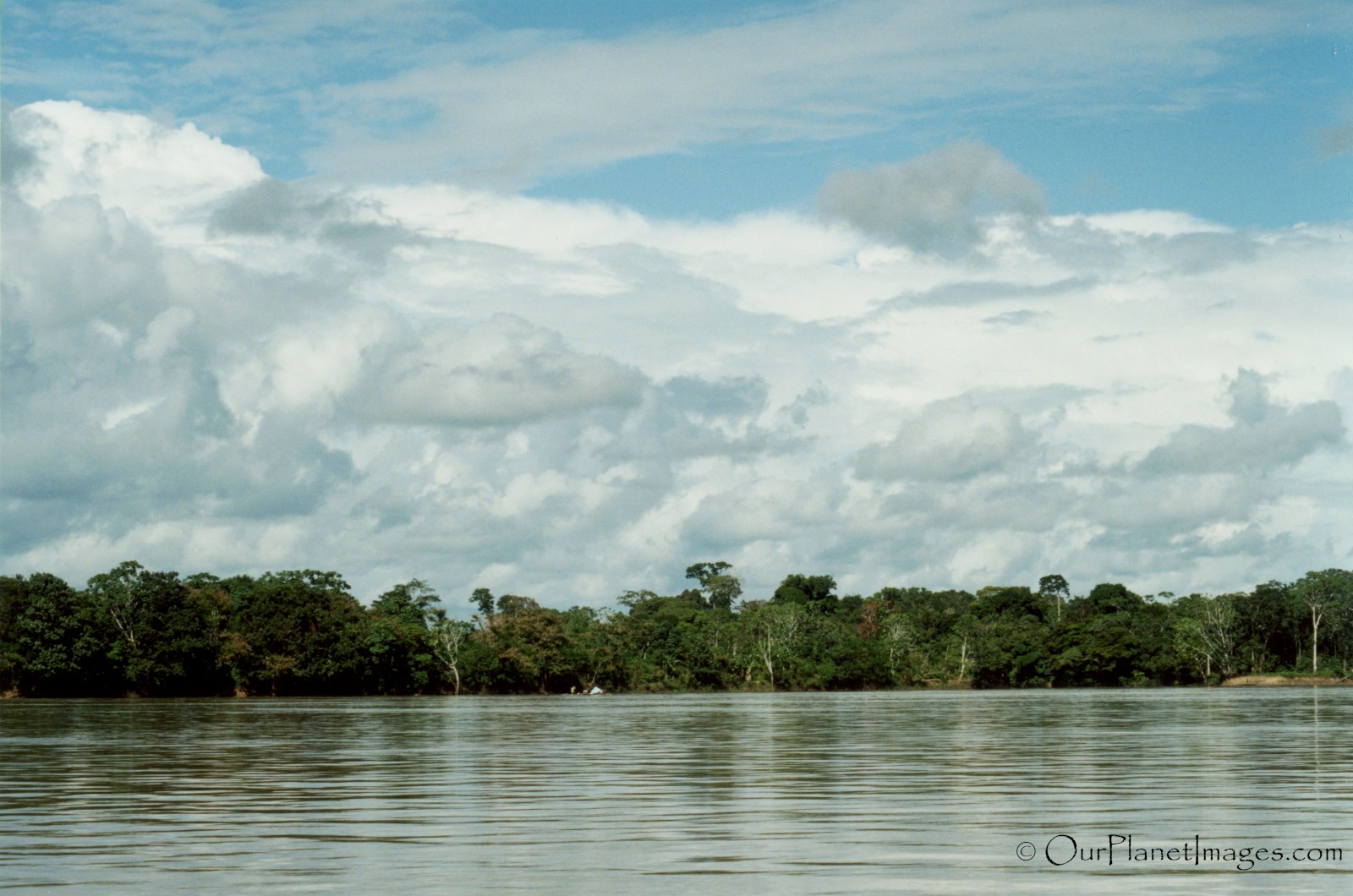

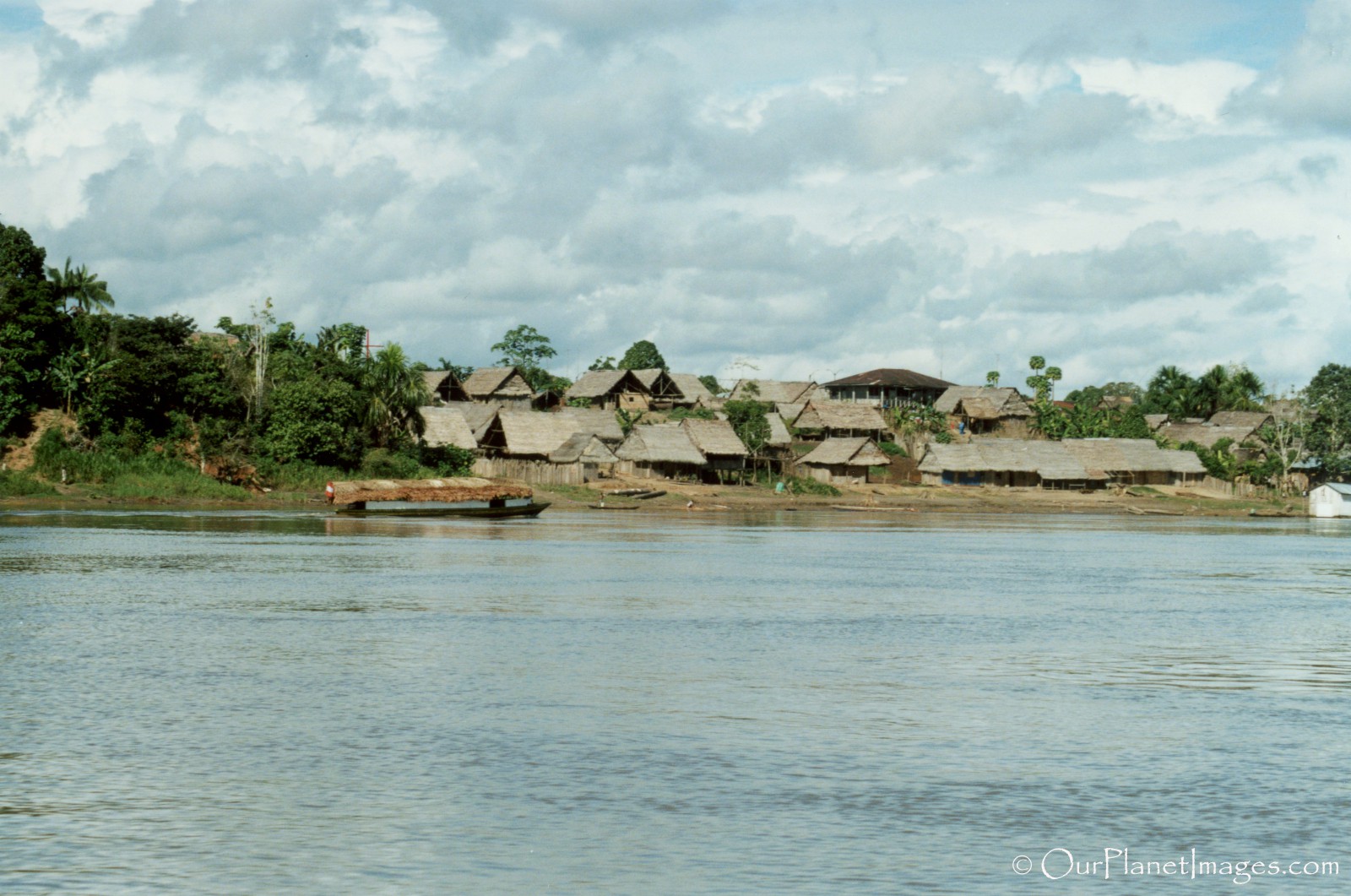
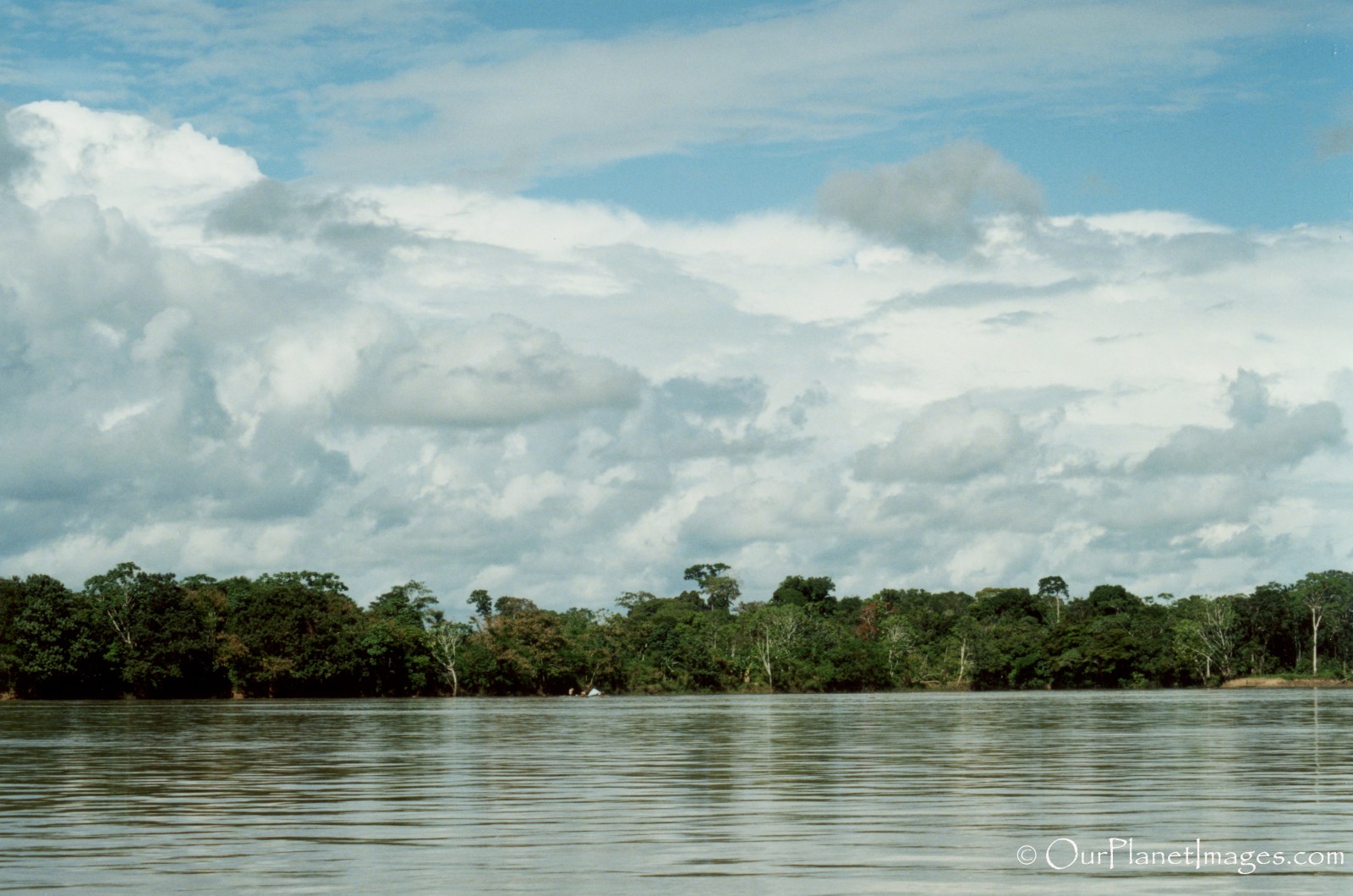
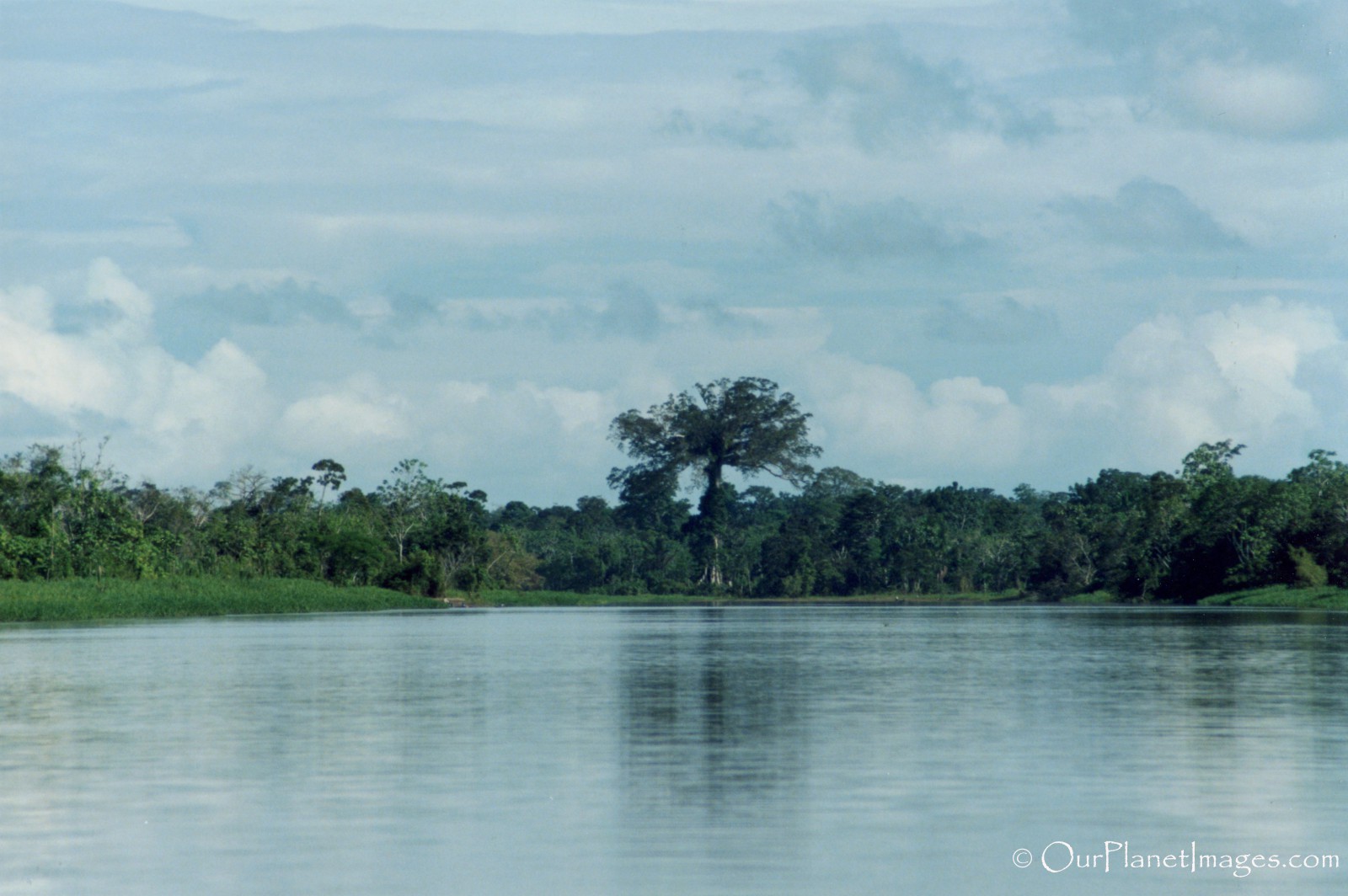
Amazon River Tributaries
Leaving the Amazon and entering the Tahuayo River, the river became narrower and the water was browner. Now it was much easier to see the jungle lined river bank. I know that this river is frequently traveled but traveling along the river without seeing any other boats and looking at the thick jungle all around me gave me the feeling that this part of the world was untouched by humans. I knew that I was seeing a part of the world that only a very small percentage of people in the world have ever seen.
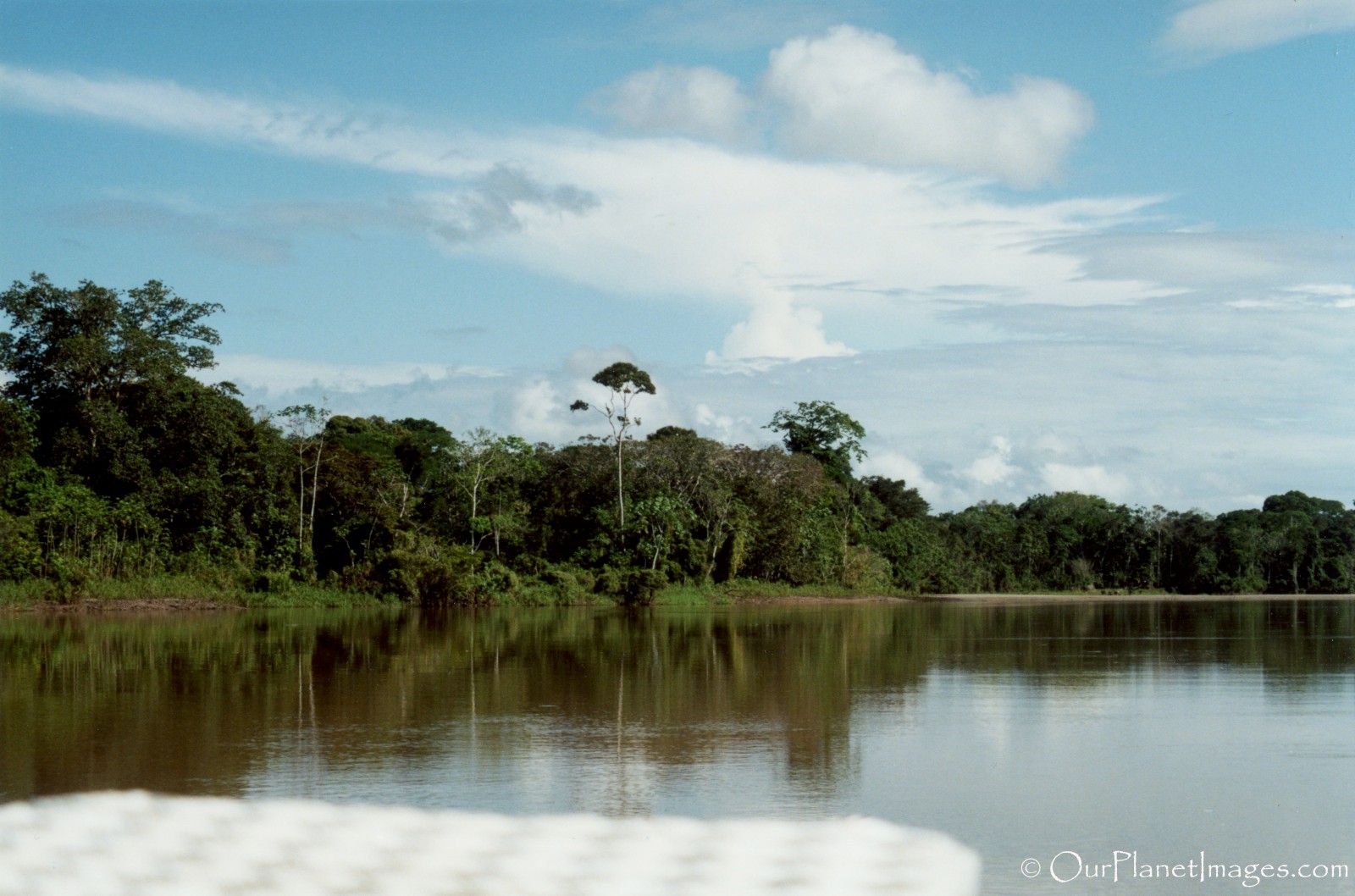

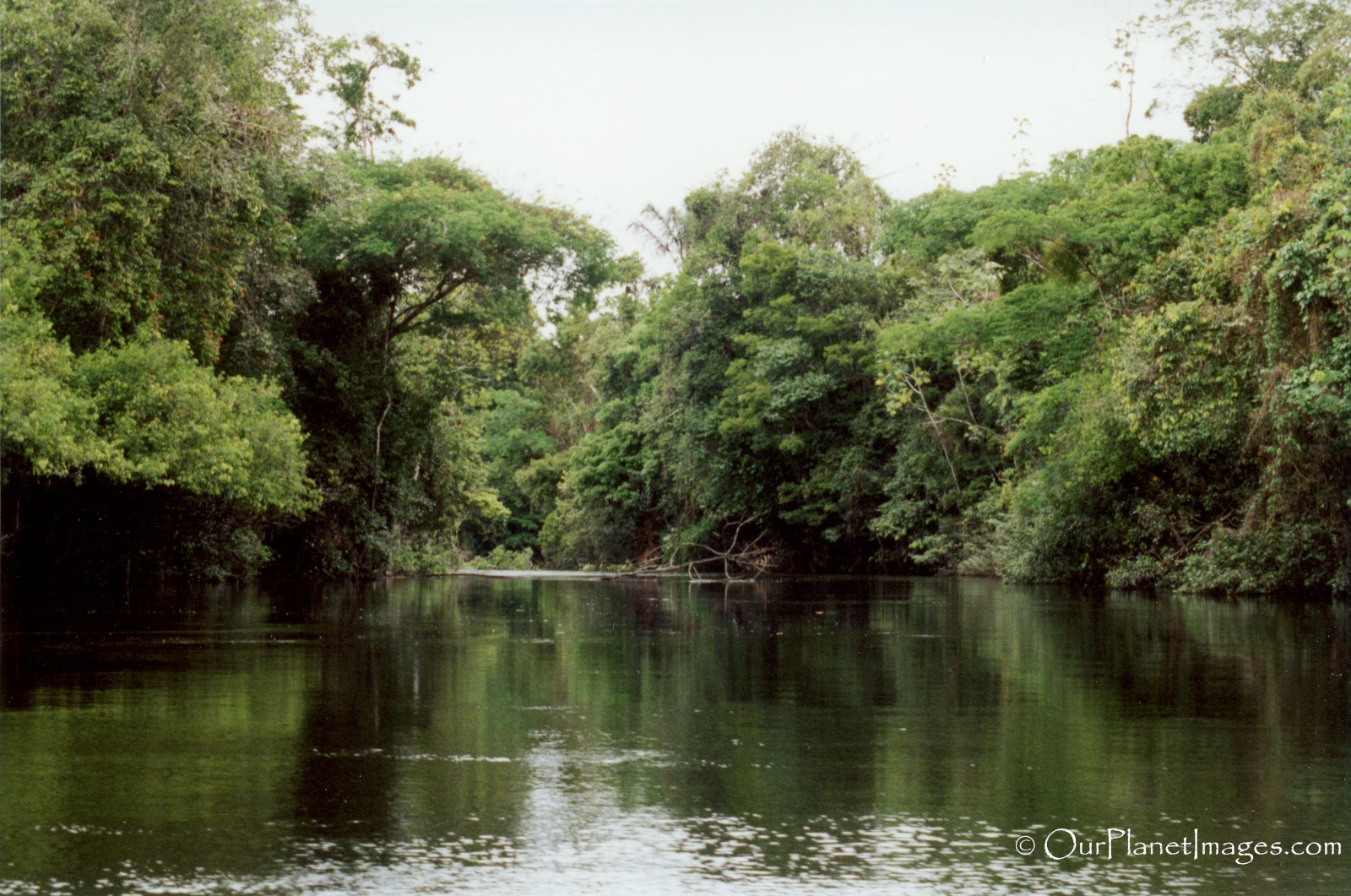
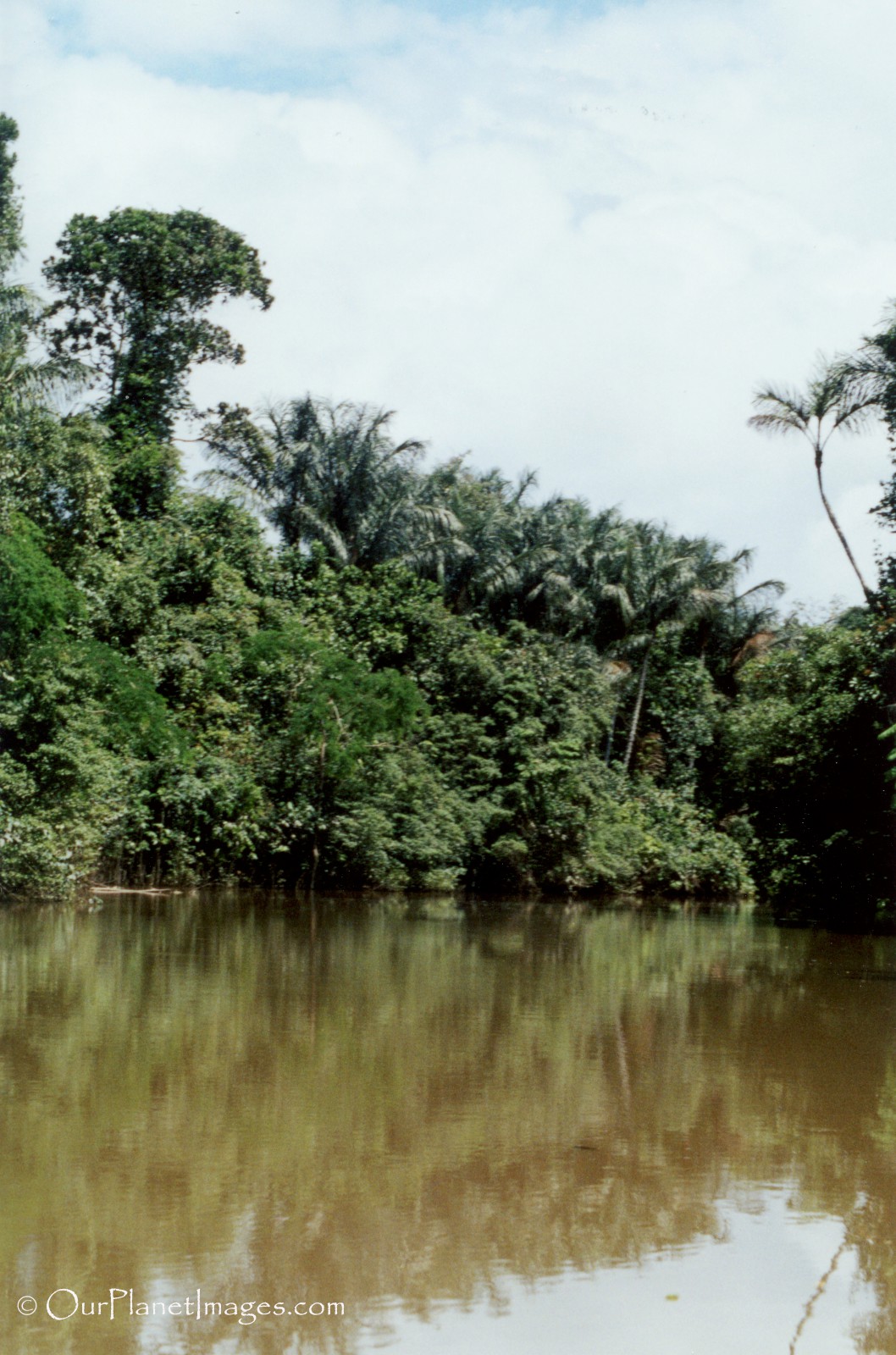
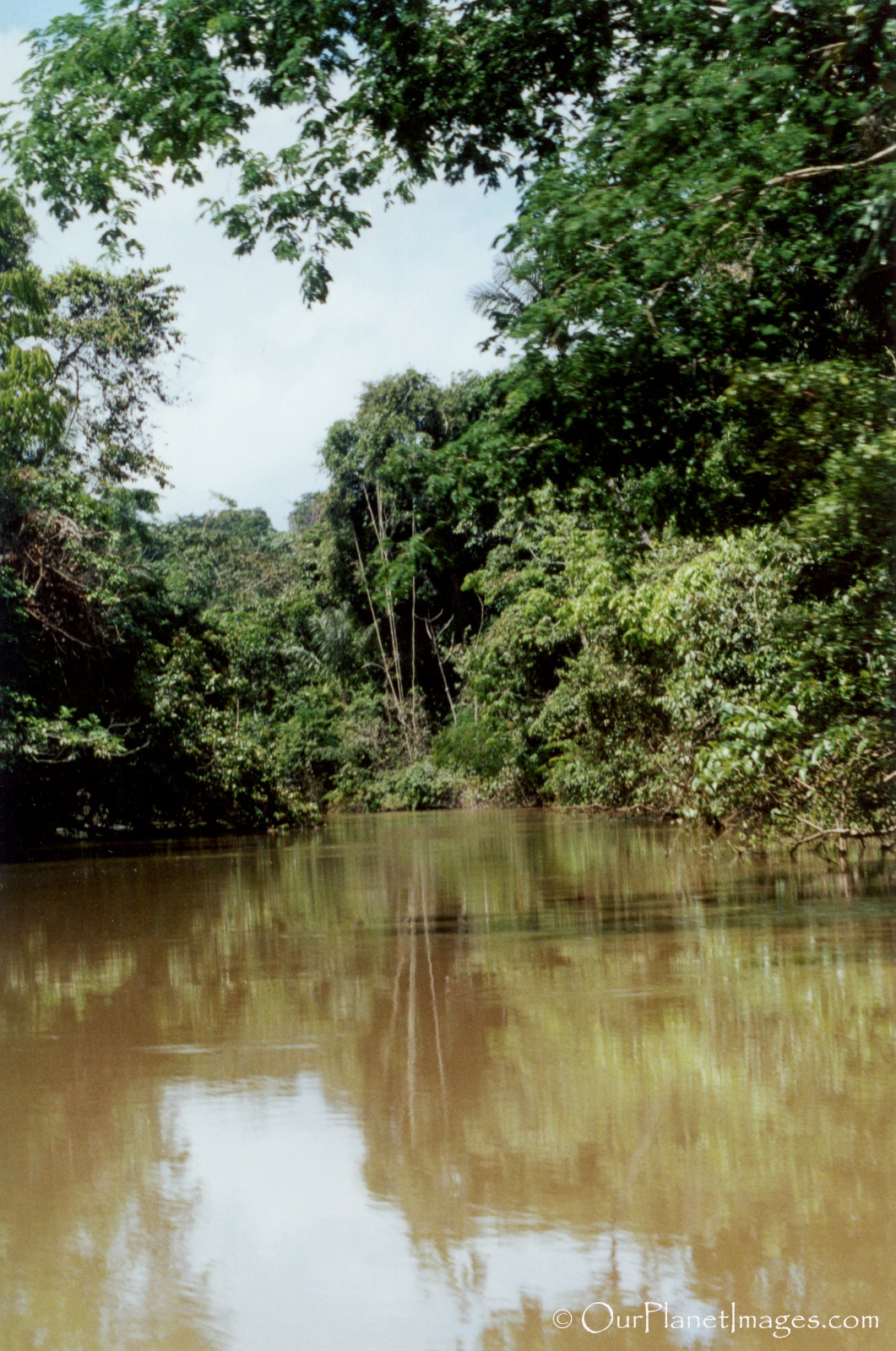
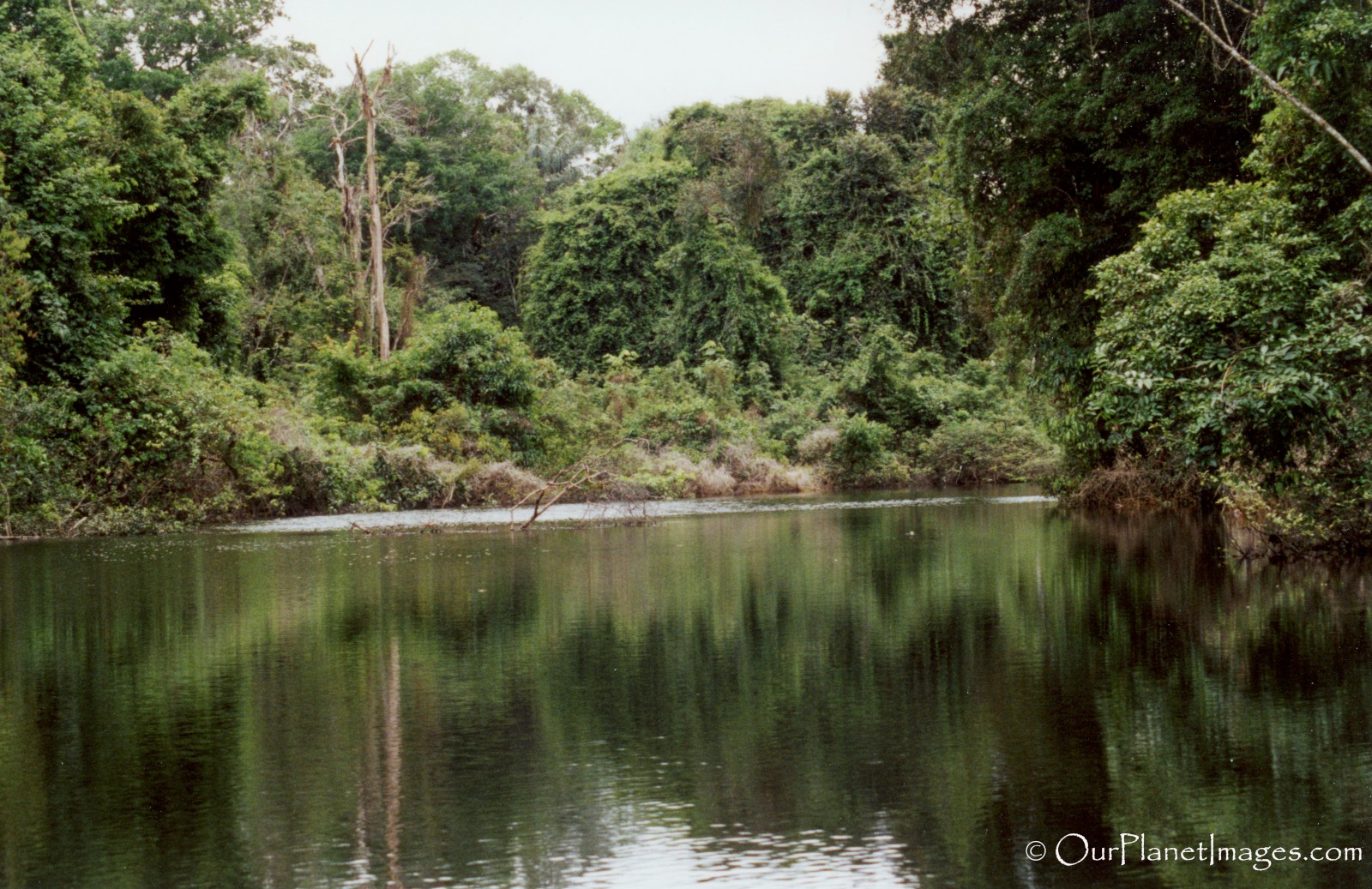
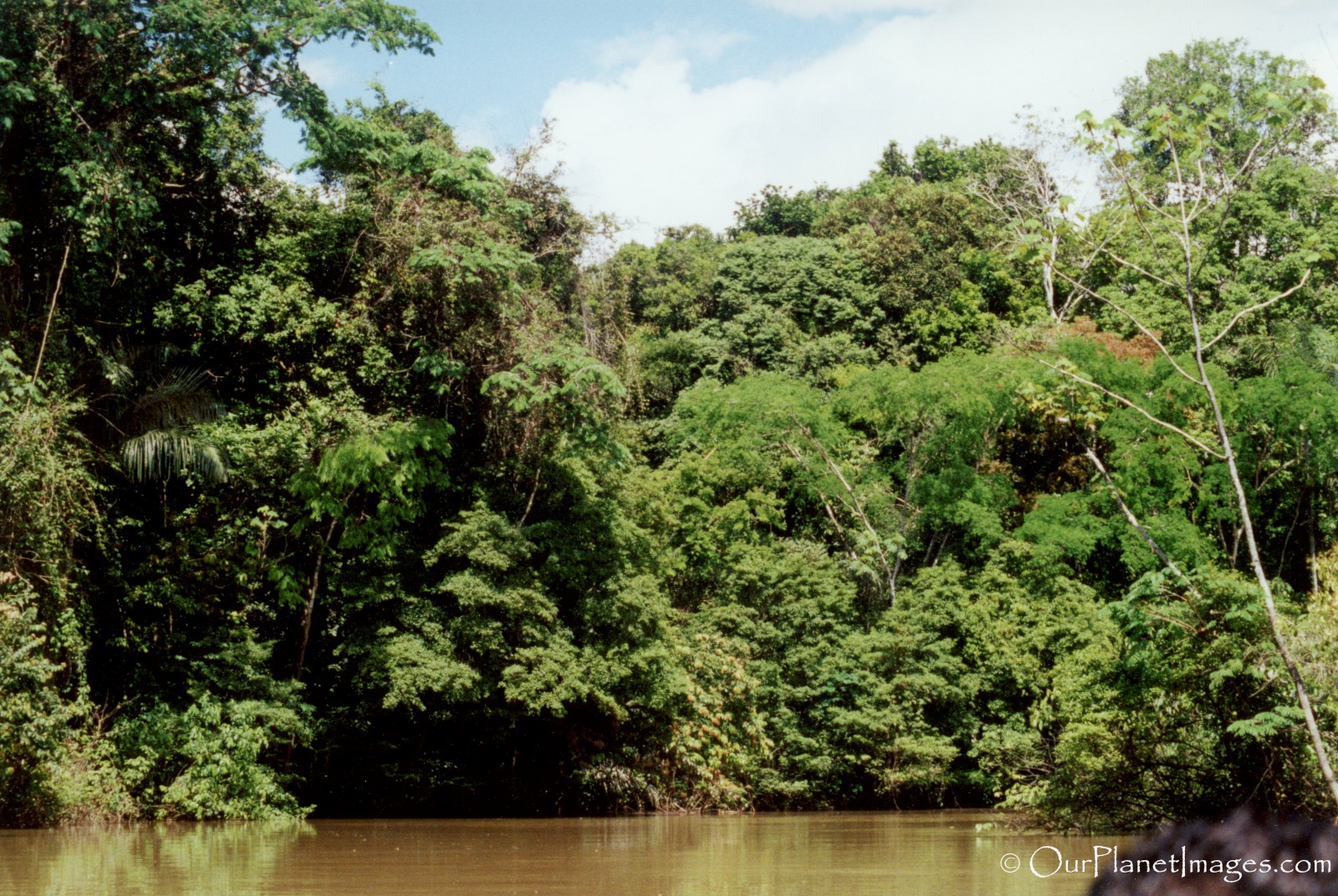
People of the Amazon
Even in the remote portions of the Amazon there are people living in the Jungle. My trip was primarily intended to see the nature and wildlife of the Amazon but we did stop at a couple of villages. The large villages were better developed than small villages but there were a lot of similarities.
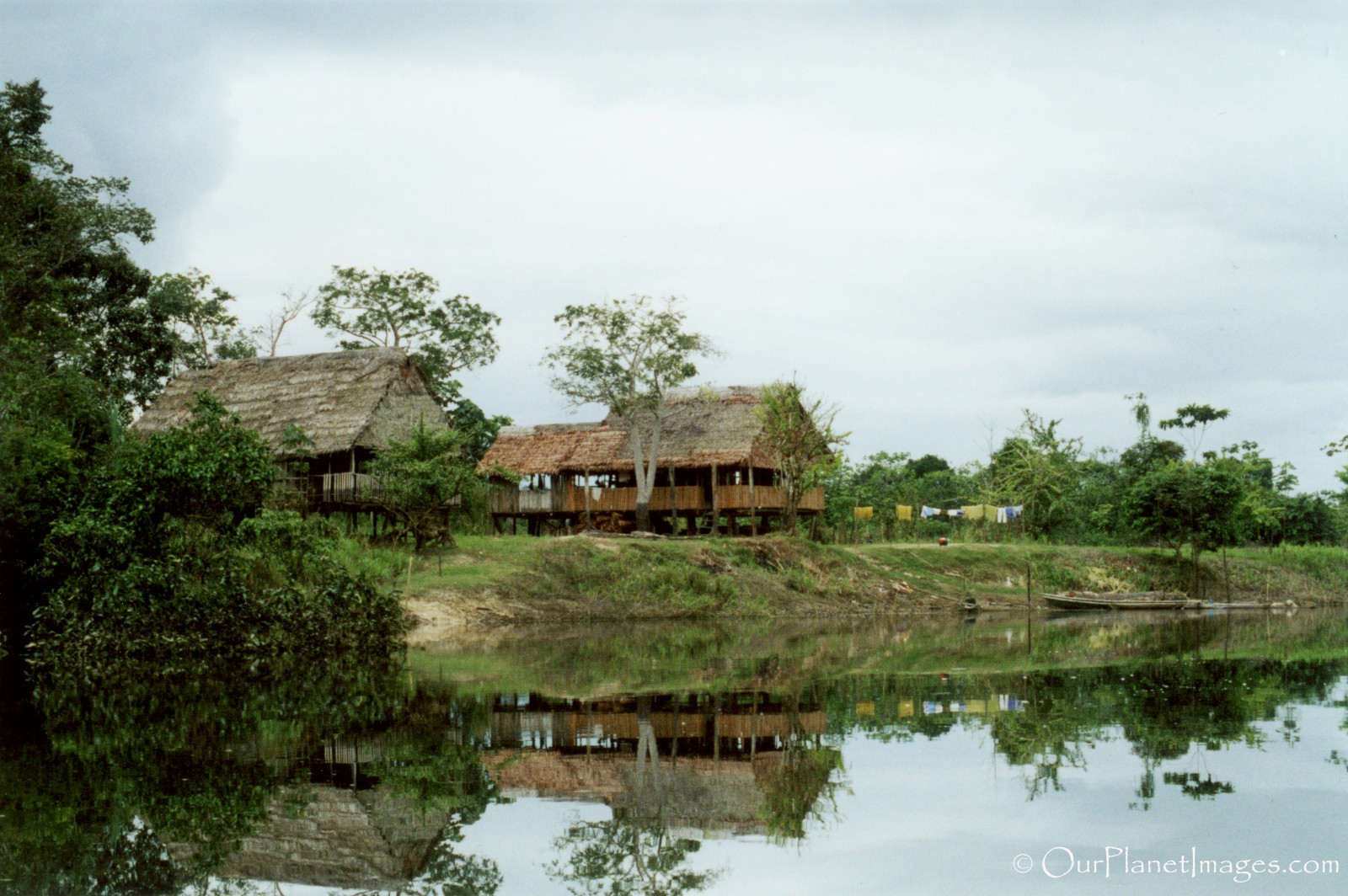
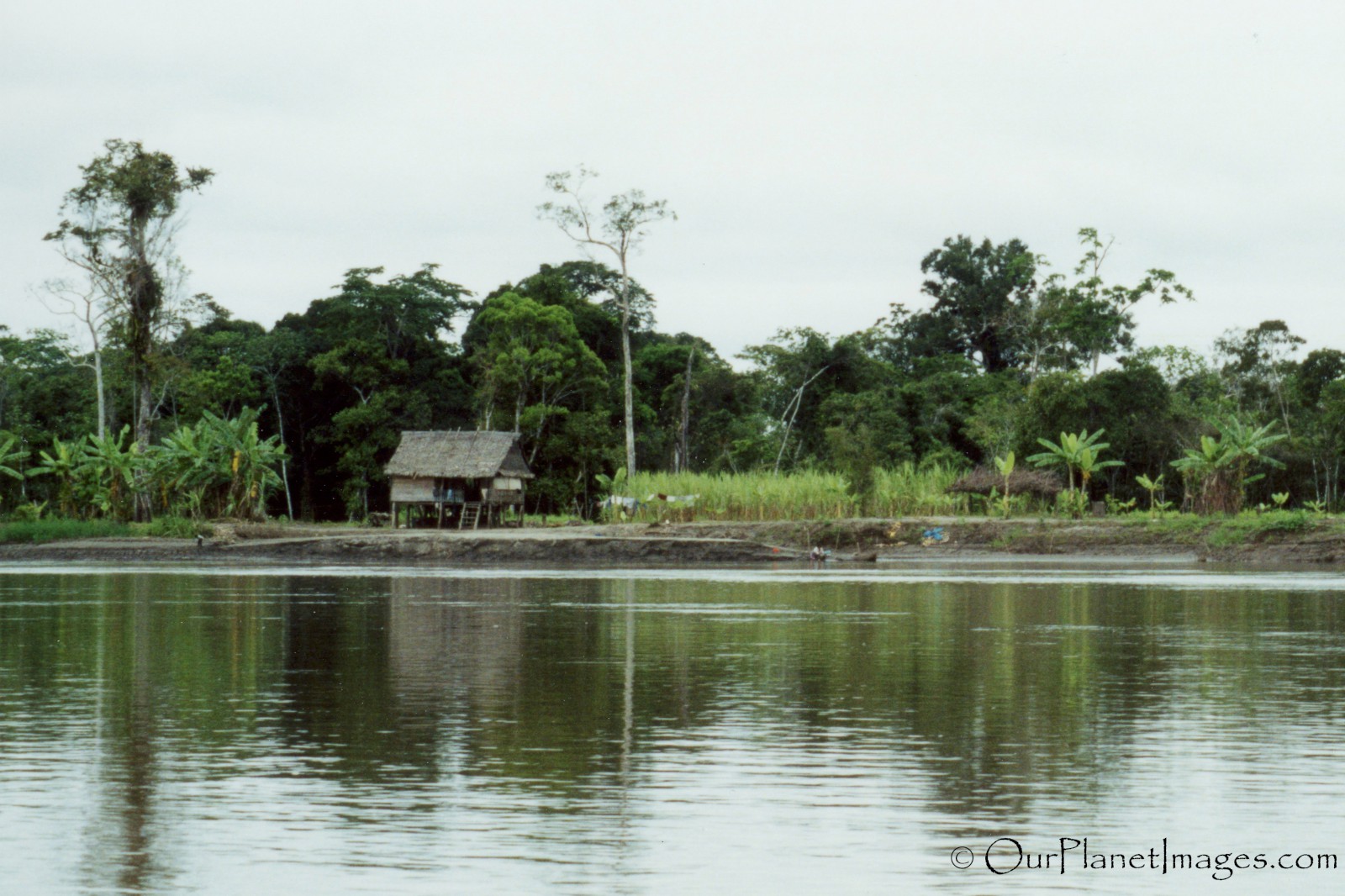
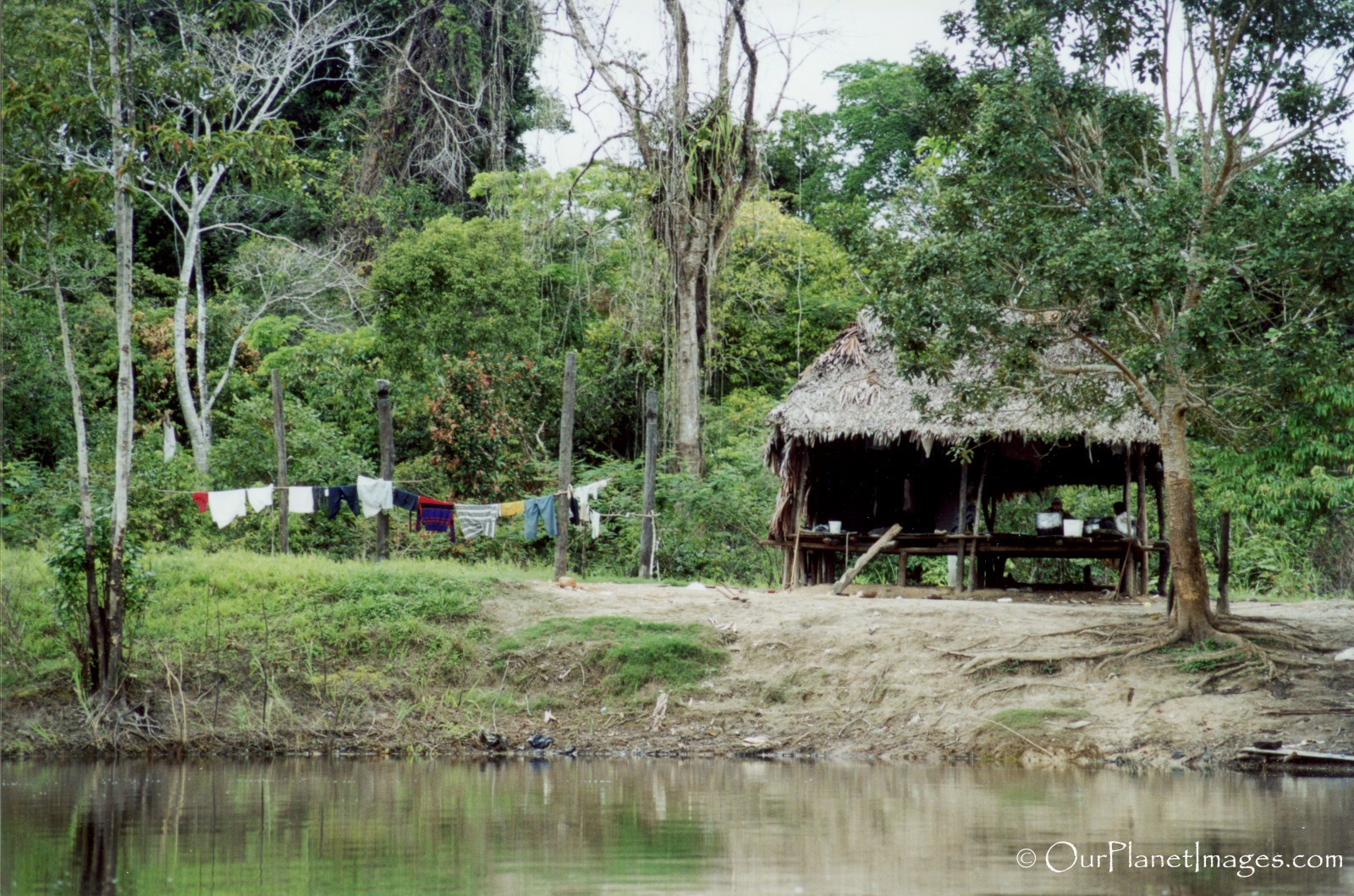
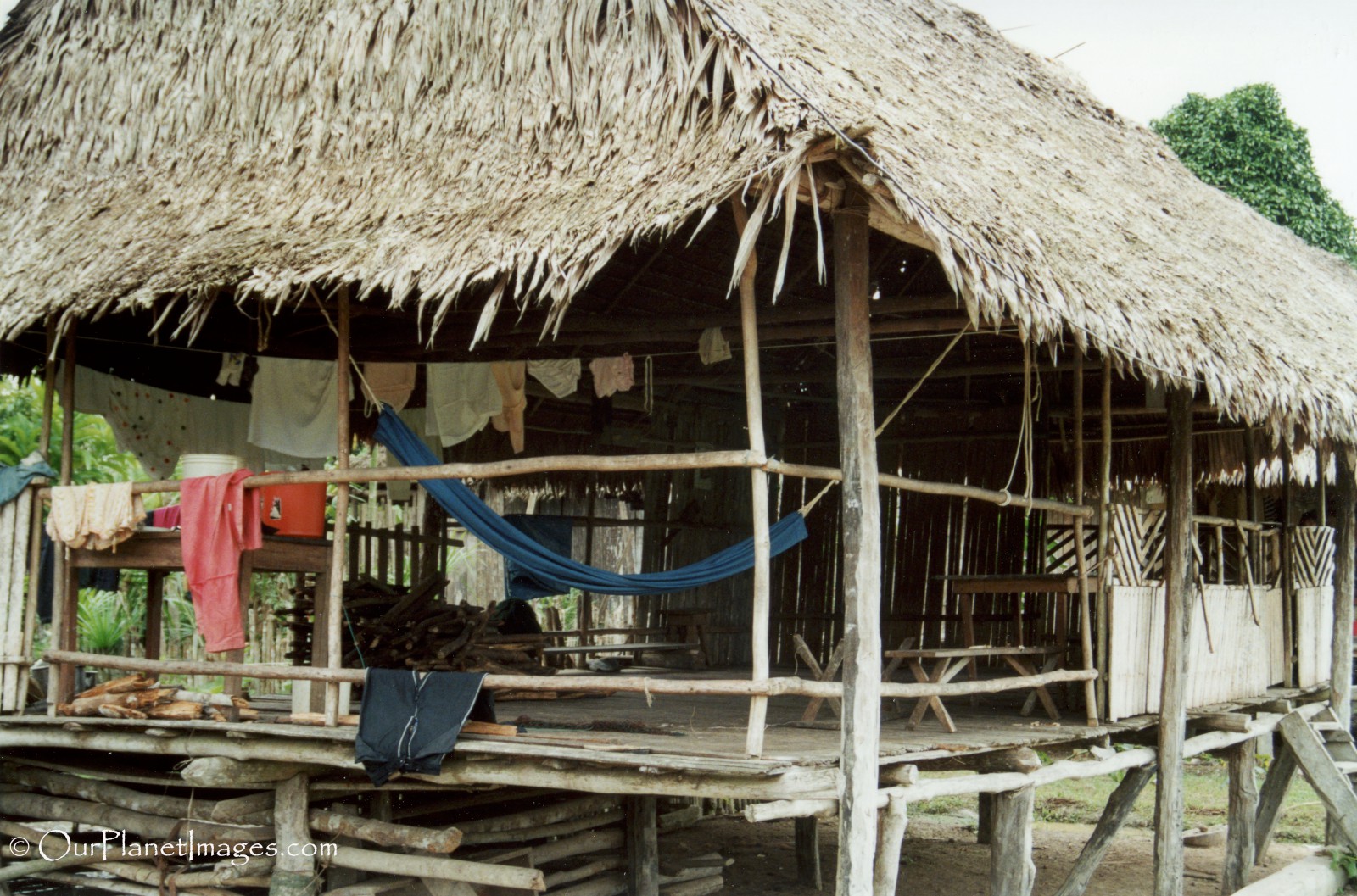
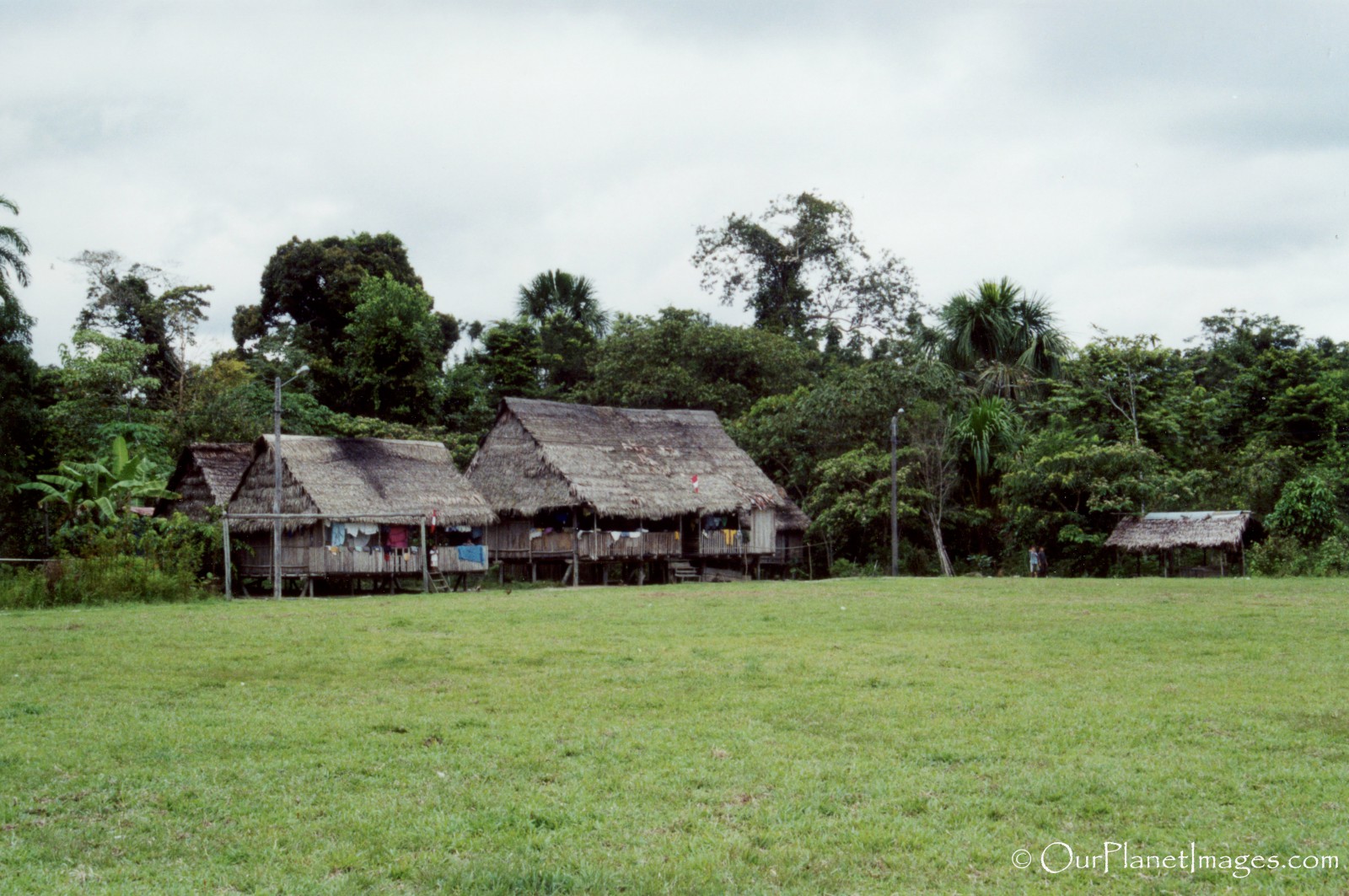
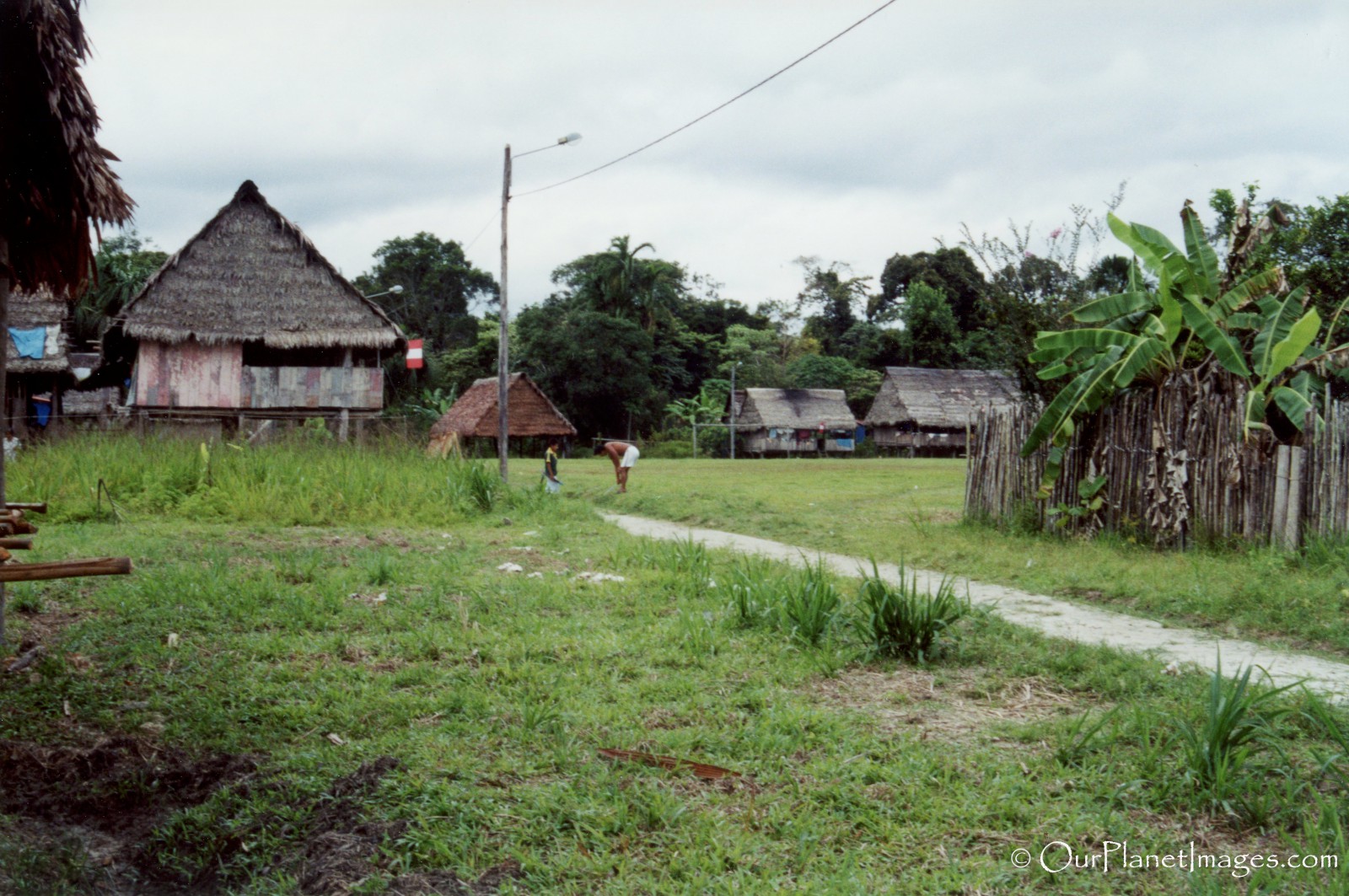
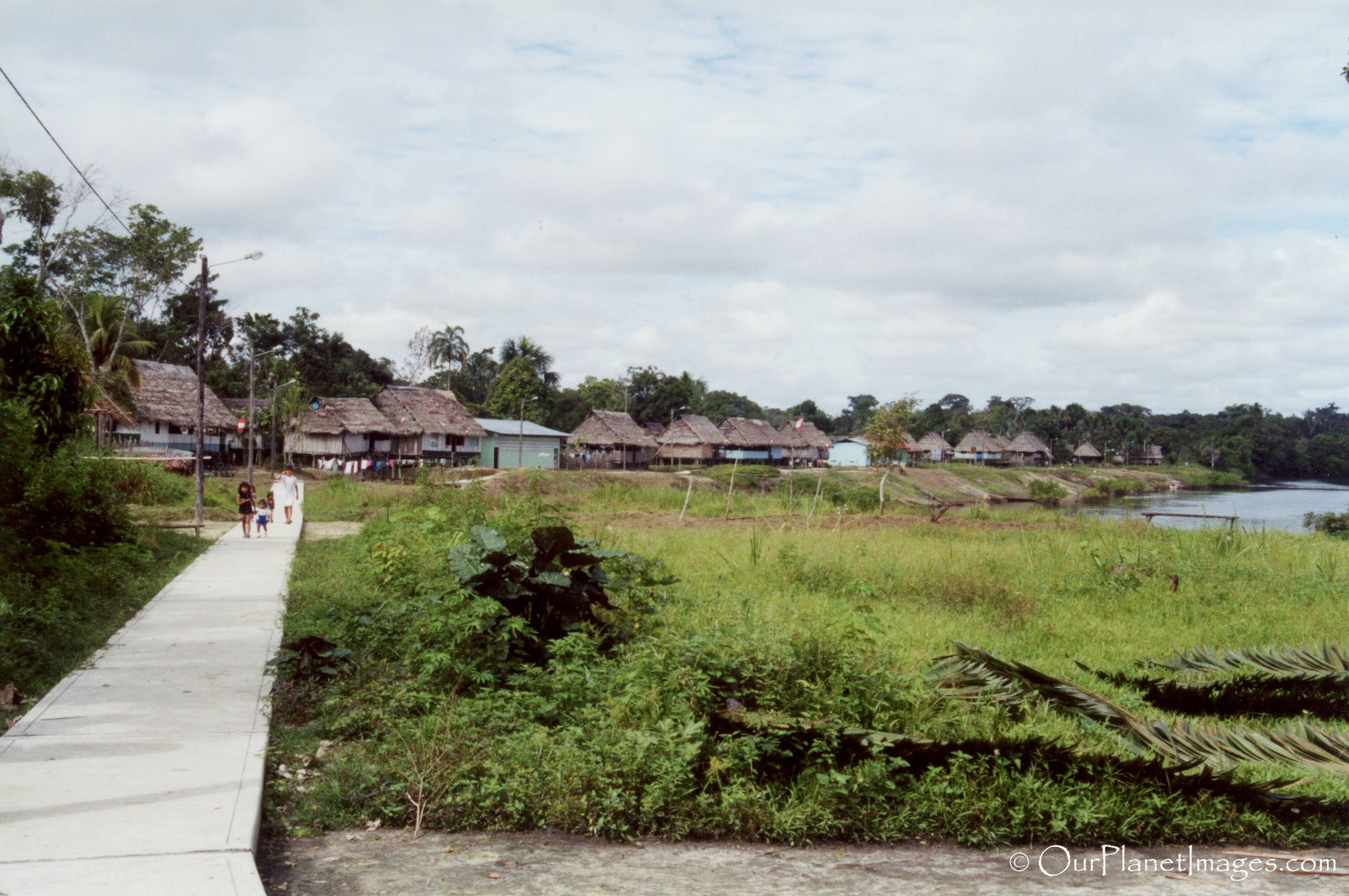
Most of the people live a lifestyle that integrates both traditional and modern elements with very few living in complete seclusion from the world. Many of the villages take advantage of the ecotourism and sell hand crafted items to the tourists.
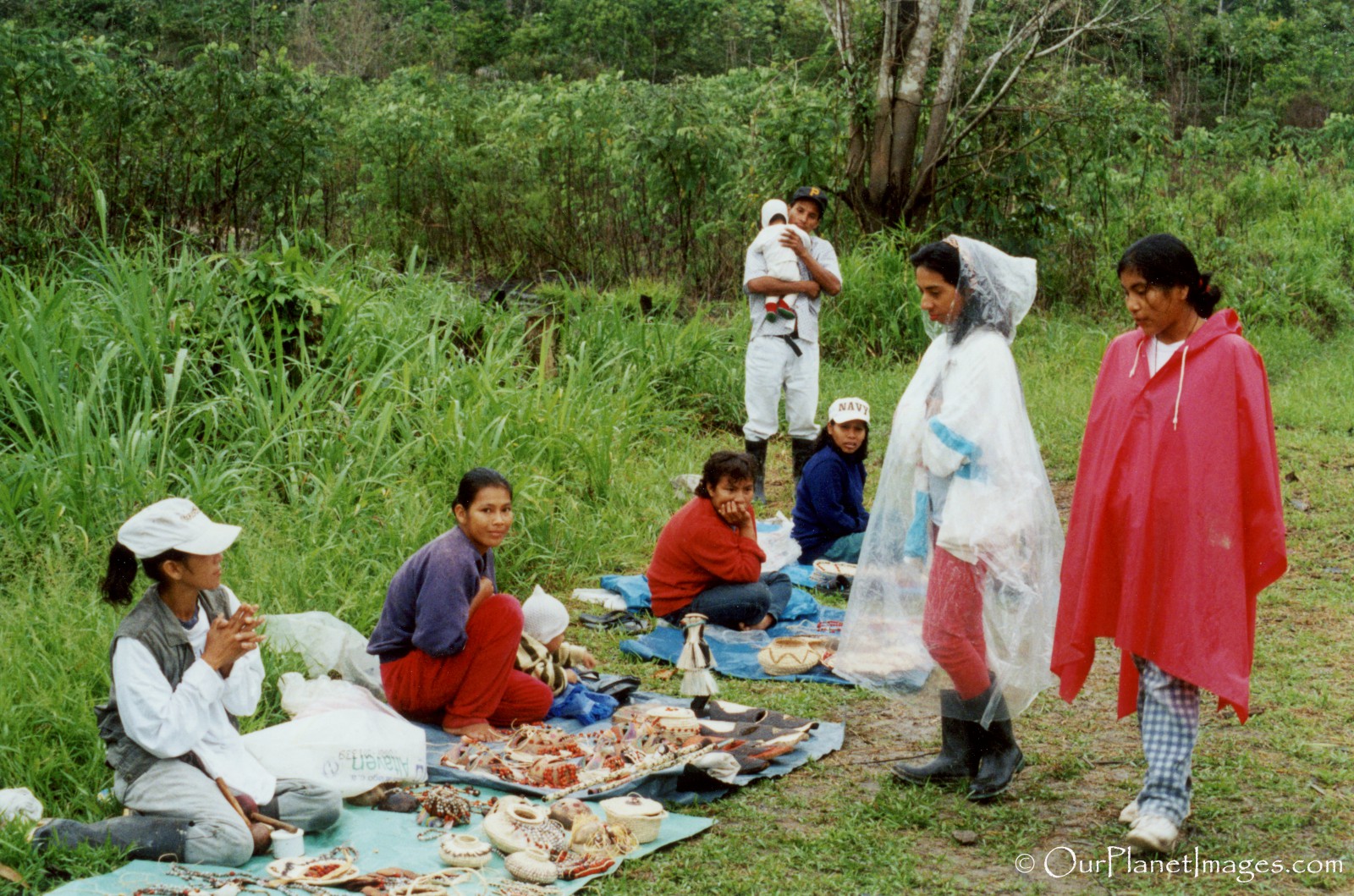
Many of the people used small canoes when fishing or going short distances. Some people paddled and others used small motors on the back of the canoe.
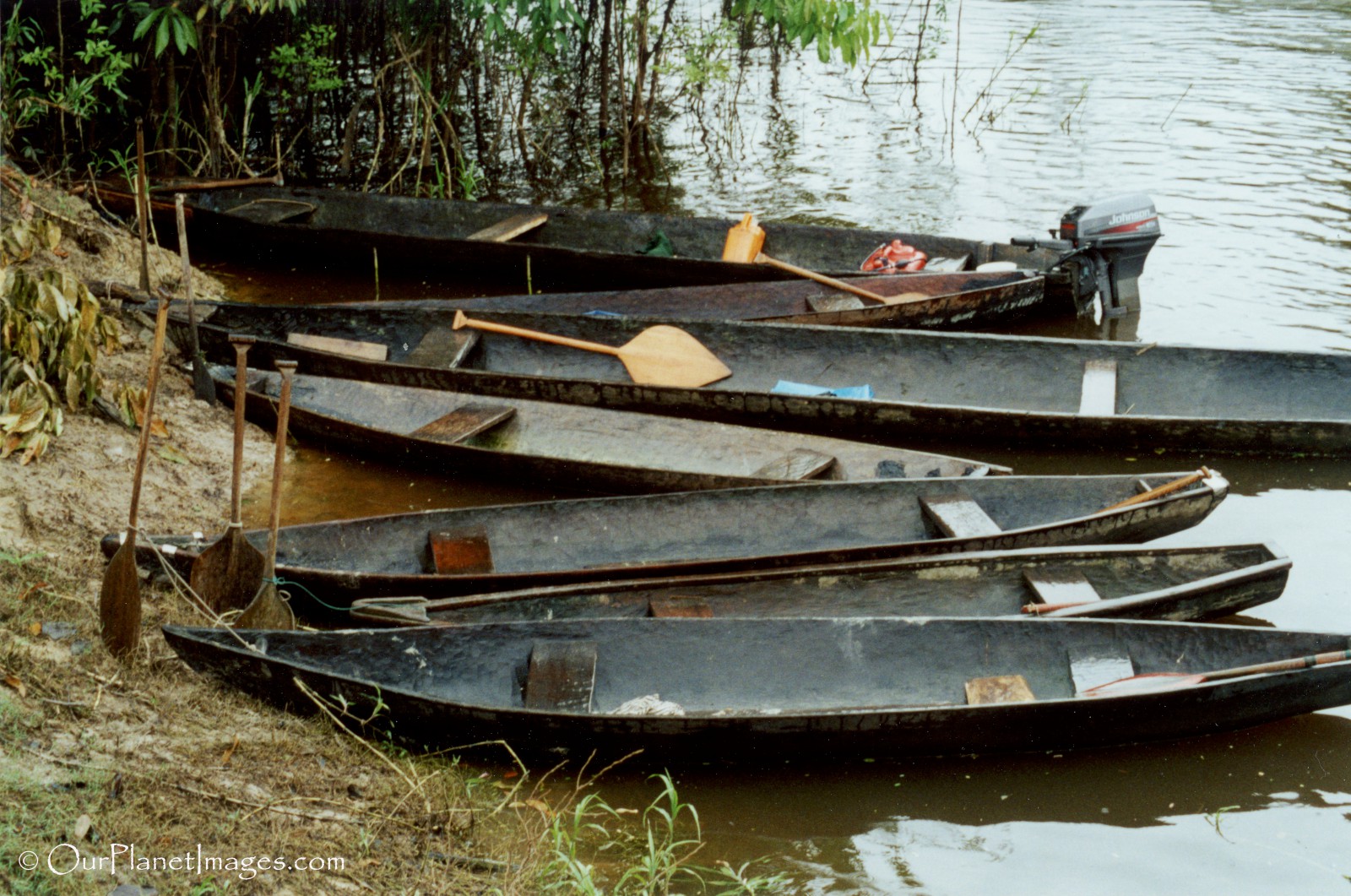
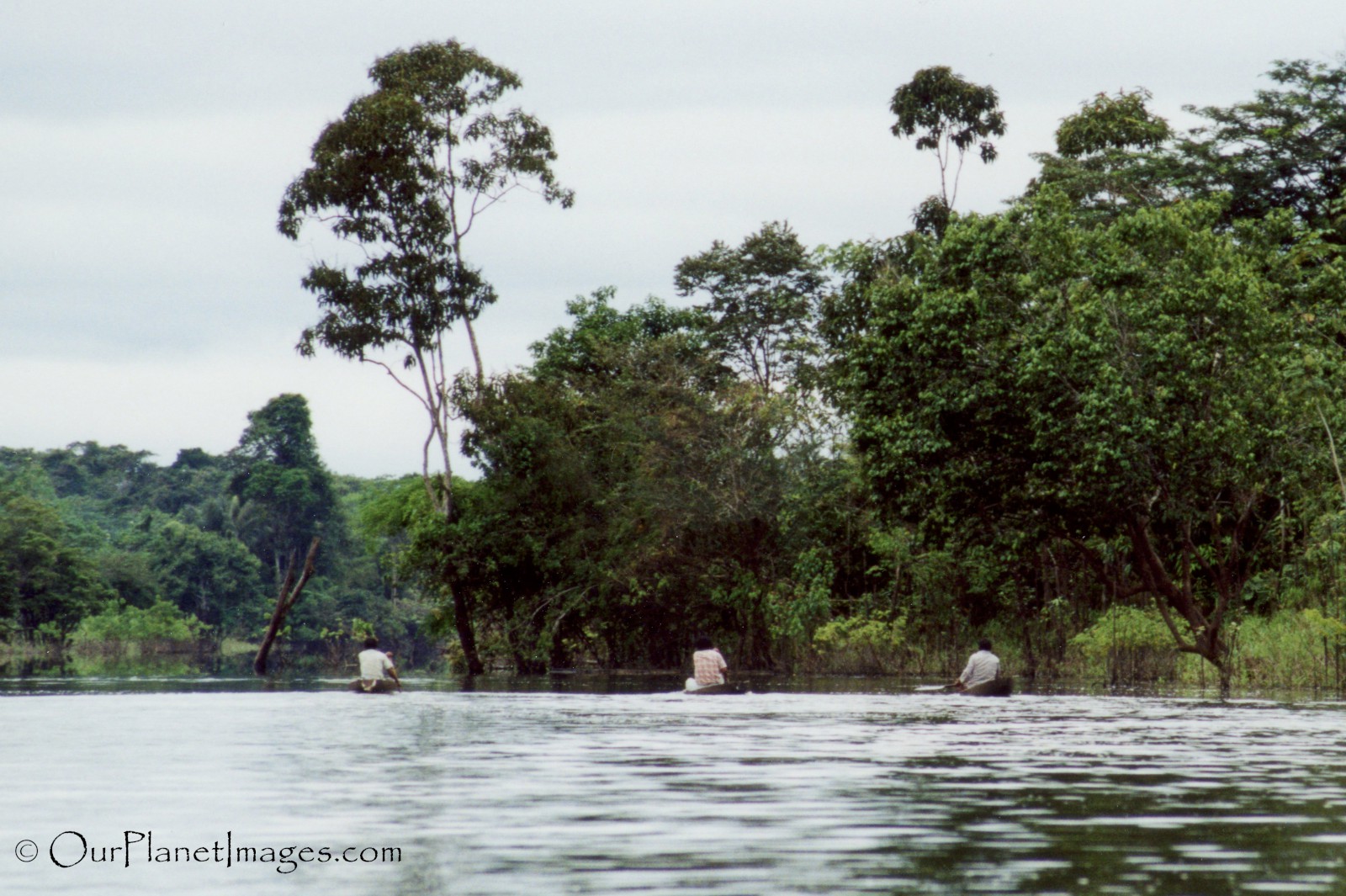
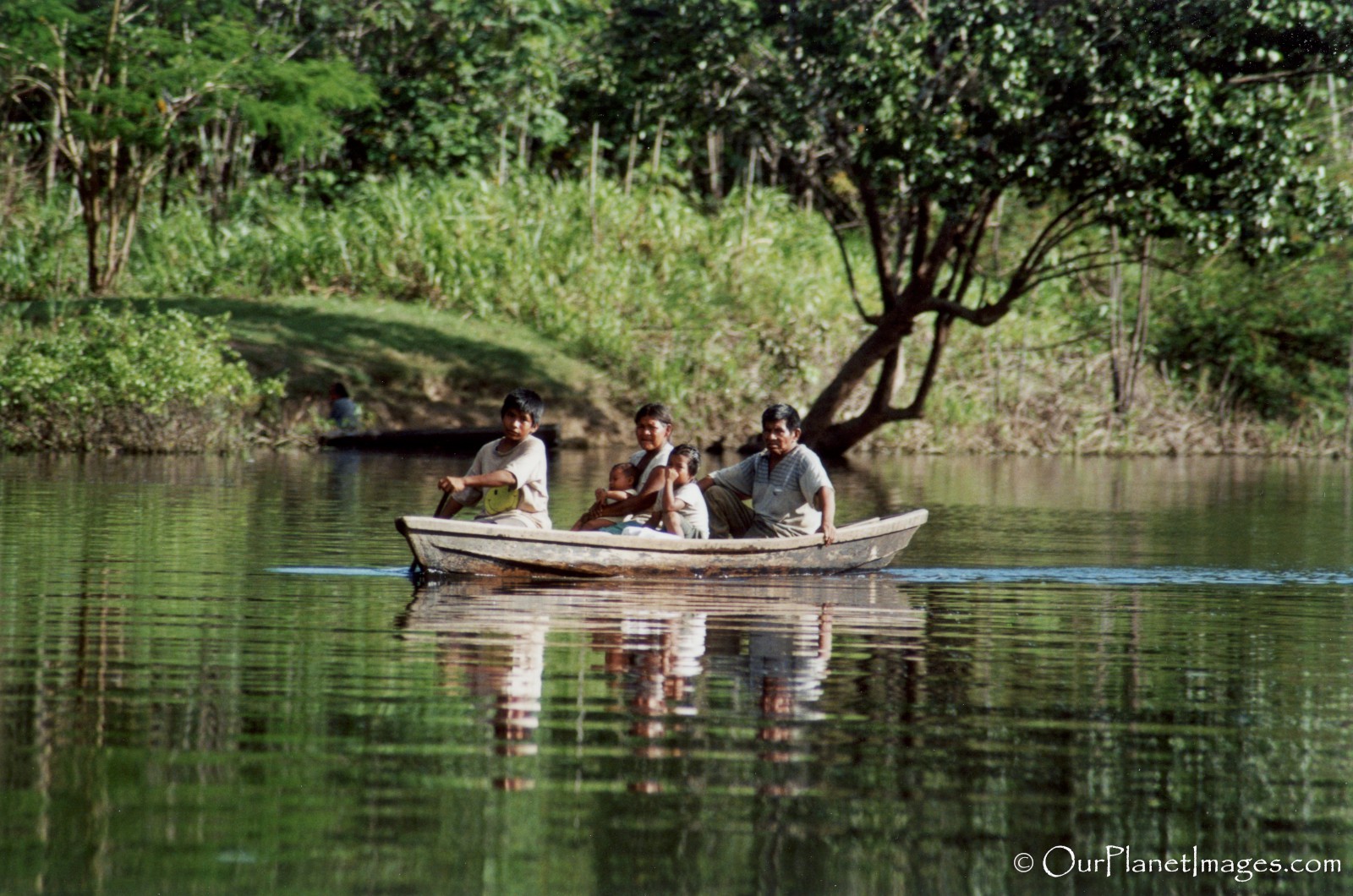
There are river taxis that transport people between villages or from villages to Iquitos.
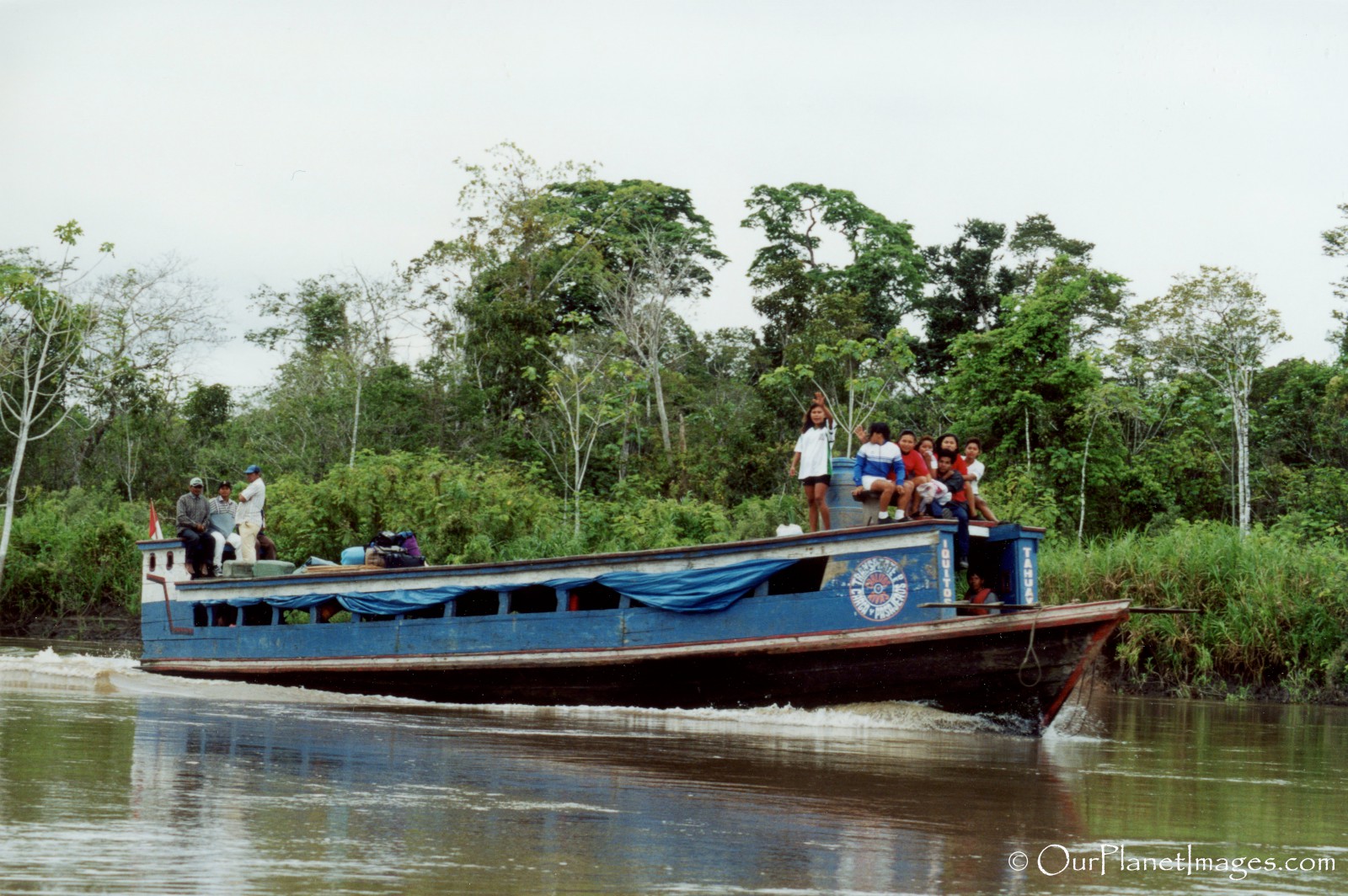
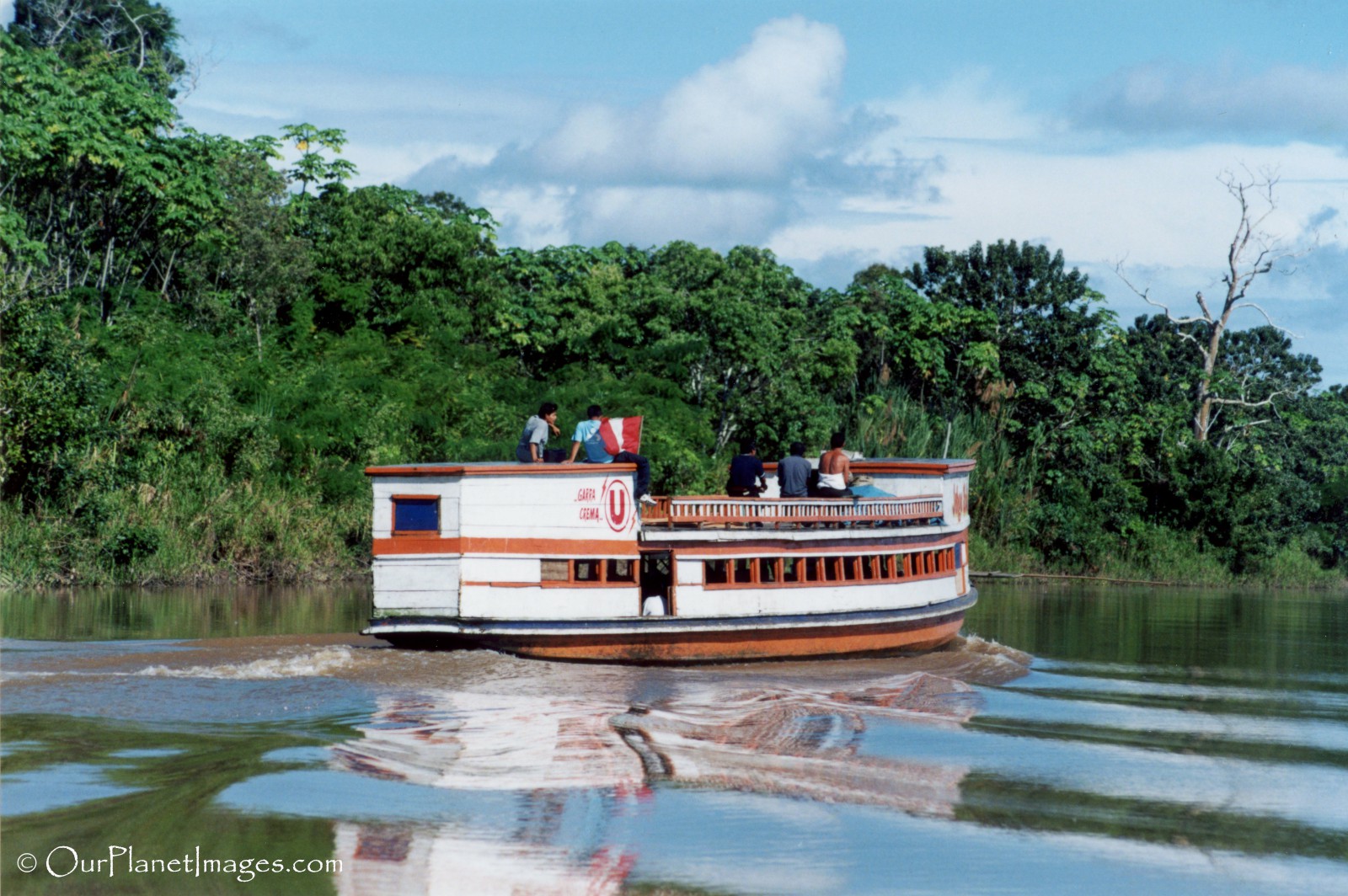
Amazonia Expeditions – Tahuayo Lodge
As I stated before, my main purpose for this trip was to see the Amazon Rainforest in its purist state and the Tahuayo Lodge was exactly the type of place where I wanted to stay.
The lodge is very remote, it is 140 nautical km from the nearest road in Iquitos and Iquitos is one of the most remote places on earth. Being remote is good if your goal is to experience nature and wildlife in the Amazon Rainforest.
The Tahuayo Lodge is not a resort or a hotel, it is a rustic lodge designed for adventurous travelers. All of the cabins and dining hall are raised above the rainforest floor on stilts and connected to each other by a raised boardwalk. It may look silly in the dry season but it is necessary when the flood water rise during the wet season.
There is no electricity at the lodge which means there is hot water, no AC and no fans in the rooms. At the time of my visit there was only a generator which was used to pump water to a tank that provided water for showers and toilets.
There was also no communication systems at the lodge. During my stay the temperature unexpectedly dropped a few degrees which was nice for going on jungle hikes. I asked the camp director “how long will it stay cooler?” He replied “Until it warms up”.
Being in a remote place in the Amazon Rainforest is not like remote locations in the Andes, Costa Rica or Africa. Being remote in the Amazon Rainforest means being surrounded by impenetrable jungle but it is the best way to see one of the still untouched places on the planet.
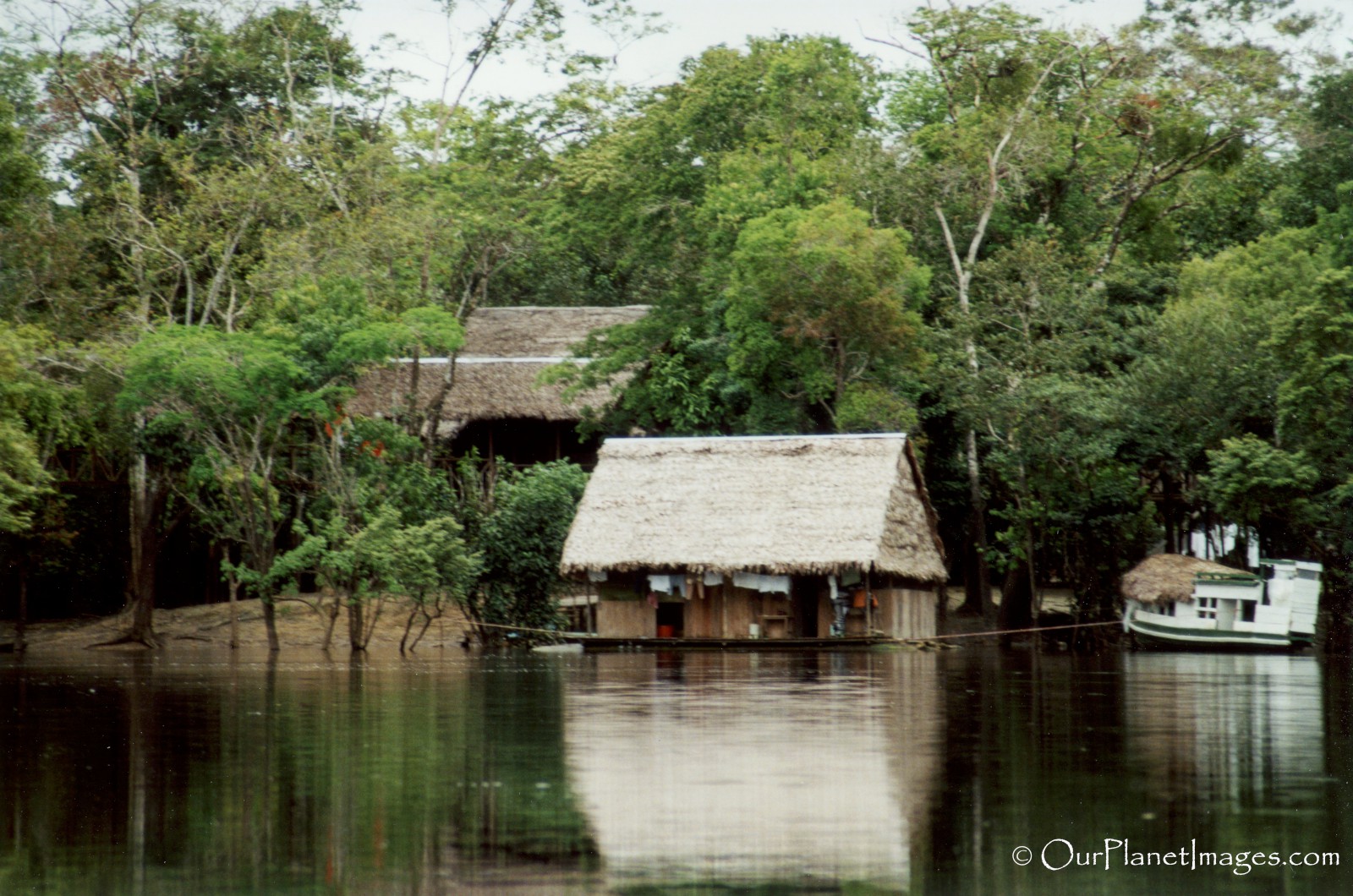
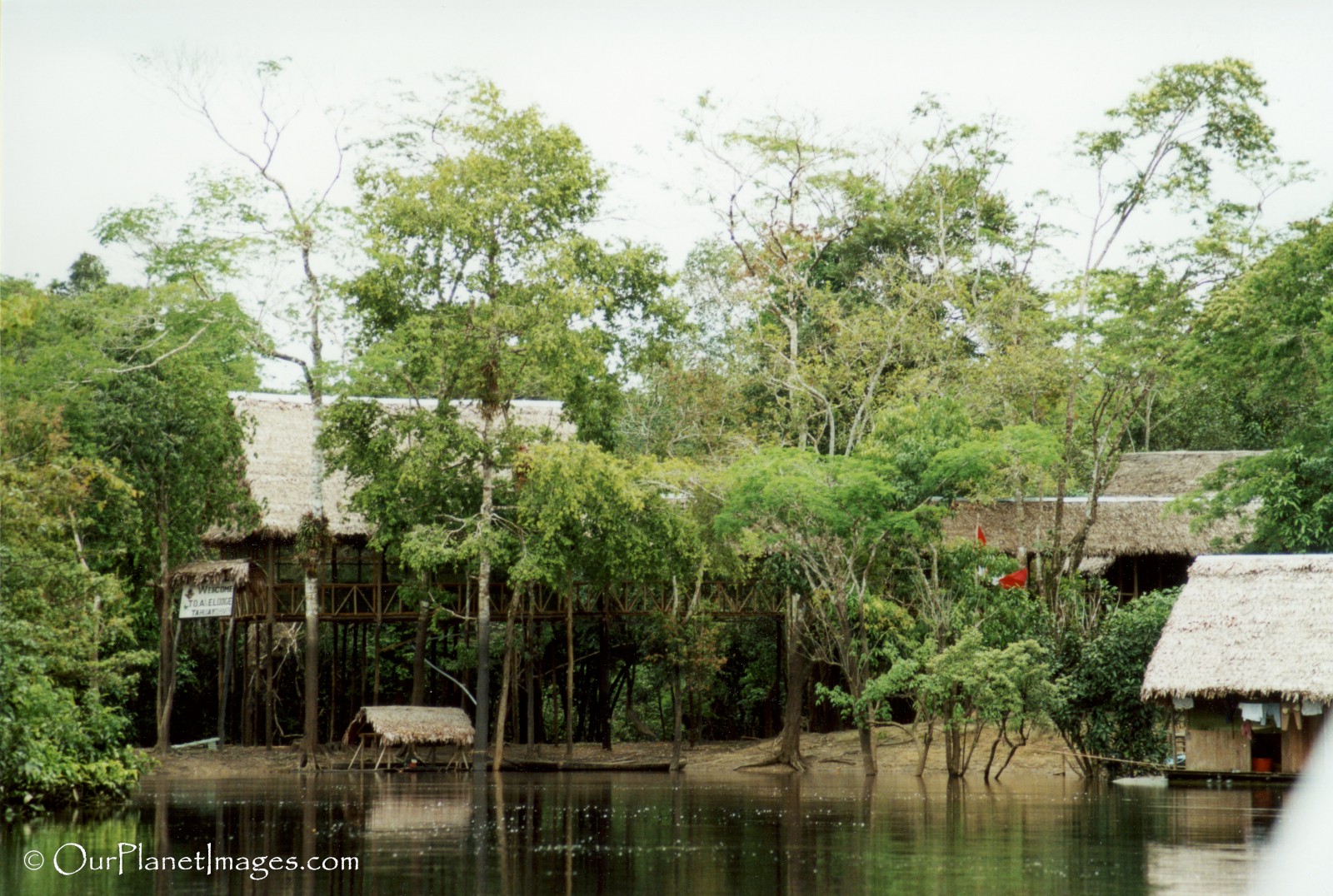
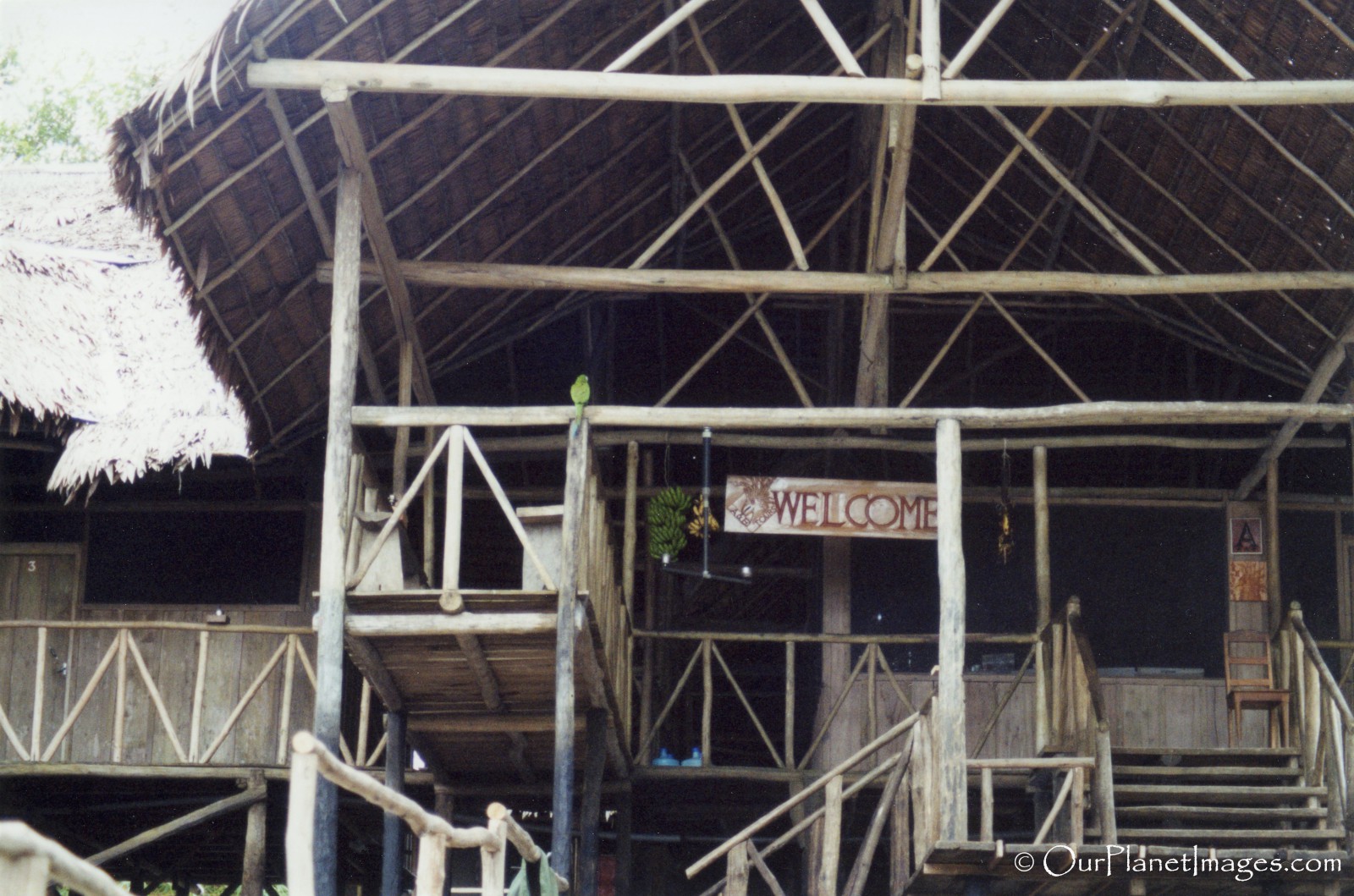
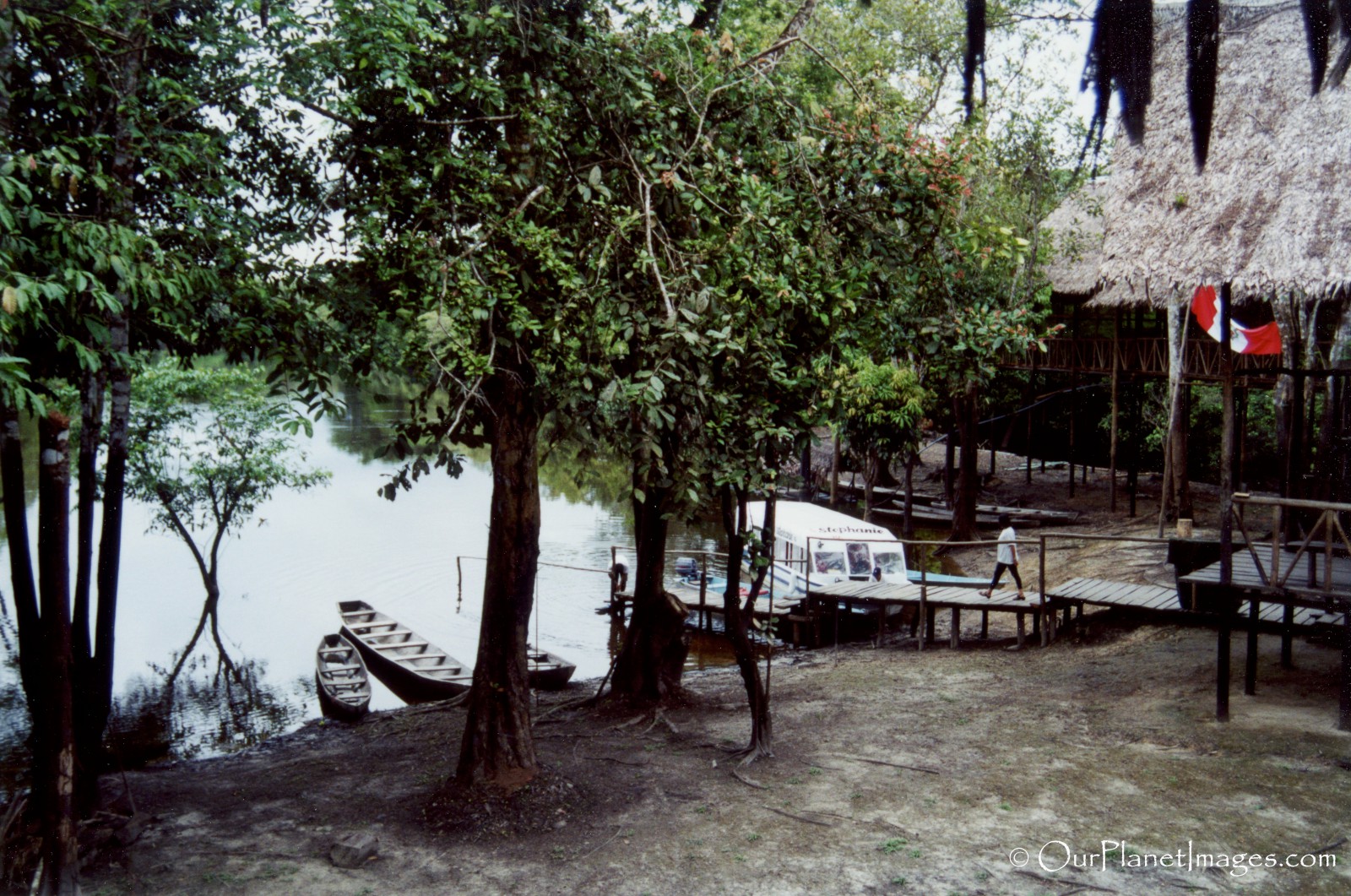
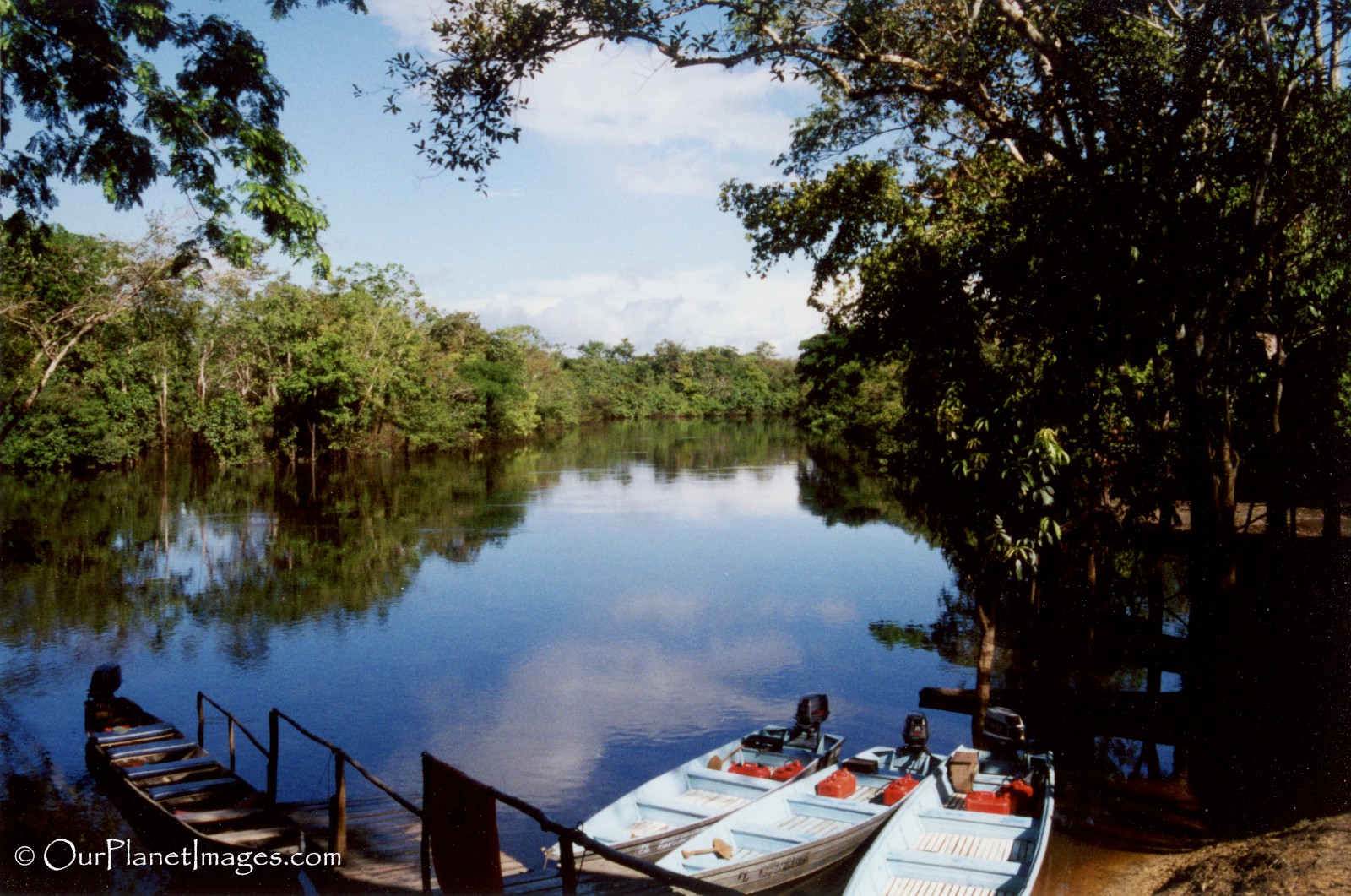
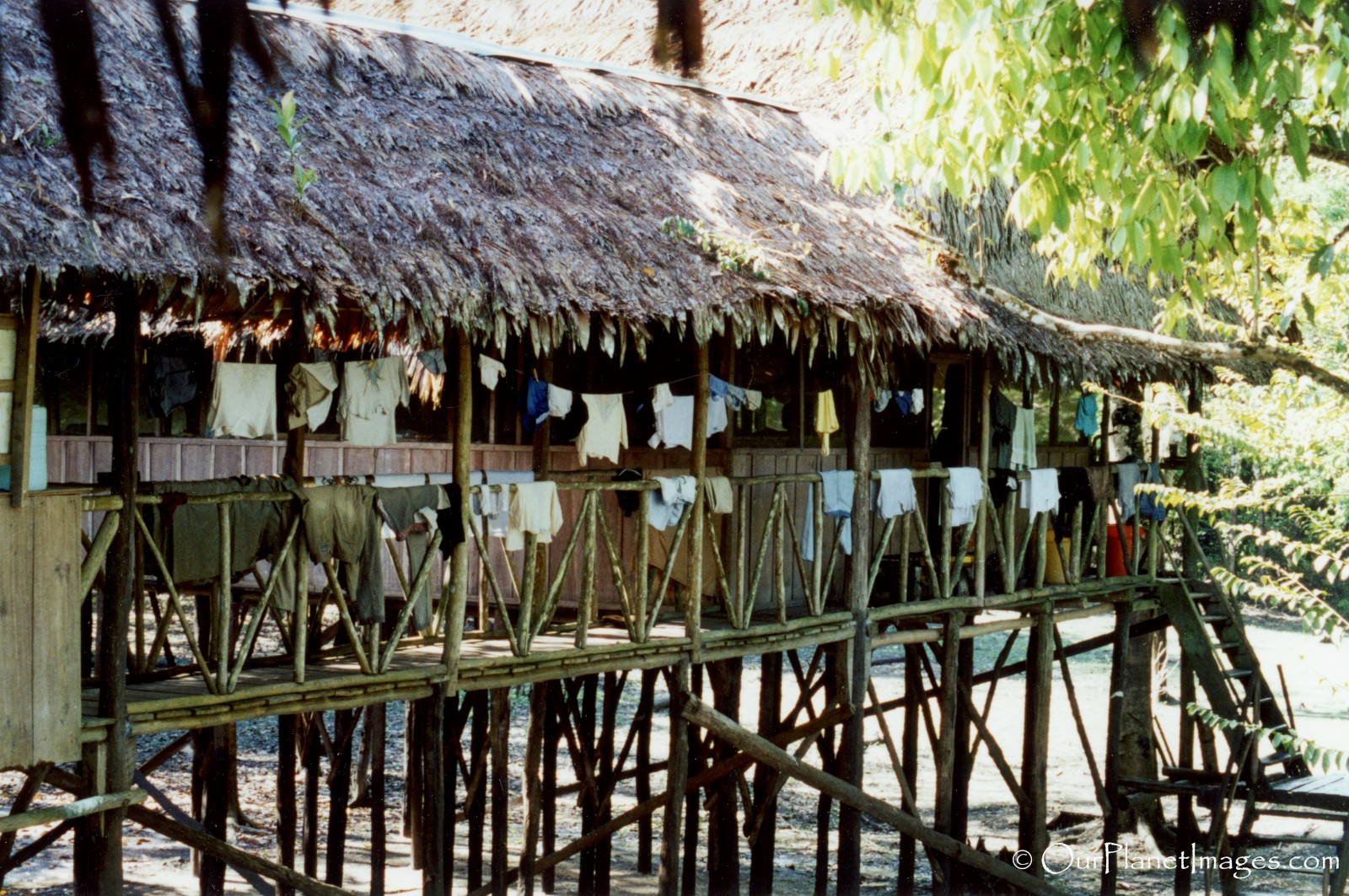

Hiking the Jungle
Hiking in the Amazon Jungle truly in an adventure. Each day we would leave the lodge with a mission but there was no set path for getting there. Every day we would make our way through the jungle clearing our way with machetes and then return to the lodge on a completely different way. Many of our hikes required wearing rubber boots as sinking into a foot of mud wasn’t uncommon at some point on the hike.
On one of my hikes I asked the guide “Why do we go to our destination one way and return a different way?” His answer was, “The jungle changes every day. There is no way to maintain a trail in this location.” He then told me that where we were currently hiking was underwater a week earlier. The best way to reach a destination today may not be accessible a week earlier or a week later.
The guides know how to get to a destination and they navigate the best route. Every day is a new adventure!
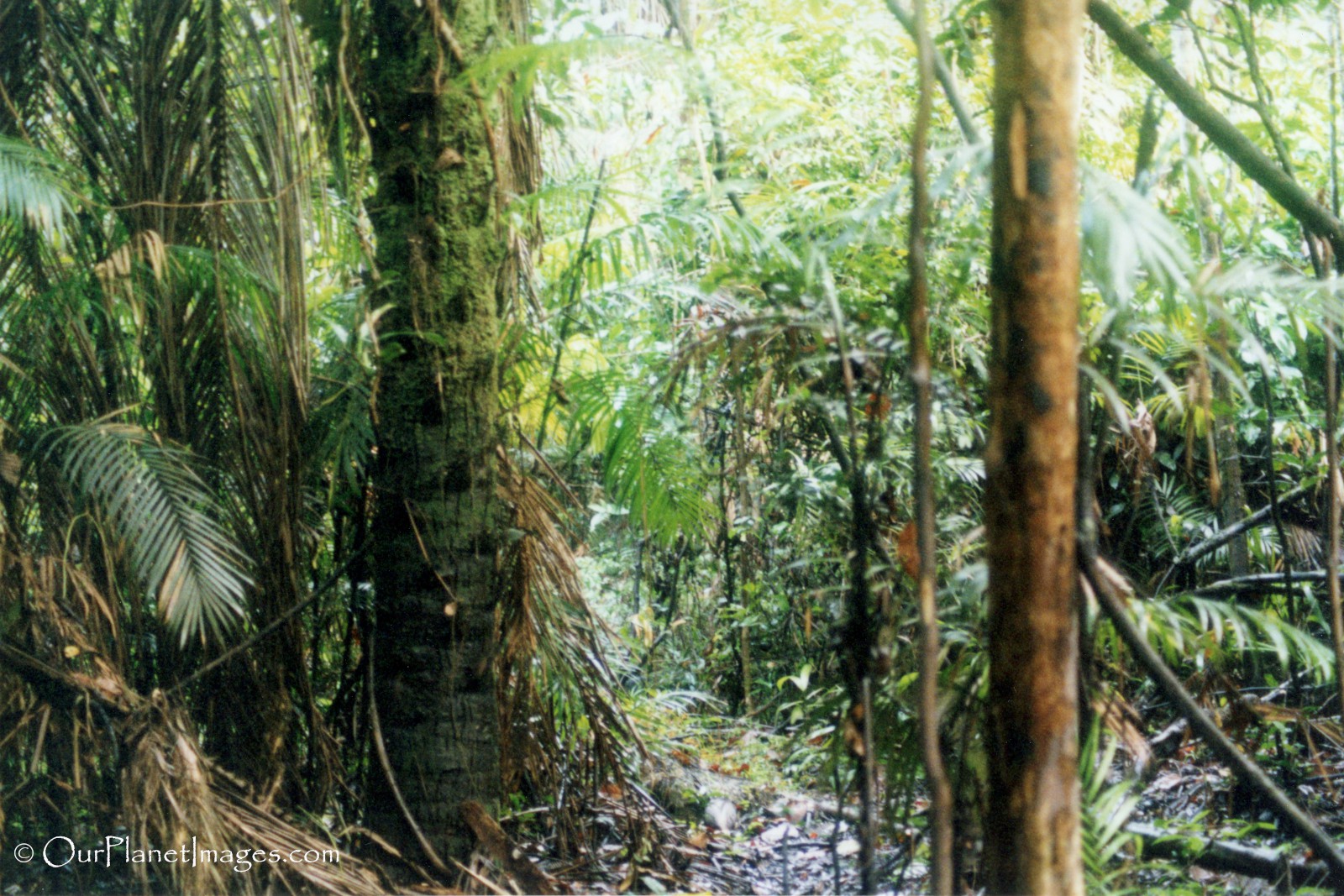
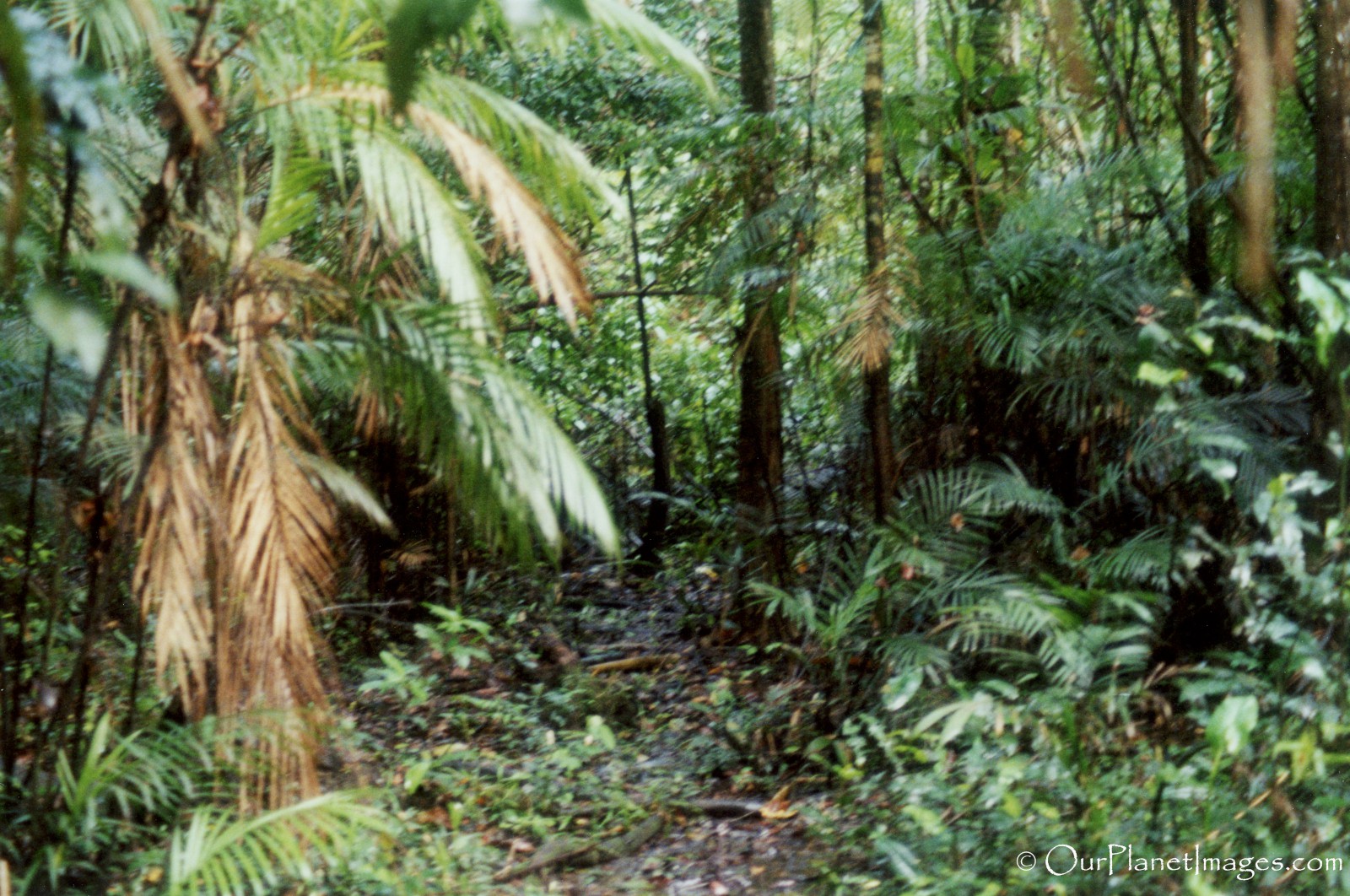
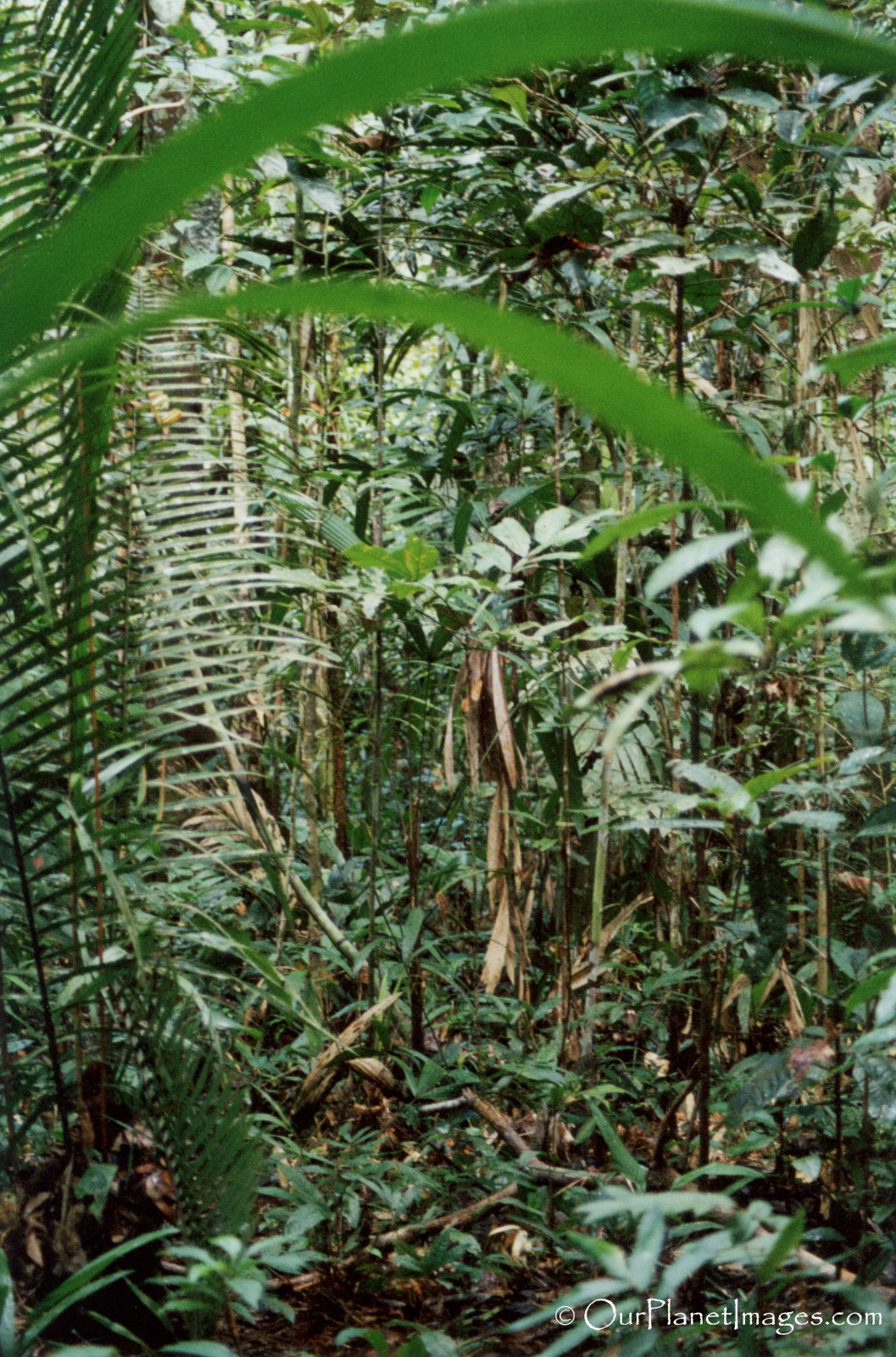
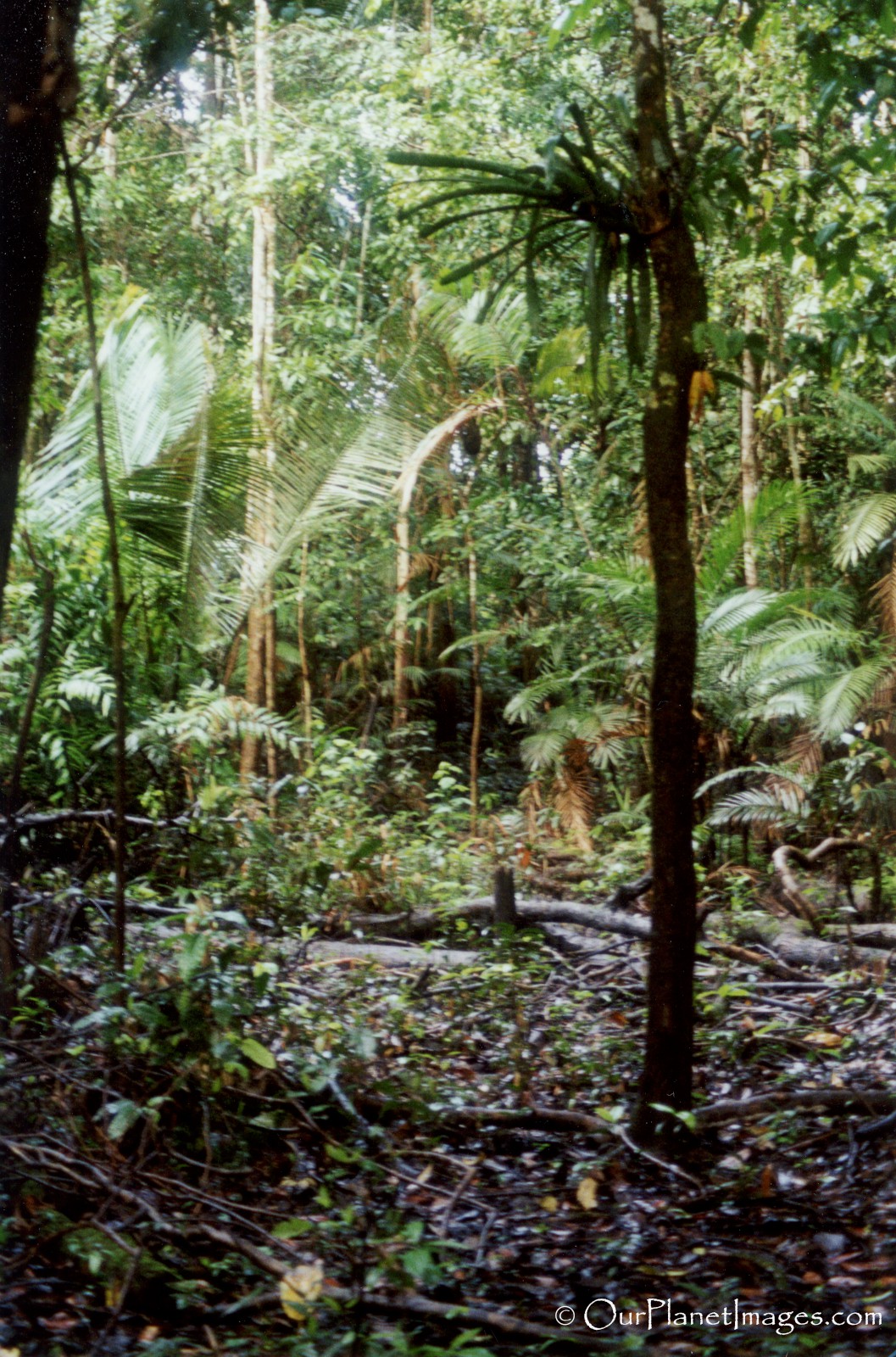
The jungle floor is the harshest place that I have experienced. Everything seems to be fighting for survival. All of the plants have thorns on them, insects are everywhere and the wildlife is on the lookout for prey and predators.
It is easy to be poked, stung or bitten. Insect stings and bites are hard to avoid as they are almost a daily occurrence. The worst reaction that I had was being stuck by a thorn of an unusual looking palm tree. The thorn stuck me on my finger and that night half of my hand was swollen. Luckily the swelling had gone down by morning.
Be careful where you step, be careful where you stand, be careful where you sit and be careful what you touch!
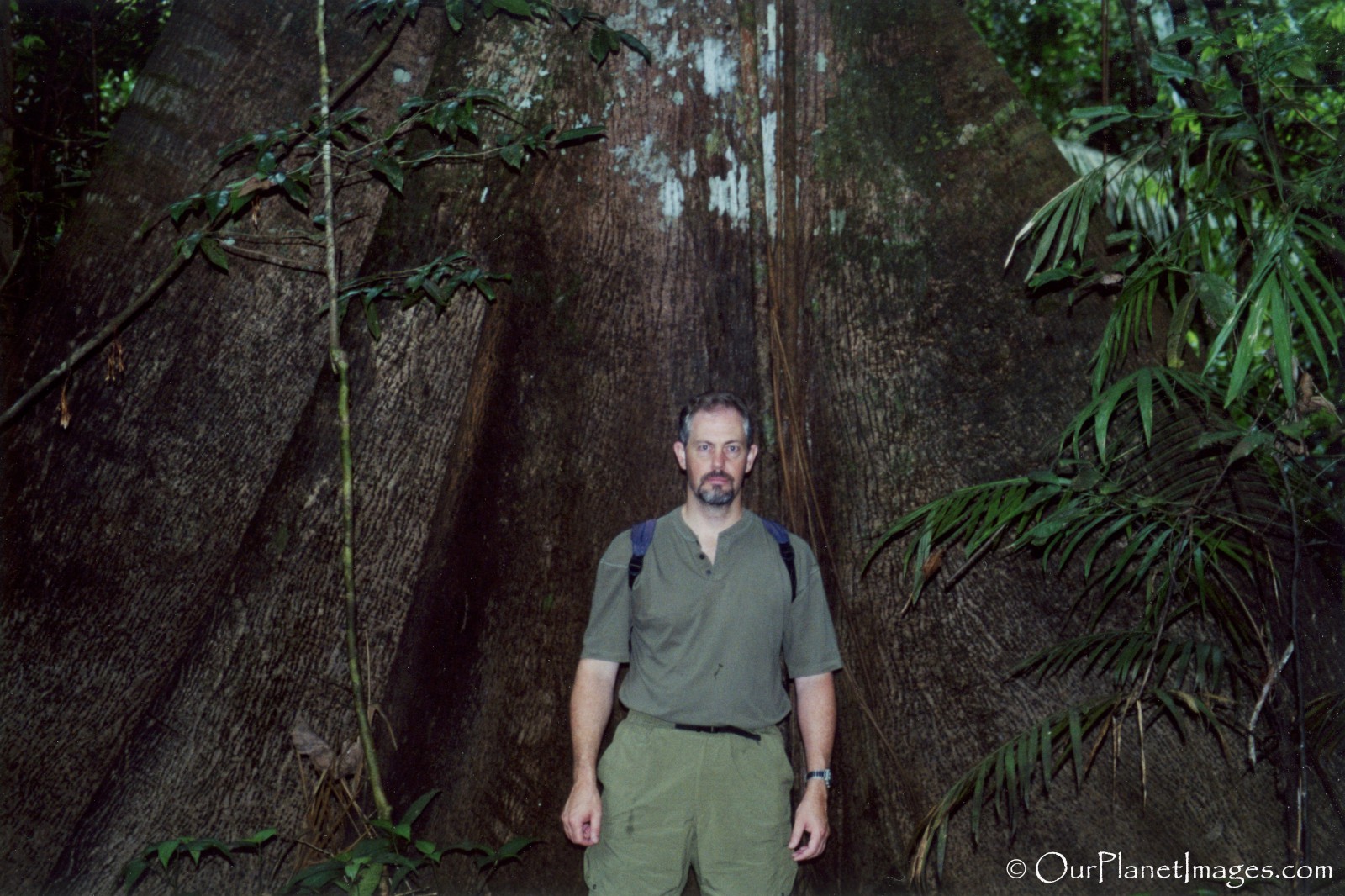
Canopy Experience
Experiencing the Amazon Rainforest canopy is a “must do” activity. The rainforest canopy is where a lot of the rainforest wildlife lives so having the ability to be in the treetops provides for a completely different experience than being on the rainforest floor. The treetop canopy is so dense that only five percent (5%) of the sunlight reaches the forest floor.
Getting into the rainforest canopy is the hard part. During my visit there was only one way up and that was to use climbing ascenders. Climbing ascenders is a system where you have a handle with cleats in each hand. Both handle had a rope connected to your harness. The bottom handle also had a foot strap that you could stand on. Once you stood up, you cleated the upper handle to the rope. Then you would move up the lower handle with your foot strap and stood up again, essential you are using your leg as a jack. This process is repeated over and over until you reach the platforms in the treetops. The platforms are about 100 ft. (30 meters) above the rainforest floor so you are basically climbing a 10 story building using a rope and the power of your leg.
Starting the tree climb is intimidating. Looking up at the remarkable tree giants provides a mixed feeling of nervousness and excitement. The closer I came to the platform the nervousness faded and the excitement grew.
Once reaching the top, the harness is attached to a cable system that allows you to freely travel through the air from one giant tree to another. Each tree has a platform and there are a total of 6 platforms. The cable system is not really a zipline because you are required to pull yourself from on tree to another. Additionally, most zipline systems are designed to be a thrill ride and this system is all about experiencing the rainforest canopy.
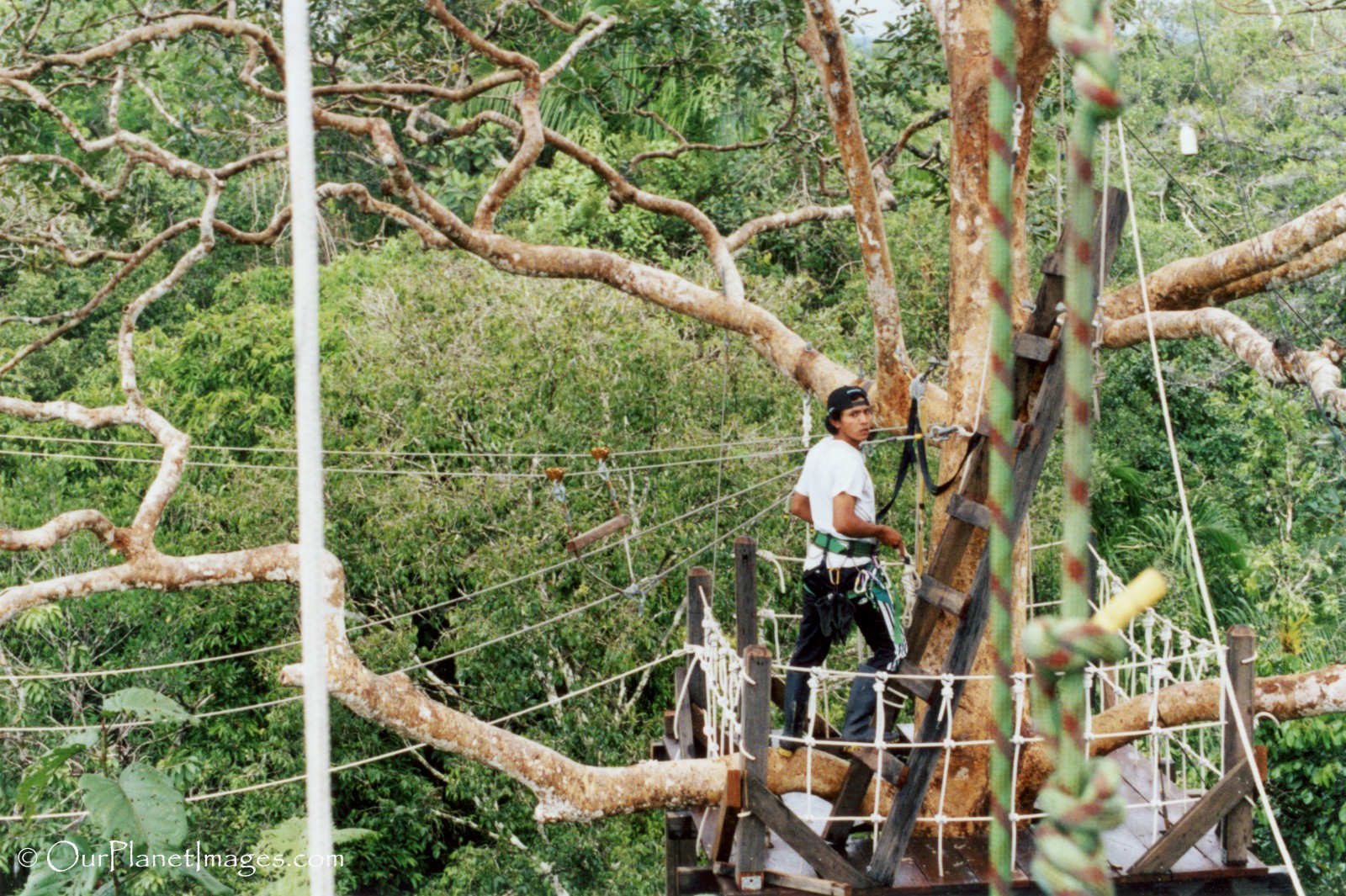
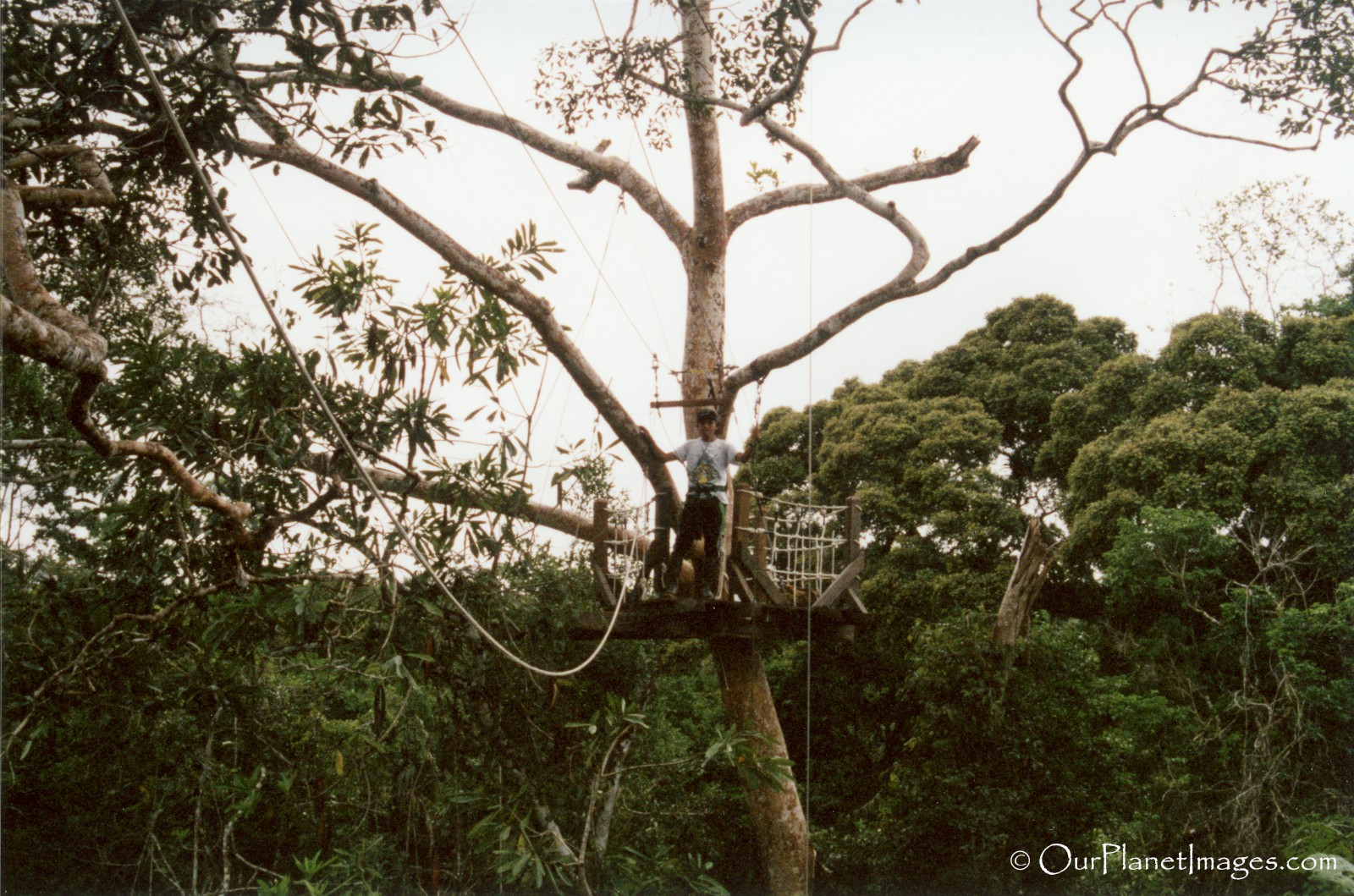

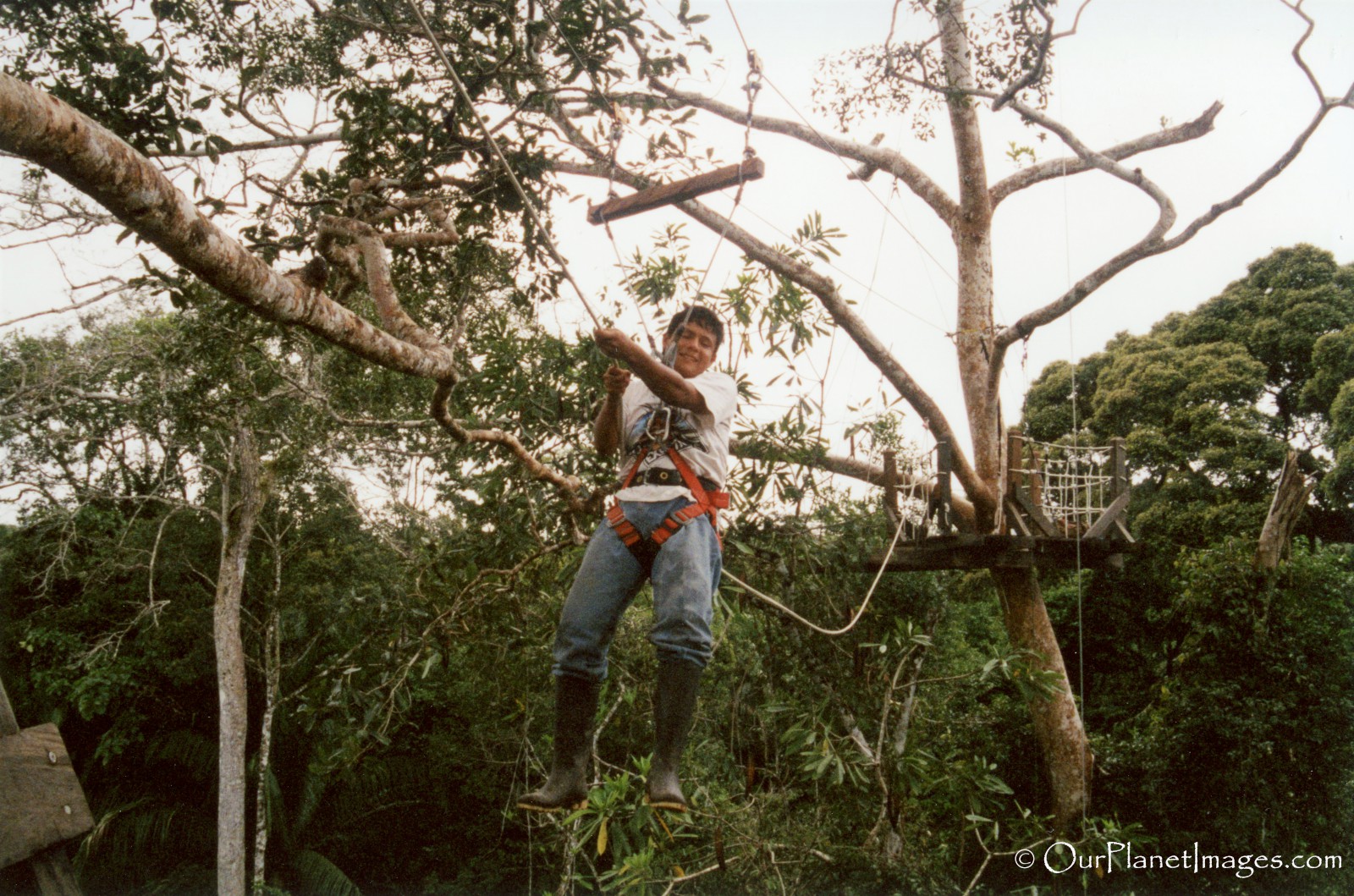
Looking up from the forest floor at the tops of the giant trees makes a lasting impression but looking down from the tops of the trees to the forest floor makes for an even greater appreciation for the magnitude of the Amazon Rainforest.
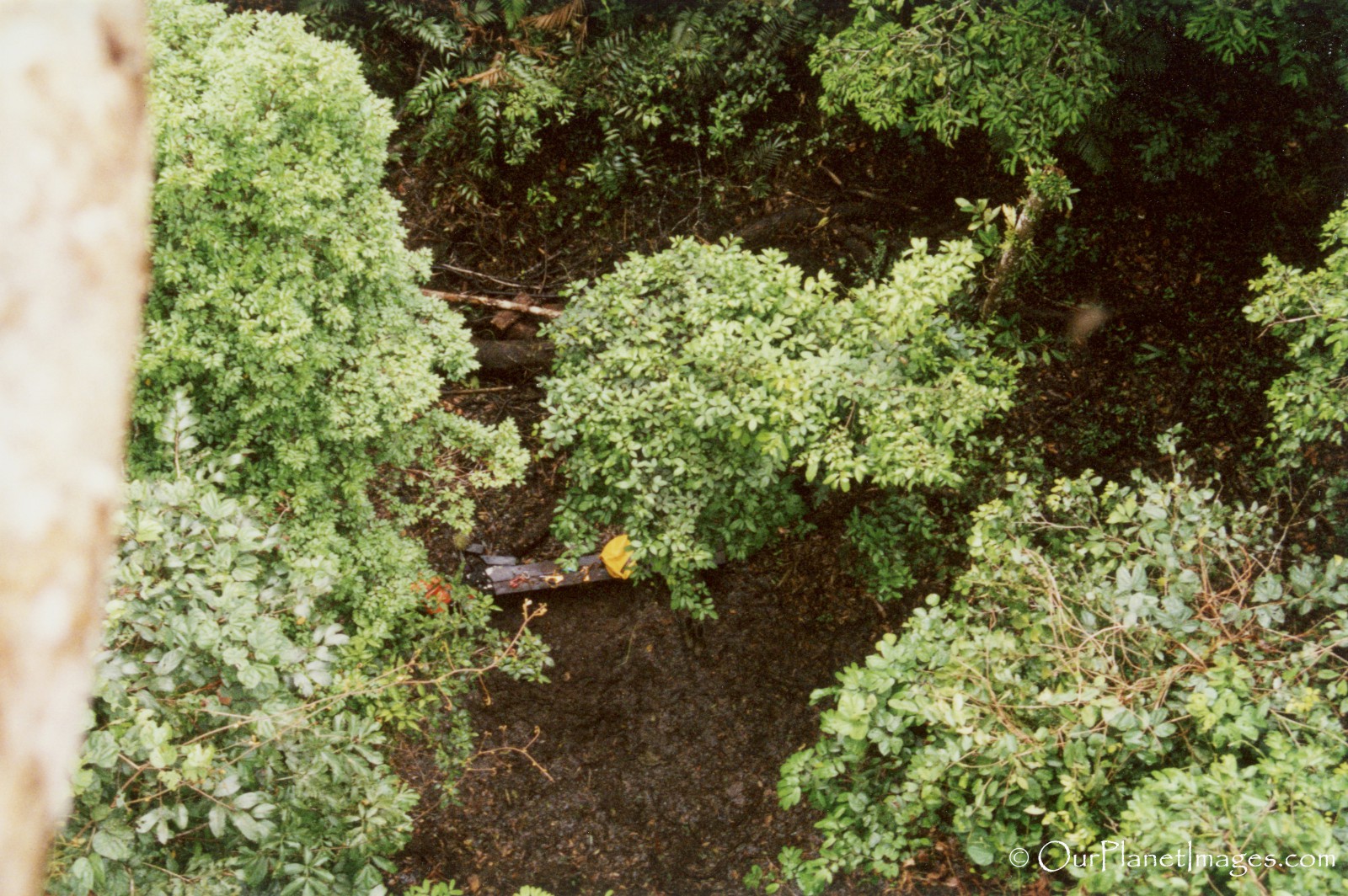
Being in the canopy was an amazing experience and the scenery looking across the top of the canopy was stunning.
Traveling from tree to tree is usually something that only the animals of the rainforest can experience. The height of the trees and looking at the branches around and in front as I moved between the trees helped me to understand the life of the animals living on the branches of the rainforest canopy.
The forest canopy is an ecosystem all to itself and most of it is completely unseen from the forest floor. Obviously there are monkeys and lots of colorful birds that can be seen but there are also plants growing on the tree limbs and just like the forest floor there are insects ready to bite or sting if you don’t watch where you are going.
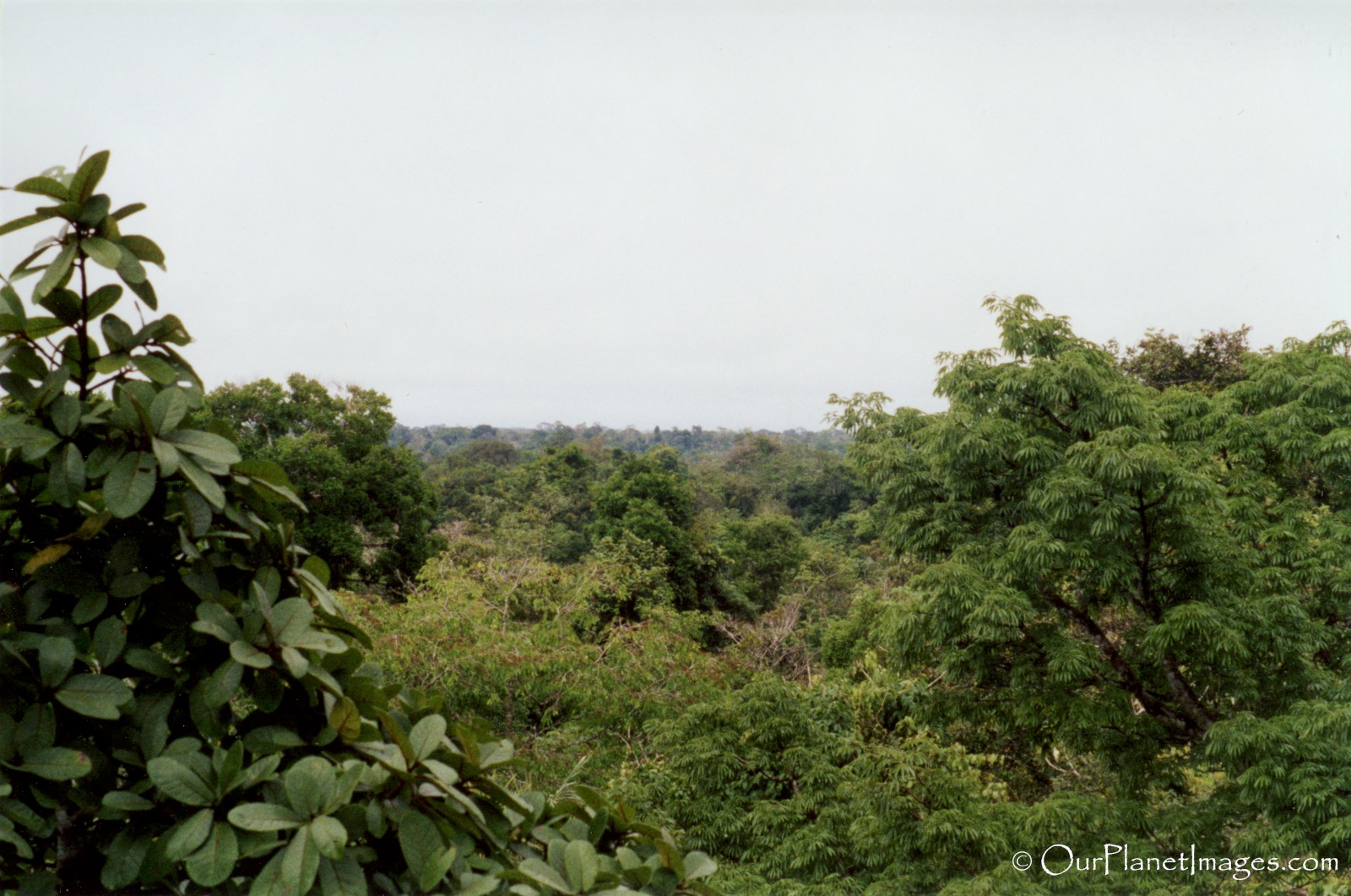
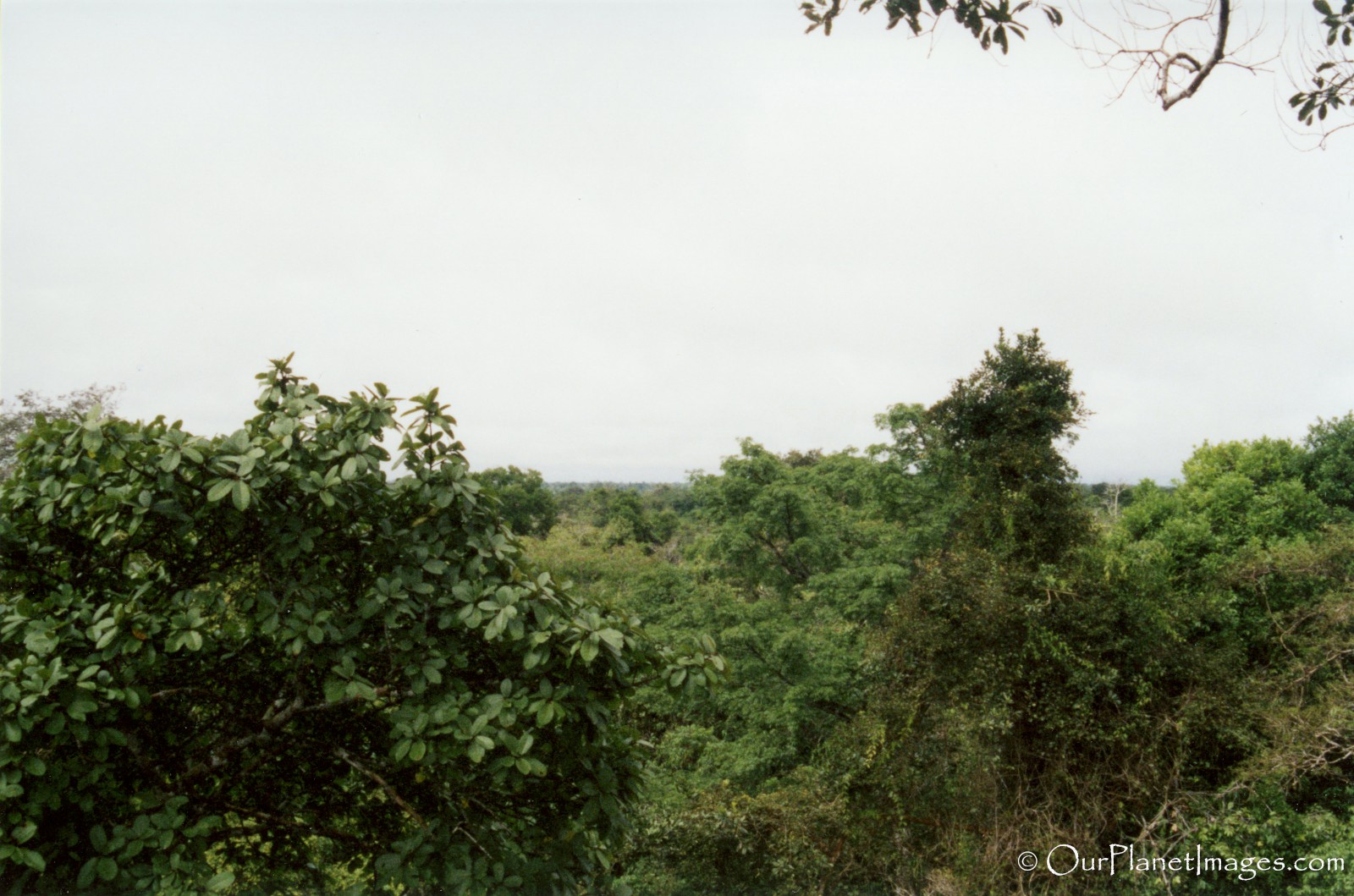

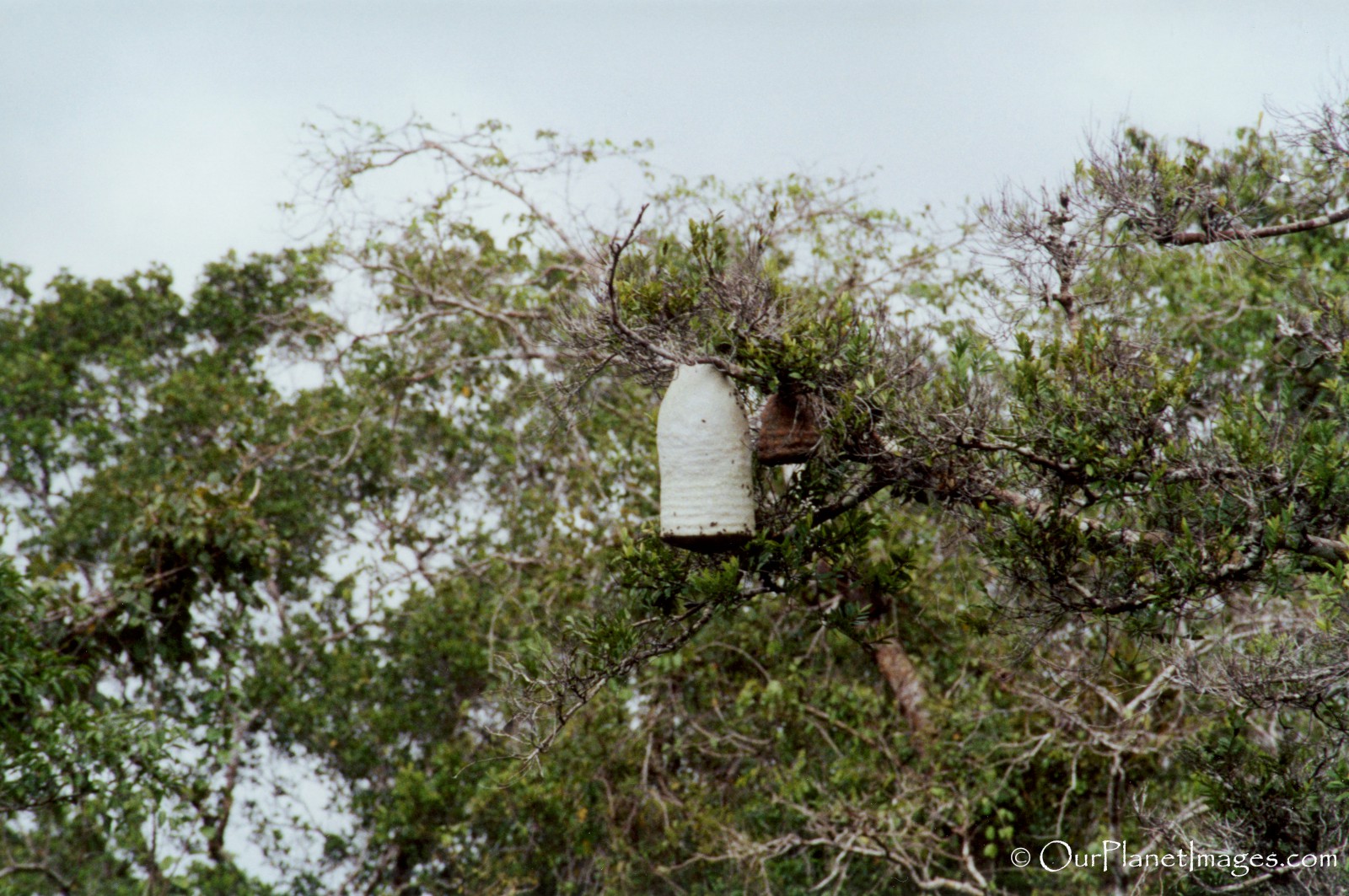
The last part of the canopy experience was returning back to the forest floor. Again the only way down is by using a rope but repelling down was much more fun than going up and quicker. Repelling straight down 100 feet from the canopy treetops to the forest floor was thrilling and was the perfect way to finish a great experience.
Being in the Amazon Rainforest canopy and seeing the treetops the way the animal of the forest do is an opportunity that very few travelers get to experience. Every time I think about my Amazon trip I always remember the canopy experience.
Forest Canoeing
Forest canoeing seems to be a strange term but during the time of year when parts of the jungle are flooded, canoeing through the tree tops is possible. While it may seem to be the quickest way to get where you want to go, my experience is that it is not a good idea.
As the water rises, insects living on the trees are forced to go higher. If you happen to brush up against a tree branch with an insect on it then you are just asking to be bitten or stung.
On one of our forest canoeing attempts we tried to go across some of the tree branched. The branches were thicker than they appeared and it was more difficult to get across the tree than we thought. Right when we were stuck between branches a biblical size plague of mosquitos came out of nowhere and swarmed us. I am sure that I donated a pint of blood before we could get into open water and escape the mosquito attack.

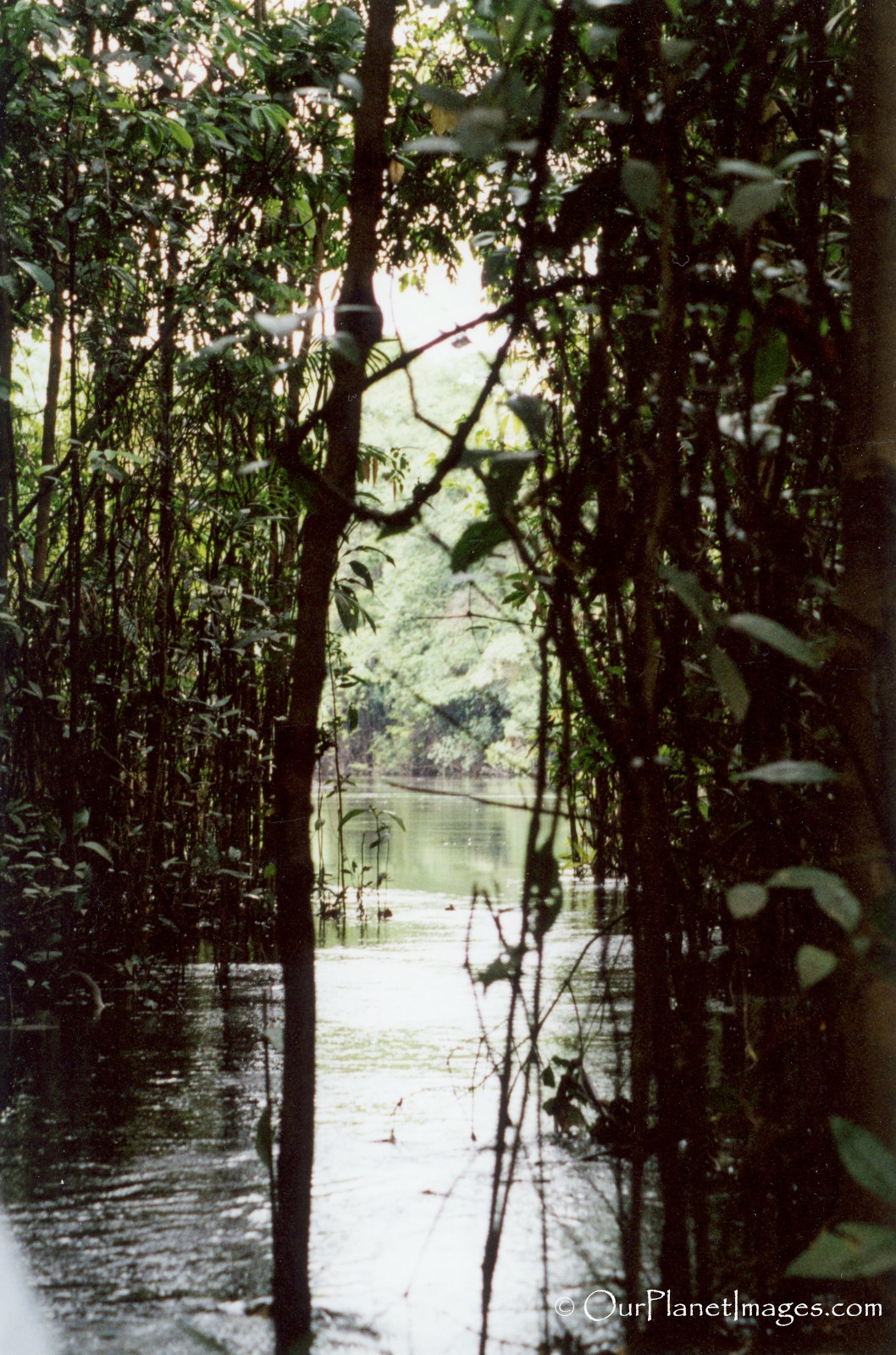
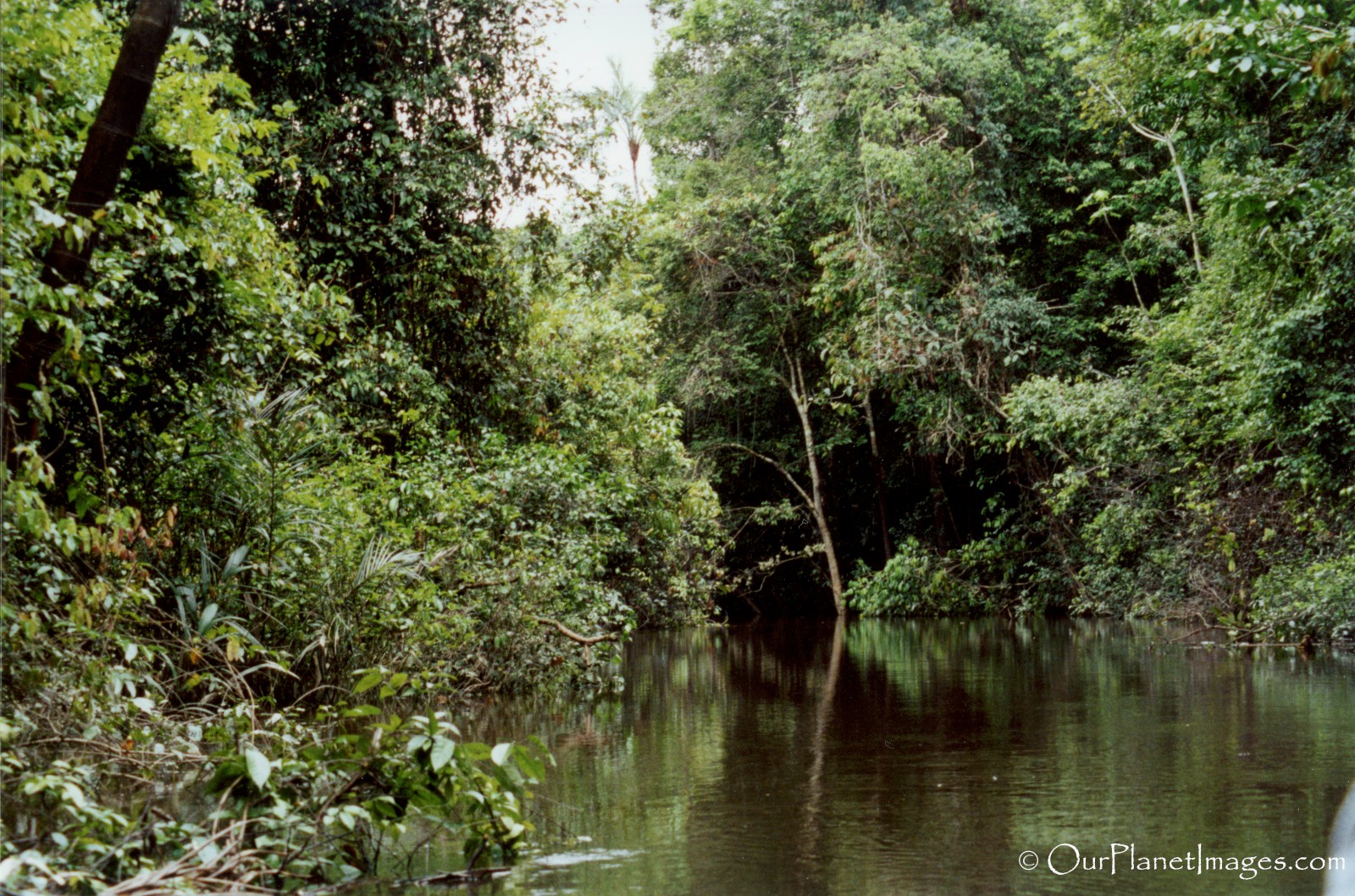
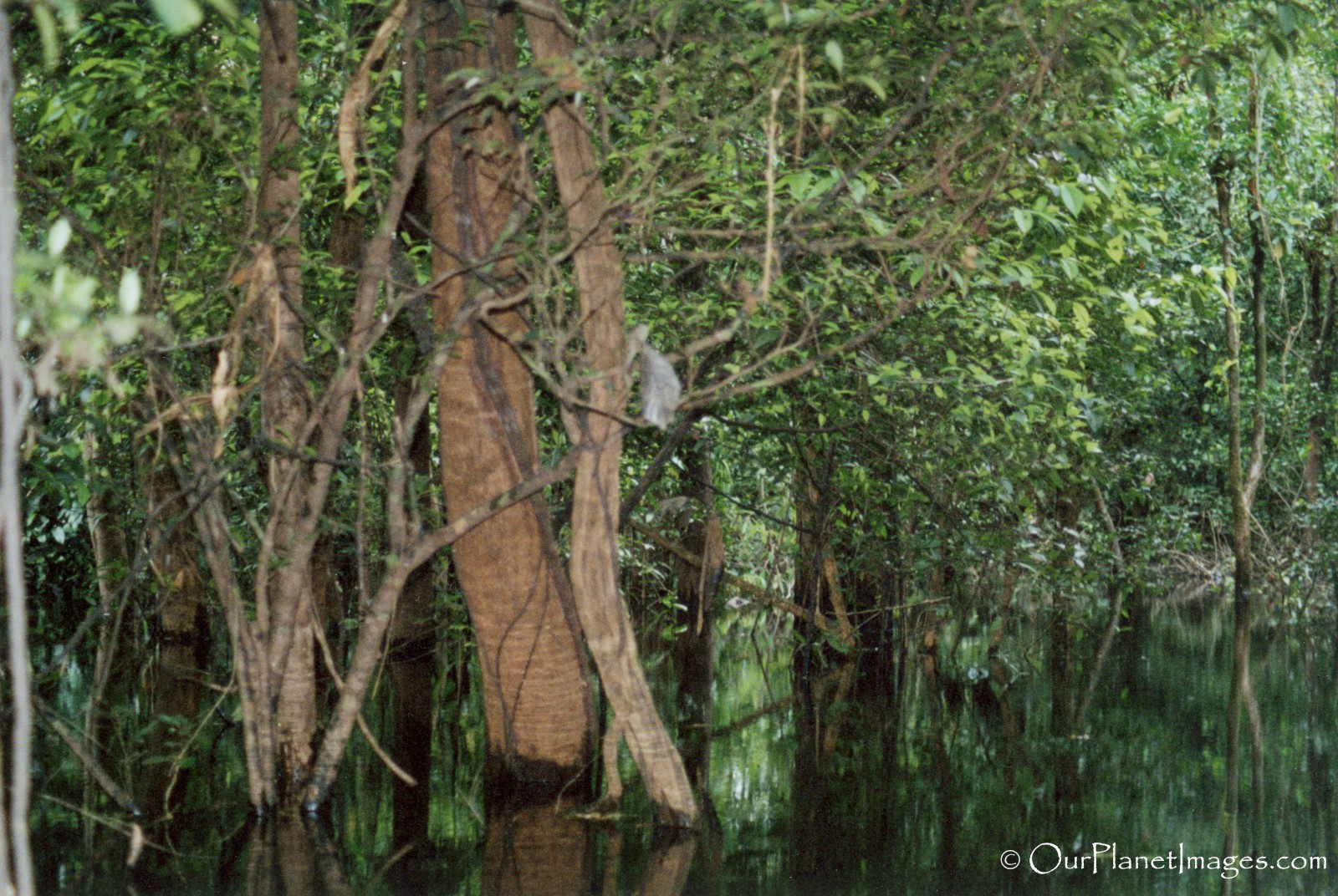
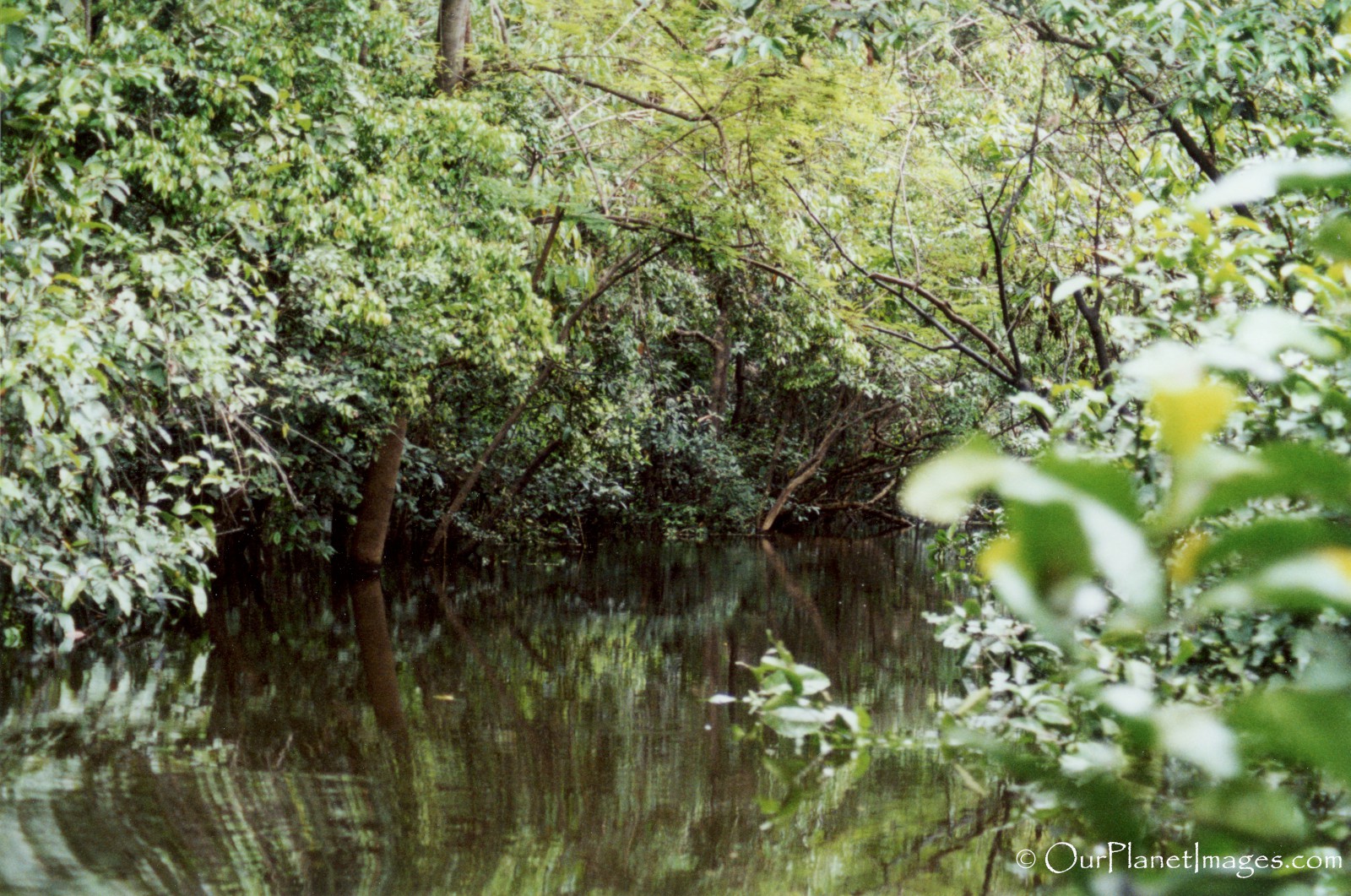
Jungle Survival
For people that really want to have an extreme Amazon Rainforest experience the Tahuayo Lodge offers an opportunity to learn how to survive in the jungle with nothing but your hands, a machete and the knowledge of the jungle guides.
This is something that I did not know about until I reached the lodge so I didn’t want to spend too much of my time in the Amazon Rainforest just trying to survive but it was also something that I didn’t want to miss out on the experience of doing so my jungle survival experience was for just 2 days.
We literally left the lodge just after sunrise and hiked into an isolated part of the jungle with nothing but a machete. No food, no water, just a machete! Then returned to the lodge the next day before sunset. The experience was 36 hours of my life that I will never forget.
Hiking in the hot humid jungle requires having lots of liquid so the first thing we learned was how to get water that is fit to drink. To my amazement, drinking water straight from jungle vines is like drinking pure water but not all water from jungle vines is drinkable. The water needs to be clear and not milky looking, it shouldn’t burn your hand or your mouth. If it passes those test then it is drinkable.
Food is also essential so we caught fish, foraged for fruits and eat grubs. The eating grubs (beetle larva) was the most challenging part of it all. There is something about digging a large white grub out of a rotten tree laying on the forest floor and then eating it live that is just not that appetizing. It really wasn’t as bad as it sounds, the taste was okay but mentally it was the most challenging thing that I have ever put into my mouth and I will eat almost anything when traveling.
As night approached we prepared for the night assault of mosquitos by rubbing live termites on our skin as mosquito repellant. It is not as effective as modern products but I am sure it helped because I wasn’t bitten too badly.
Sleeping really didn’t happen. Listening to the sounds of the jungle during the night kept my mind wandering what creatures were around me. For the people that know me, they know that sunrise is my favorite part of the day but this sunrise was extra special.
The second day seemed easy, we just needed to find food for the day and hike back to the lodge.
While my jungle survival experience was short, it taught me a lot about the rainforest. It is one thing for a guide to tell you about things that can be eaten but it is totally different for those fruits, plants and insects being the only things there are to eat.
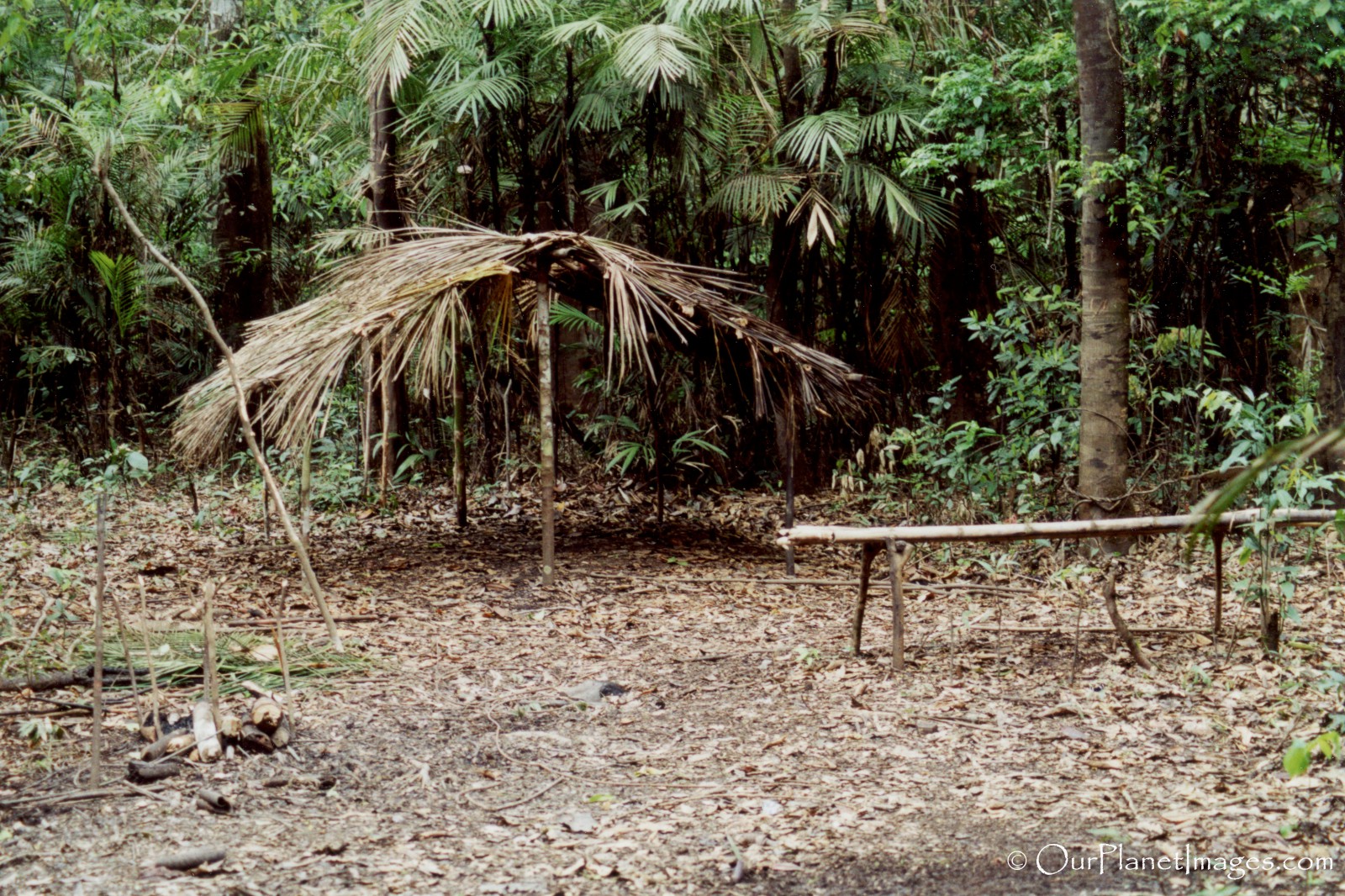
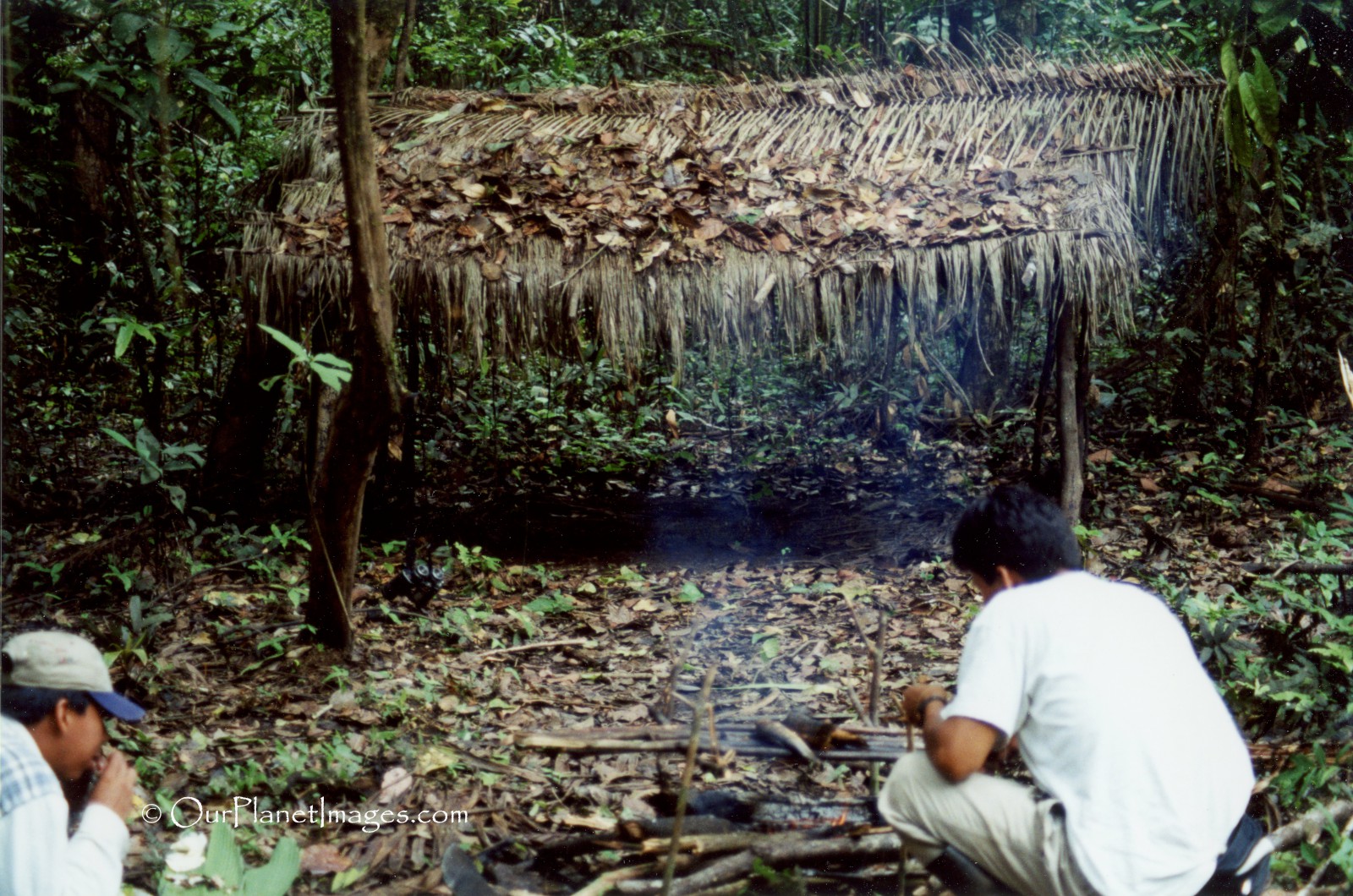
Wildlife searching
I have been a wildlife enthusiasts for my entire life and seeing wildlife in the Amazon Rainforest was my top priority during this trip.
Seeing wildlife in a remote and isolated part of the Amazon Rainforest is very different than any other place that I have traveled. The part that makes it different is that the wildlife in the rainforest is not stationary. They travel through the forest which means they rarely see humans. When they do see humans they are very wary and nervous. Many times they will hide or flee when they see a human. Basically, if an animal see you before you see them then you normally don’t see the animal.
Seeing wildlife can be challenging but there is a lot of wildlife in the rainforest and there is no doubt that you will see lots of wildlife that you have never seen before nor will you ever see again.
The other challenge in the rainforest is that the rainforest floor is very low lighting which makes photographing fast moving wildlife almost impossible (although camera equipment has vastly improved since my trip). My recommendation is to keep a log of the wildlife that you see each day. That is what I did and it helped me to remember the wildlife that I saw on my trip even though I was not able to get photos of everything I saw.
Everyone that visits the Amazon Rainforest has a list of wildlife that they want to see. For me, I wanted to see as many different species of monkeys as I could. I thought that my monkey searches were successful as I saw 6 different species. The species that I saw were howler monkeys, titi monkeys, squirrel monkeys, mouk saki monkeys, capuchins, and pygmy marmosets which are the smallest monkey in the world.
Other notable wildlife that I saw were pink dolphins, giant river otters, caiman, red headed iguana, three-toed sloths, guinea pig, tarantulas, leaf frogs, poison dart frogs and lots of butterflies.
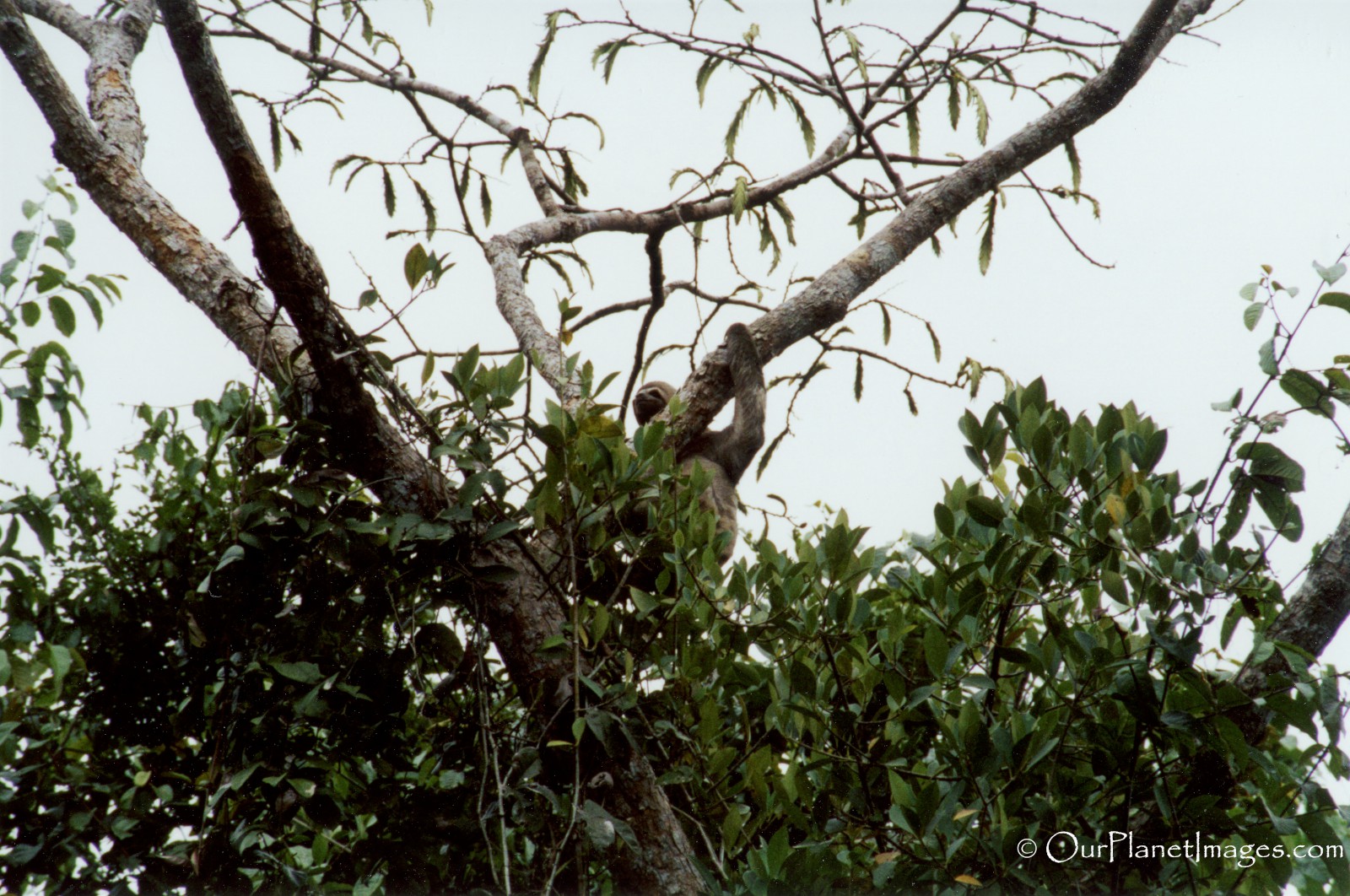
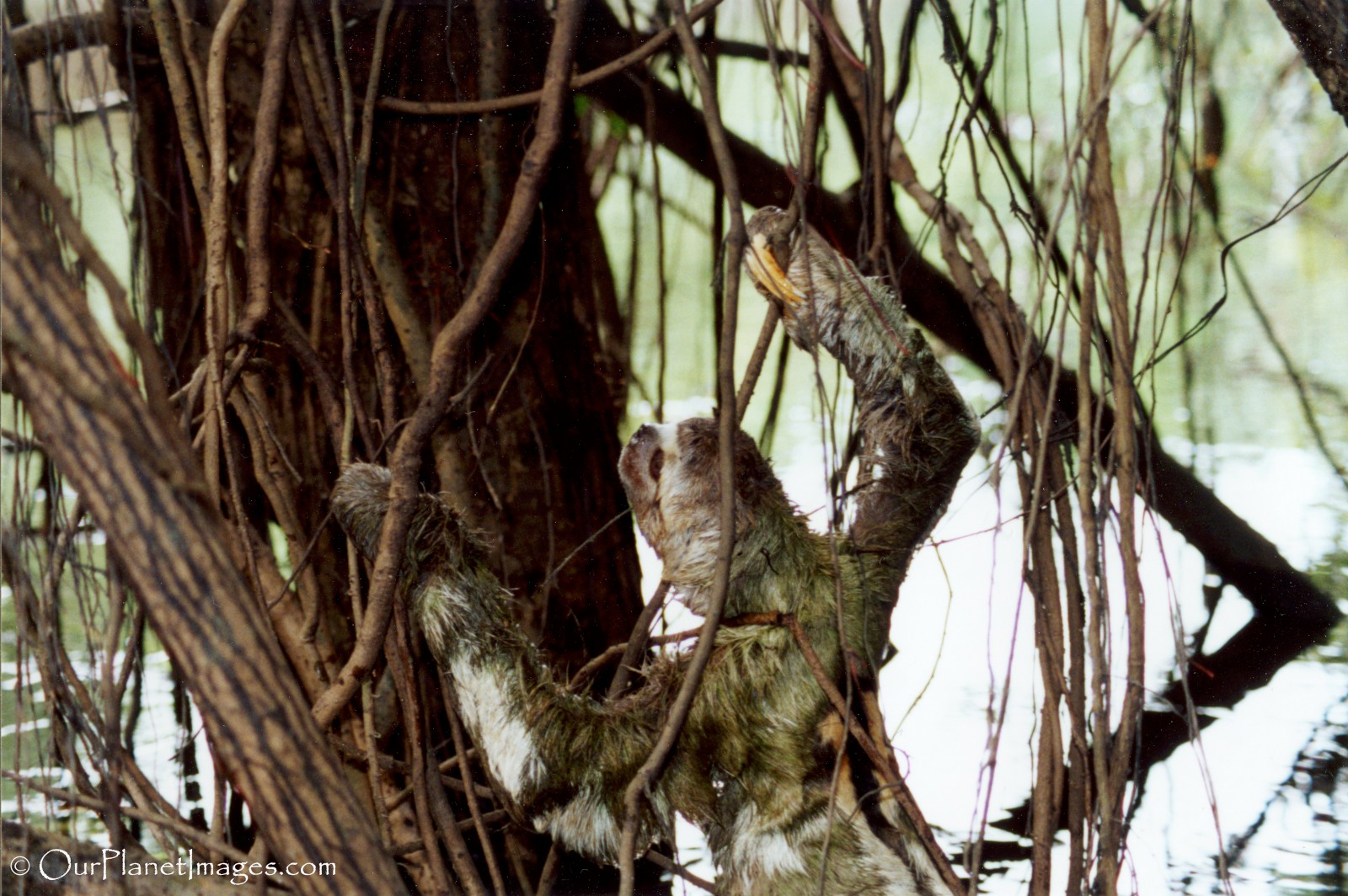
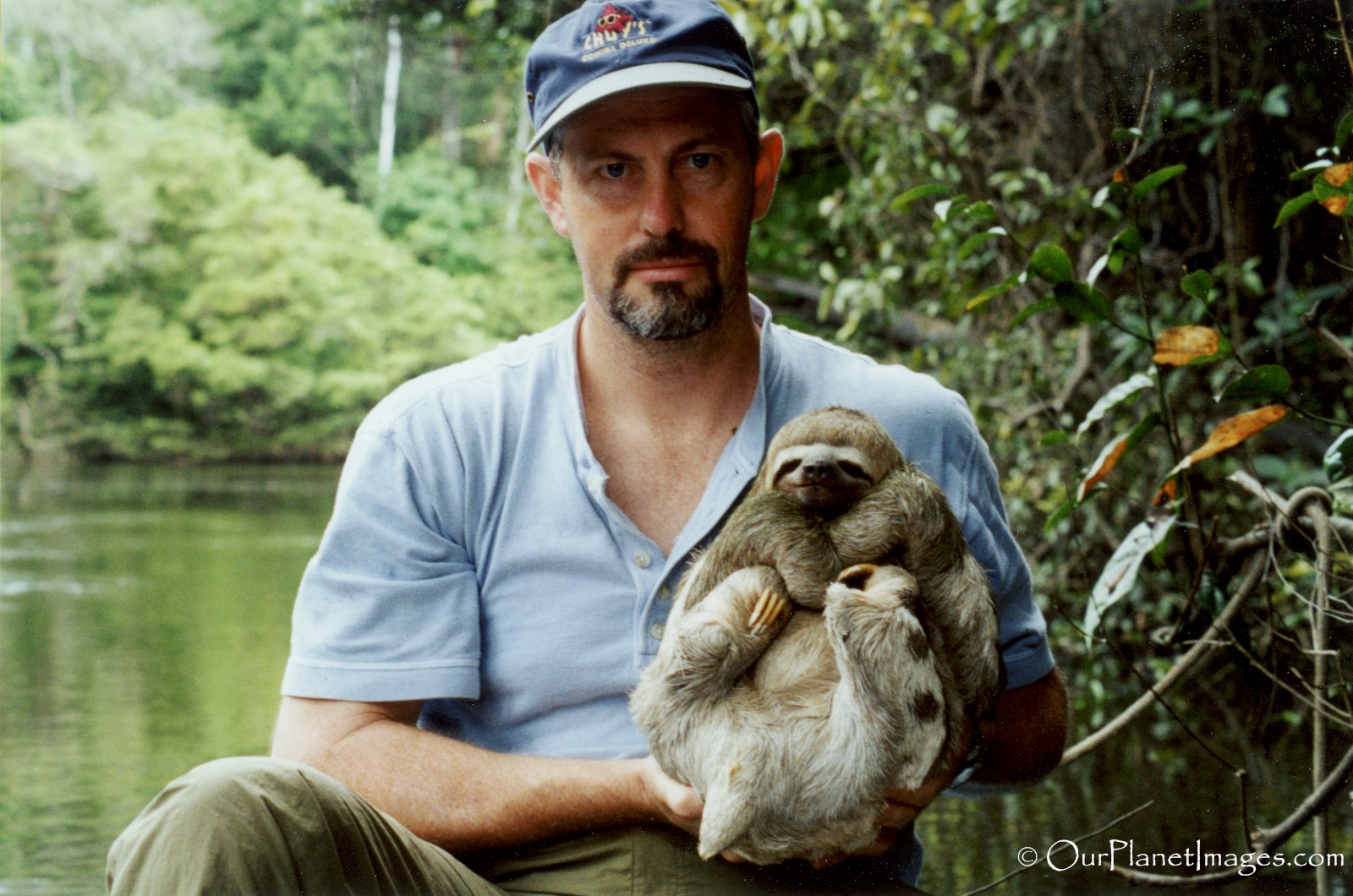
In addition to the list able animals and other creatures I spotted lots of colorful birds on all of my hikes. Some of the most recognizable birds for a novice birder were blue and yellow macaws, black collard hawks, parrots, toucans, kingfishers and the guides pointed out a hoatzin bird.
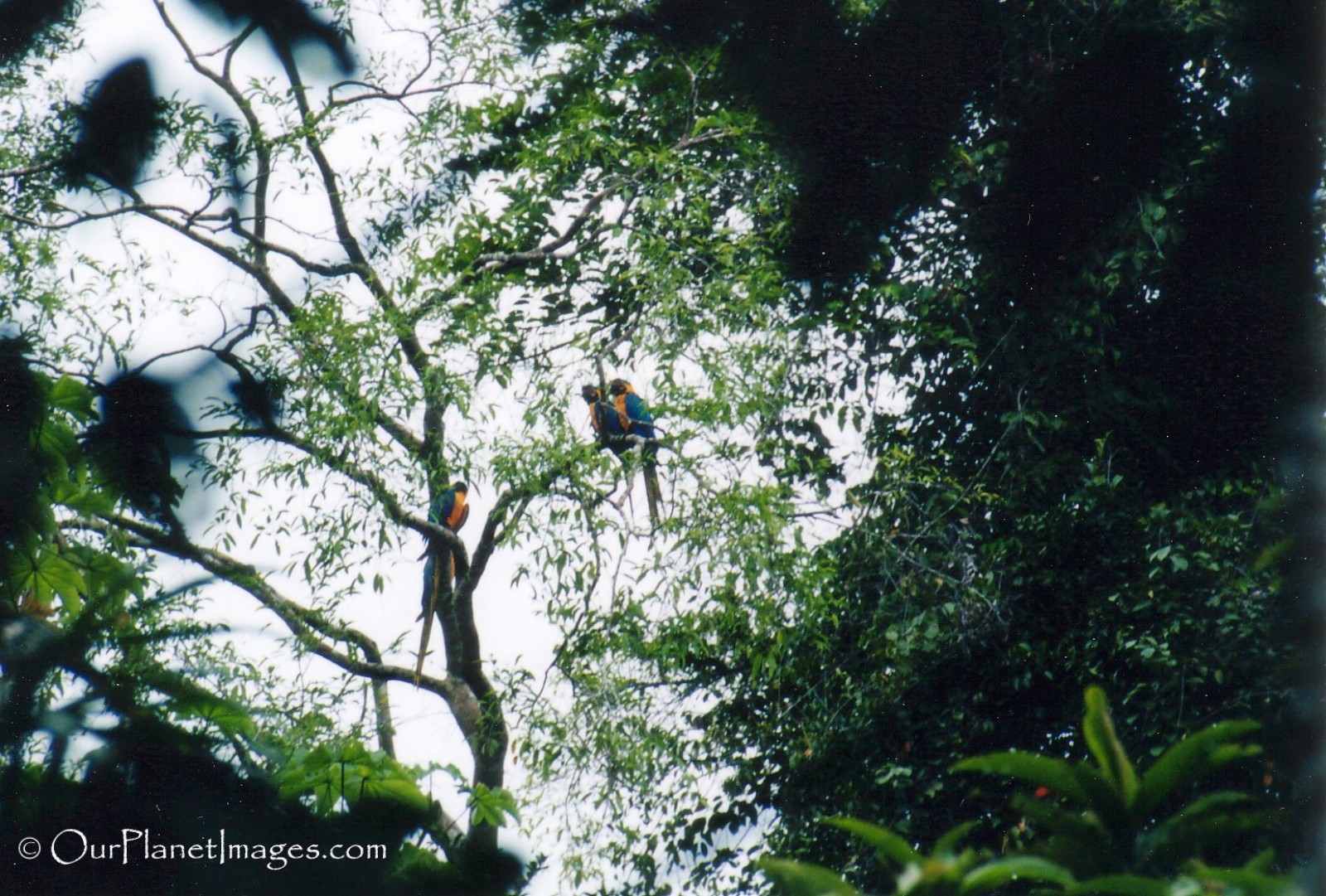
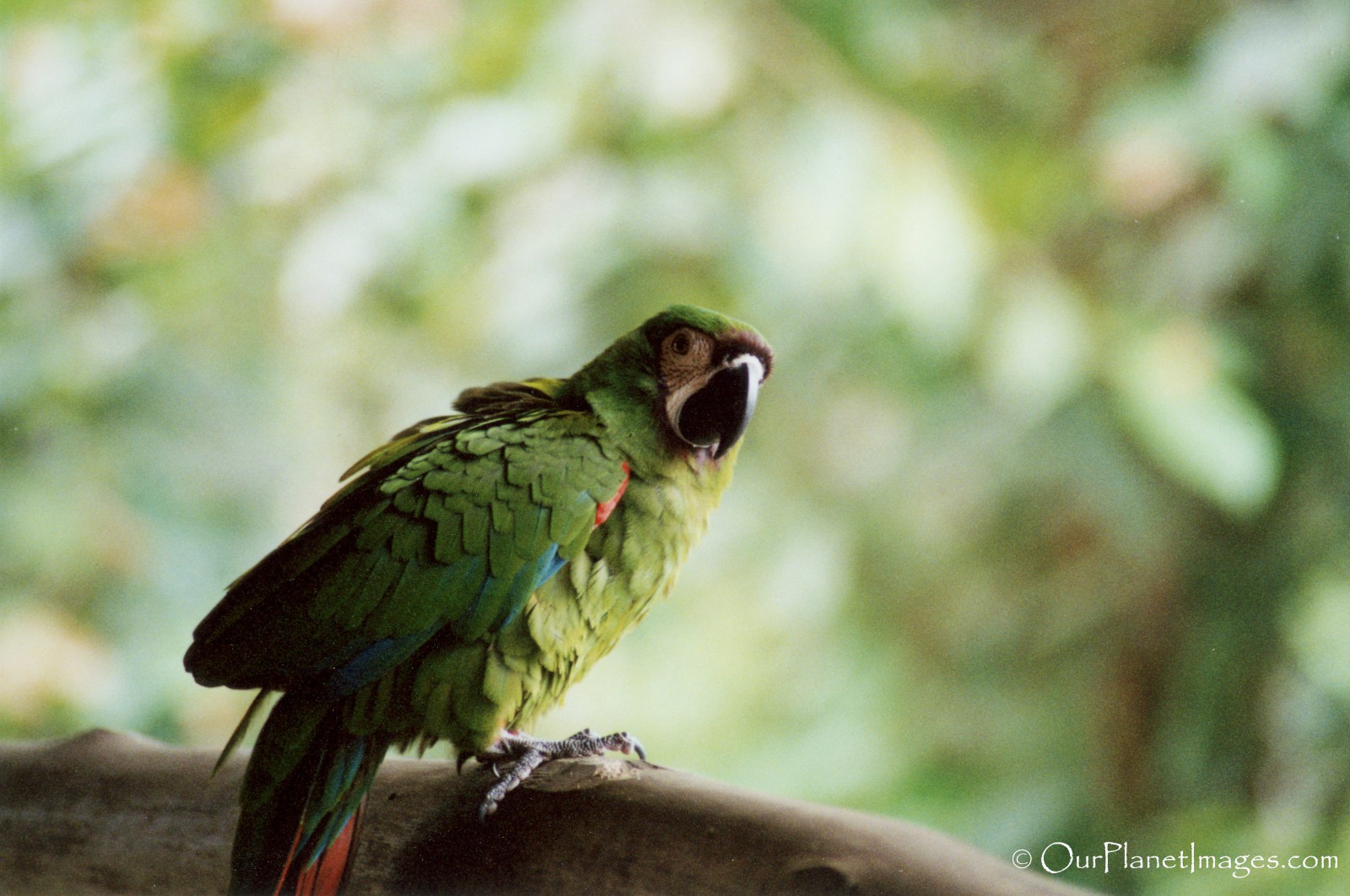
Fishing for Piranha
Similar to the Amazon Rainforest, the Amazon River system is rich with wildlife. There are around 2,000 species of fish in the Amazon River system which is more than in the Atlantic Ocean.
Fishing was not high on my list of things to do on my Amazon trip but I did want to catch a piranha. It turns out that catching piranha is not that difficult. They seem to be almost everywhere. Some people even caught them right in front of the lodge.
I went fishing for piranha two times. The first trip was my most memorable, partially because it was the first time to catch a piranha but mainly because of what happened after we finished fishing.
I have been a fisherman all my life and fishing for piranha is different than any other fishing that I have done. Most fishing requires being quiet so the fish won’t be scared away but piranha are attracted to noise in the water because they think something has fallen into the water. To catch piranha you put the boat under the tree limbs and splash your rod on the surface of the water. In a matter of minutes the fish come to the bait. The trip was successful as we caught a nice bunch of small fish including four piranhas (shown in the photo below).
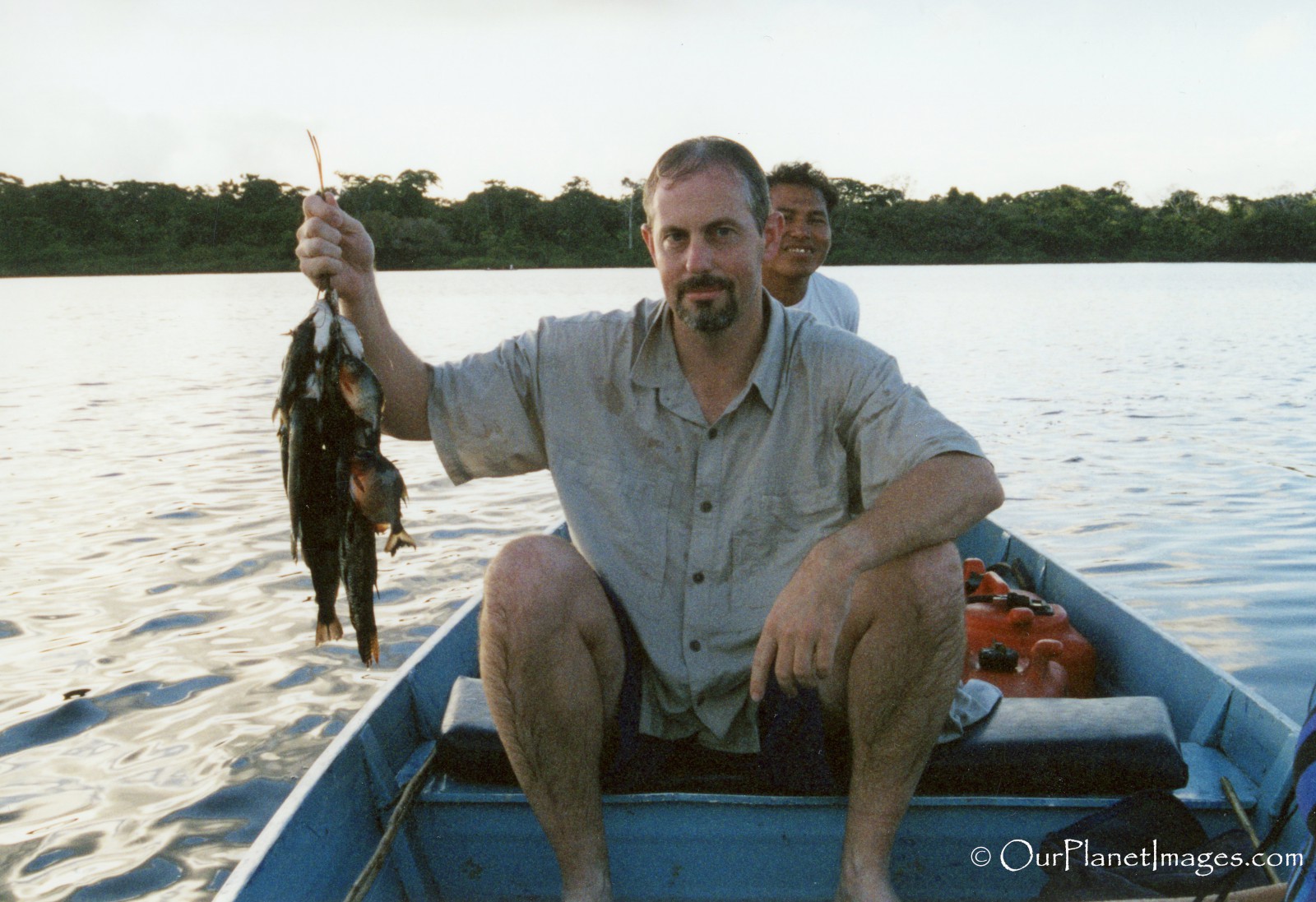
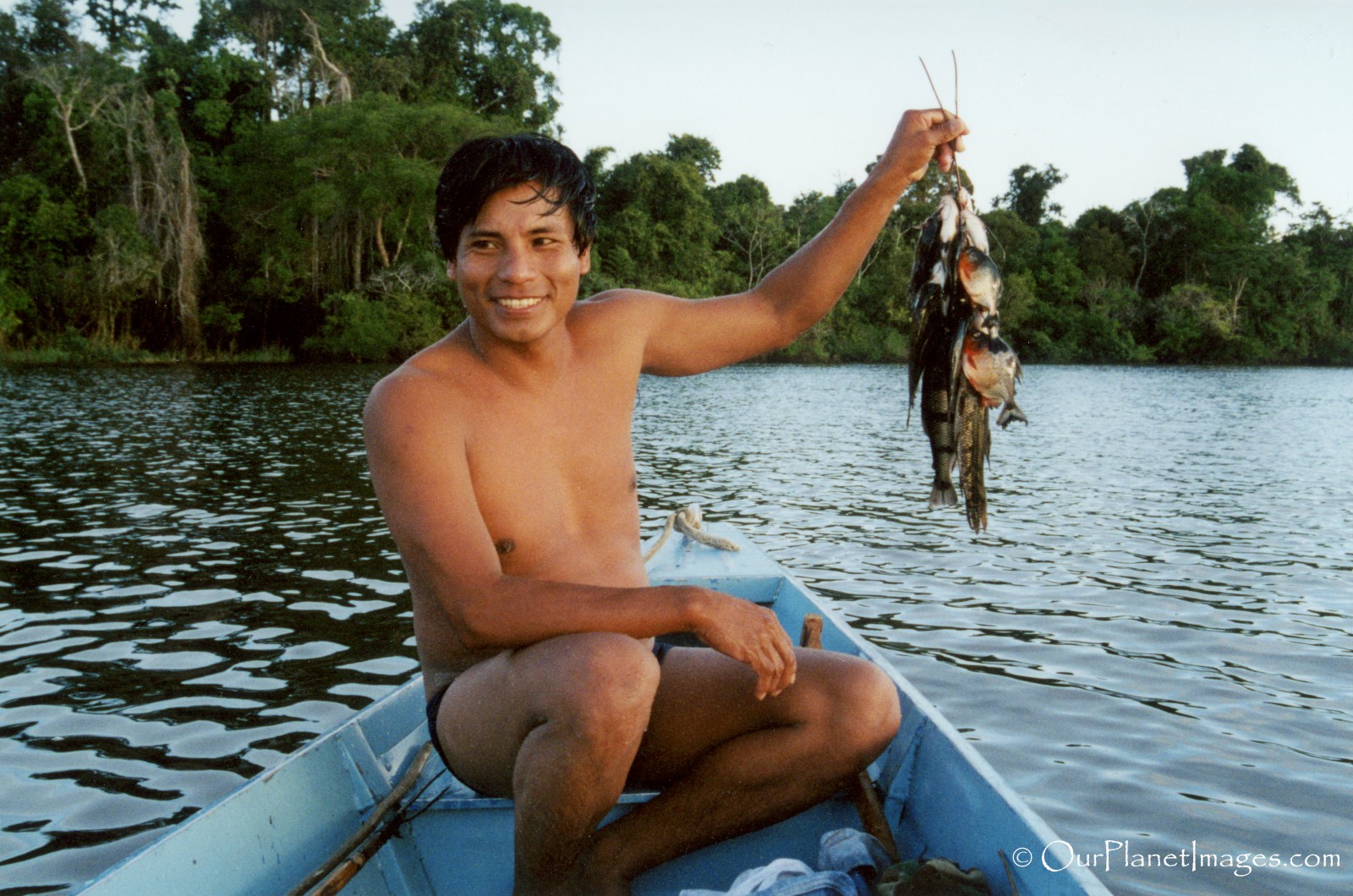
After we finished fishing one of the guides said that he was hot and wanted to go for a swim. I said “are you crazy, we just caught piranha just 20 yards from here (pointing to the riverbank behind him).” He replied, “Yes but if you are not bleeding then they will leave your alone.” Then he jumped in the river. He seemed to be okay and I was hot too so I took off my shirt and went for a swim also. If you look at the two photos above you will notice that we both look like we just came out of the water.
While the first trip was eventful, I was not satisfied with catching small piranha and wanted to see if I could catch larger piranha. On the second trip we set out to catch bigger piranha which we did.
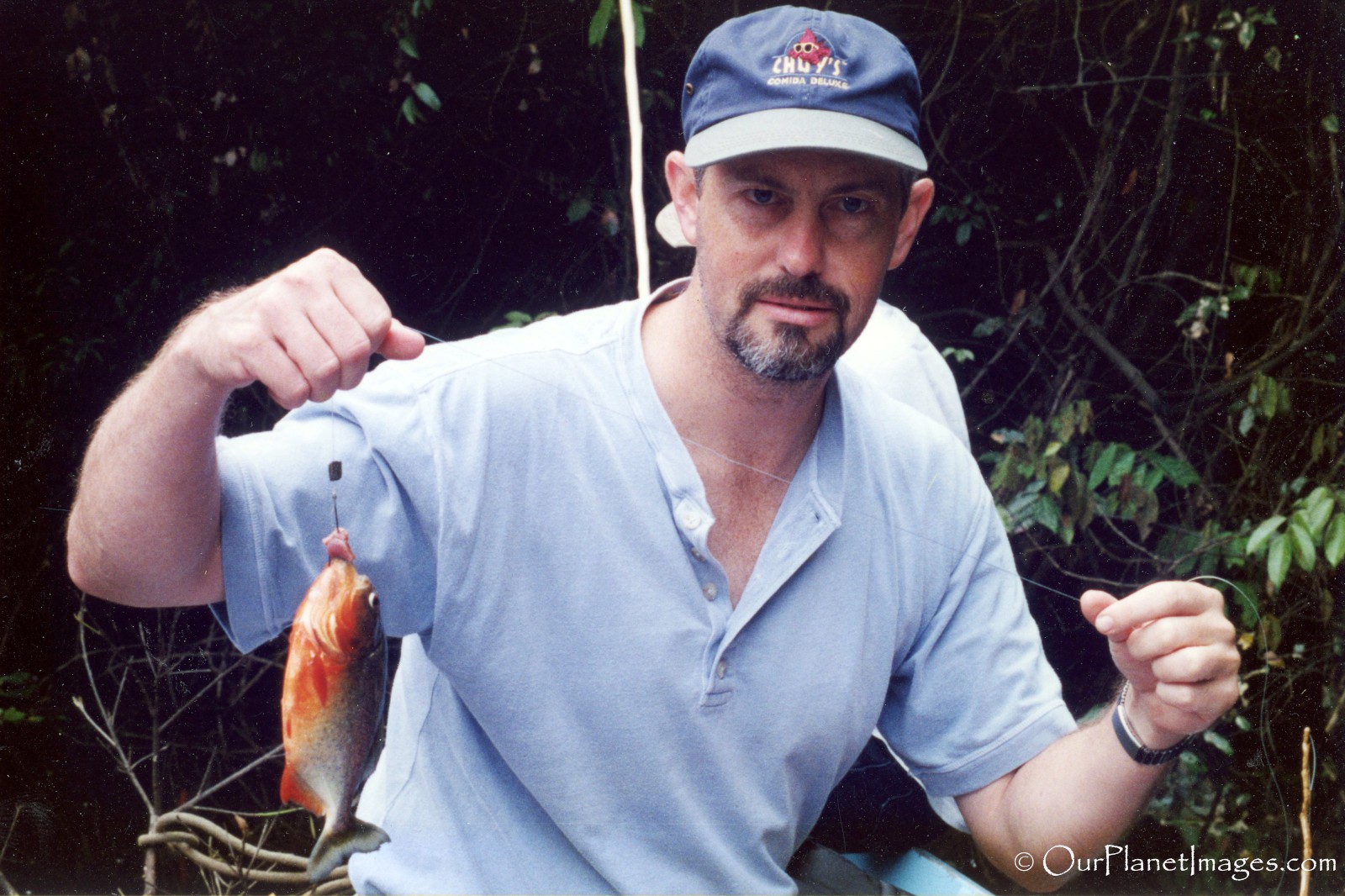
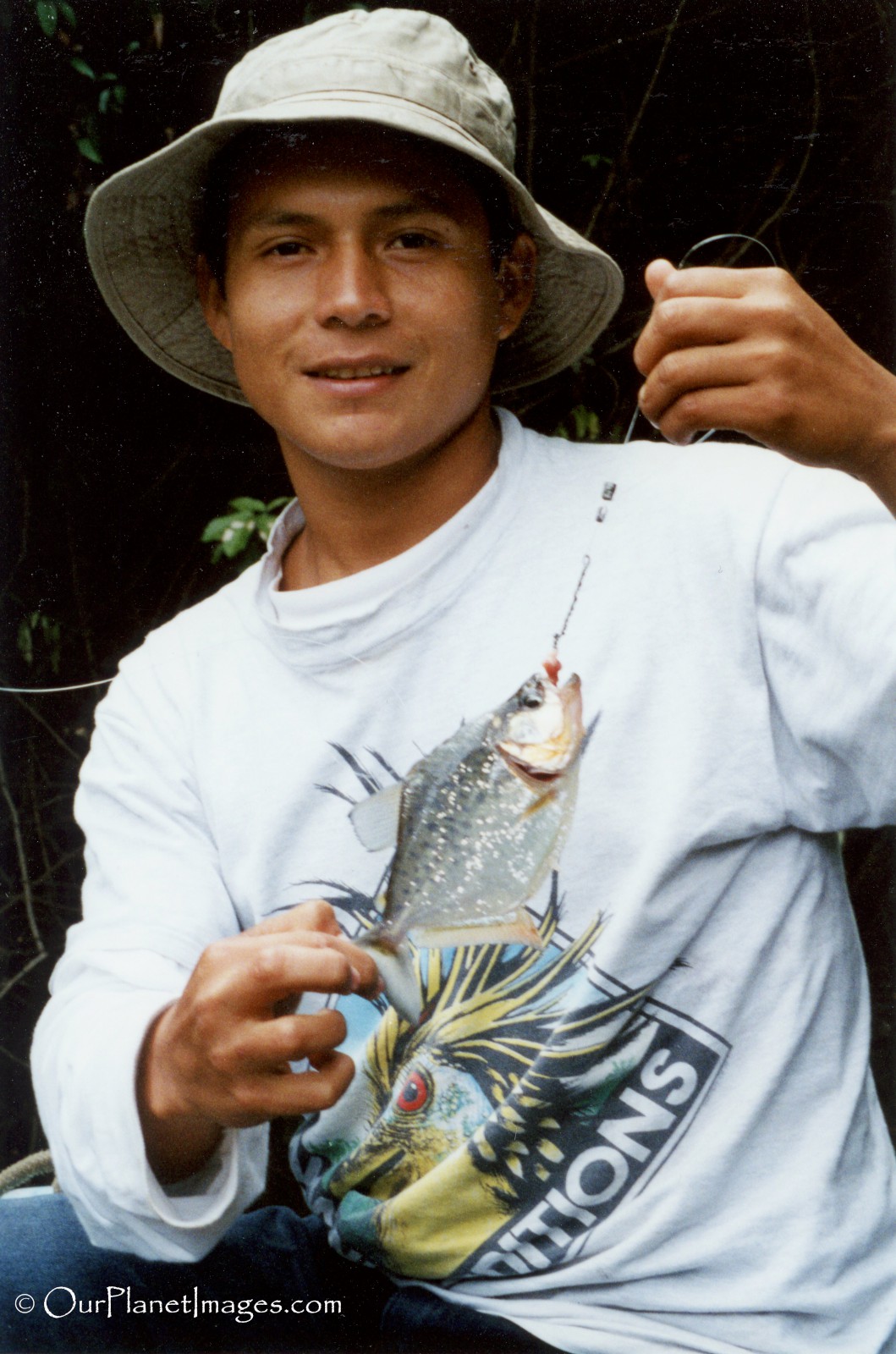
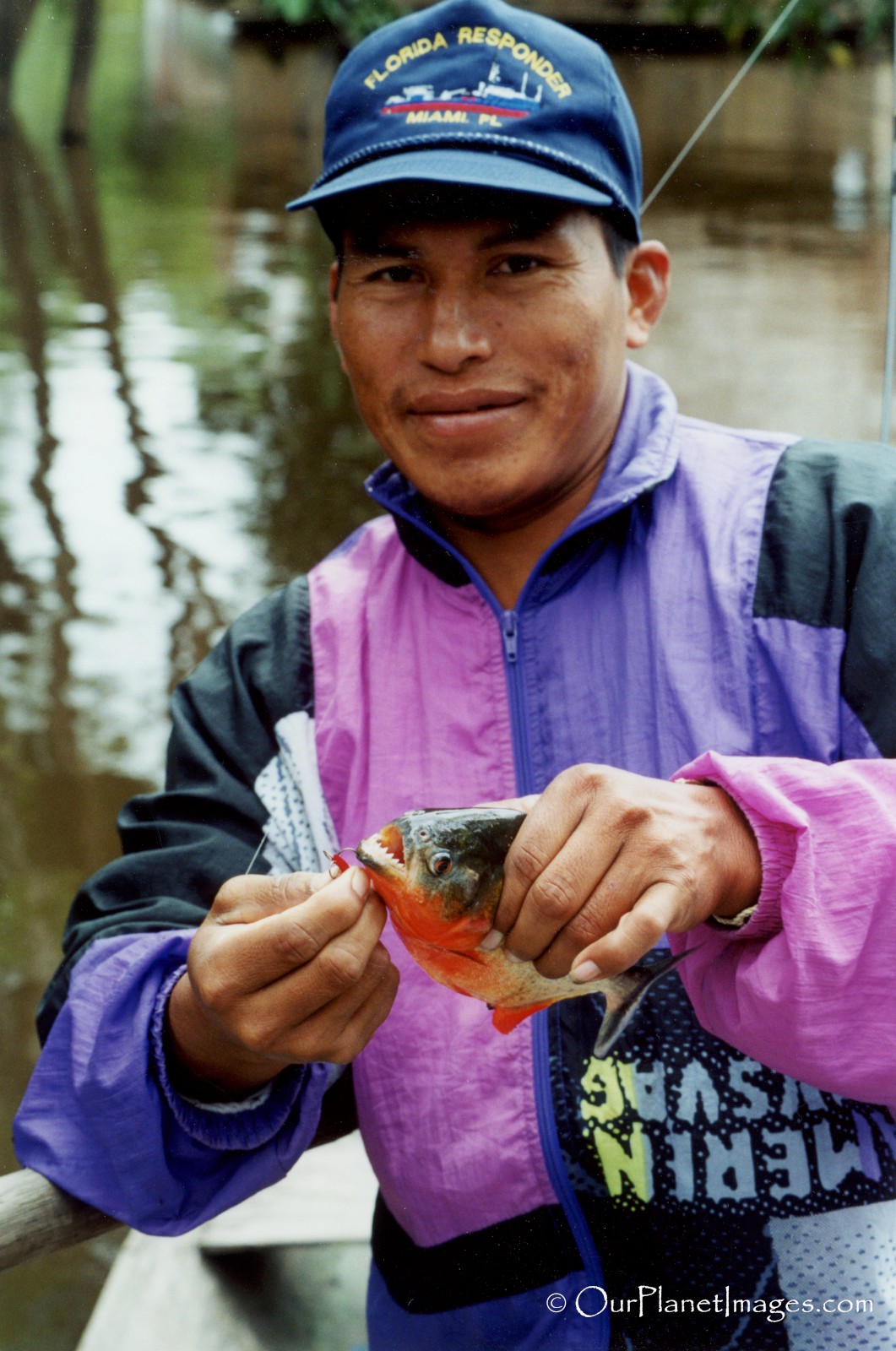
The piranha we caught on the second trip were large enough that we could eat them so we took them back to the lodge and they cooked them for our supper. Many people ask me, “What do piranha taste like?” I say, “Like a perch with an attitude!”
Lots of people can say that they have swam with the dolphin but I can say that I have swam with the piranha and live to tell about it.
Everything I expected and more
My main goal for my trip to the Amazon Rainforest was to have a genuine Amazon Rainforest experience and that is exactly what I got.
I saw the magnitude of the Amazon Rainforest and the Amazon River.
I breathed in the oxygen rich air of the amazon basin.
I saw how the people live in the forest.
I hiked the jungle and created my own trail with machetes.
I got bitten and stung by insects and poked by plants.
I spent a day in the treetop canopy.
I canoed through flooded trees.
I learned what it takes to survive off the jungle.
I saw many animals and lots of beautiful birds along with other strange creatures.
I fished for piranha and swam in the same water where I caught them. Then I eat piranha instead of being eaten by them.
Before arriving in Iquitos, I didn’t know much about life in the Amazon Rainforest. During my time at the Tahuayo Lodge, being with the Amazonia Expeditions guides and genuinely experiencing the rainforest I learned more about the Amazon Rainforest and the Amazon River than I ever could have expected.
Ultimately, I can truly say that my trip to the Amazon Rainforest change who I am!
Sincerely,
Blanco
The Dust on My Shoes
The Amazon Rainforest is the most naturally untouched and rugged place that I have ever visited. The intention of my visit was to experience the Amazon Rainforest in its purest form and I chose a location that would give me that experience.
Going off the Grid
This was not my first trip to go off the grid. My early years of traveling were before communications were everywhere. I went places without a travel agenda and I didn’t know where I would stay when I arrived. When I left home I told my friends and family that I could not be contacted while I was gone and that I would let them know when I returned home. I truly would “get off the grid”. I enjoyed disconnecting from my day-to-day life and completely focusing on the places that I visited.
I still try to disconnecting from my day-to-day life and completely focusing on the places that I visit on my current travels. On my last trip (2022), I went for 32 days and left my phone at home (normal procedure for me). My only communication with my network of people was checking my email every few days. Most people I know can’t be away from their phone for 32 minutes much less 32 days!
Being in the rainforest
Experiencing both the rainforest floor and canopy gave me the feeling that I had the complete picture of life in the tropical jungle. The added bonus of using the rope system to raise myself into the canopy, move between the trees and then repel back down was fantastic. The entire time I was in the canopy I kept thinking about the scene in the movie “The Medicine Man” where Sean Connery was in canopy moving between trees on a rope system. Not many times do you actually get to do something in real life that you have seen in a movie.
Seeing the Wildlife
Seeing the Amazon Rainforest wildlife was a special experience for me. I saw a lot of strange and unusual creature that were in the trees, on the ground and in the water. I wish that I could have stayed longer to see more but no matter how much I would have seen, I would have wanted to see more.
My amazon trip was undoubtedly the roughest trip that I have ever taken, it was also one of my favorite trips. My experience was everything I expected and more! I always have good memories of my time in the Amazon Rainforest!
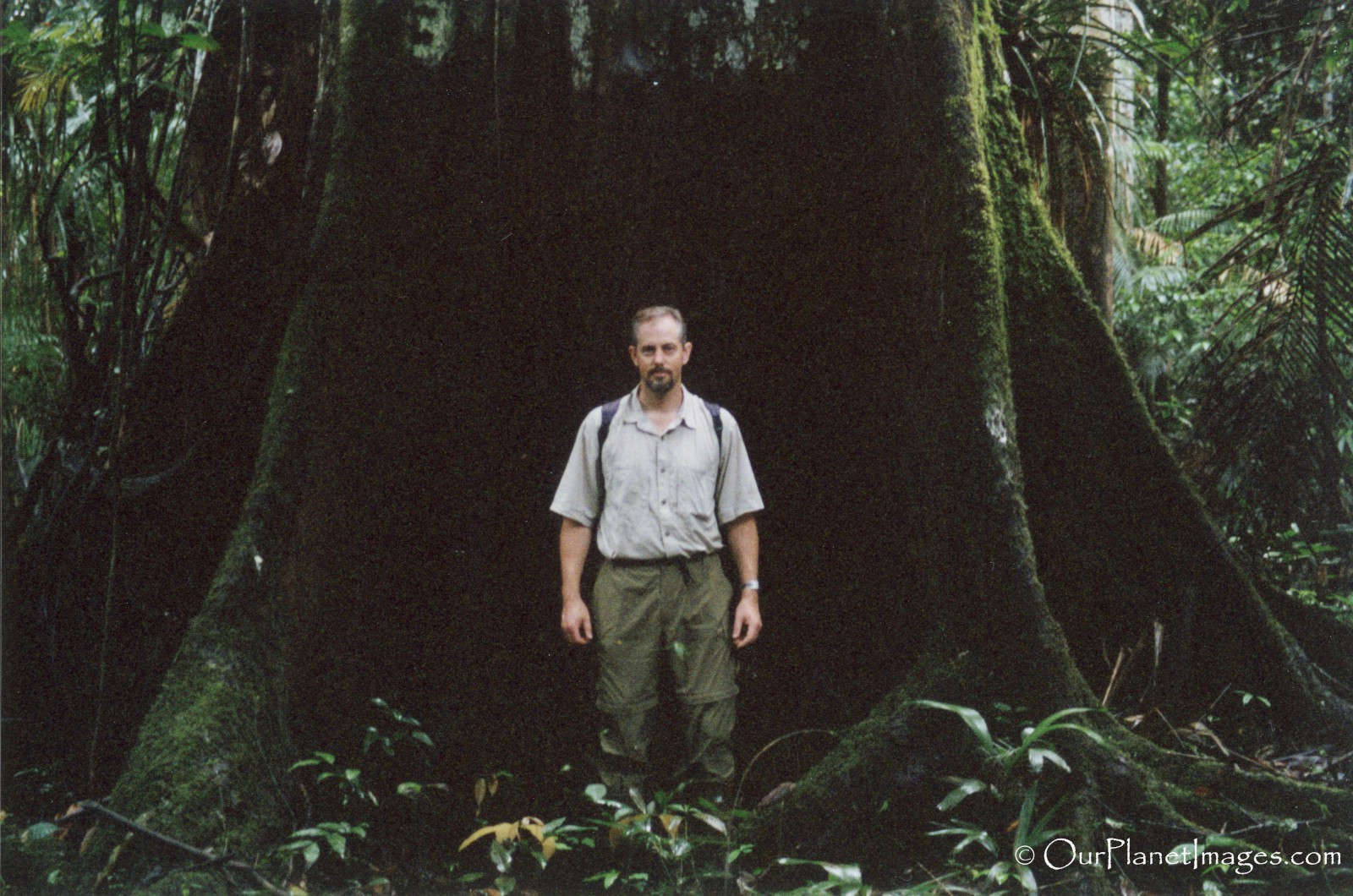
I went to the Amazon Rainforest completely on my own. No one I knew wanted to go with me but it was something that I deeply wanted to do. Getting on a boat alone with a total stranger that is taking me deep into the jungle where there are very few people is a little unnerving but everything that I did on the trip made for a totally amazing trip.
Be true to your heart and see the places that mean the most to you even if you have to go alone.
For me, it was an adventure of a lifetime!
Related Posts
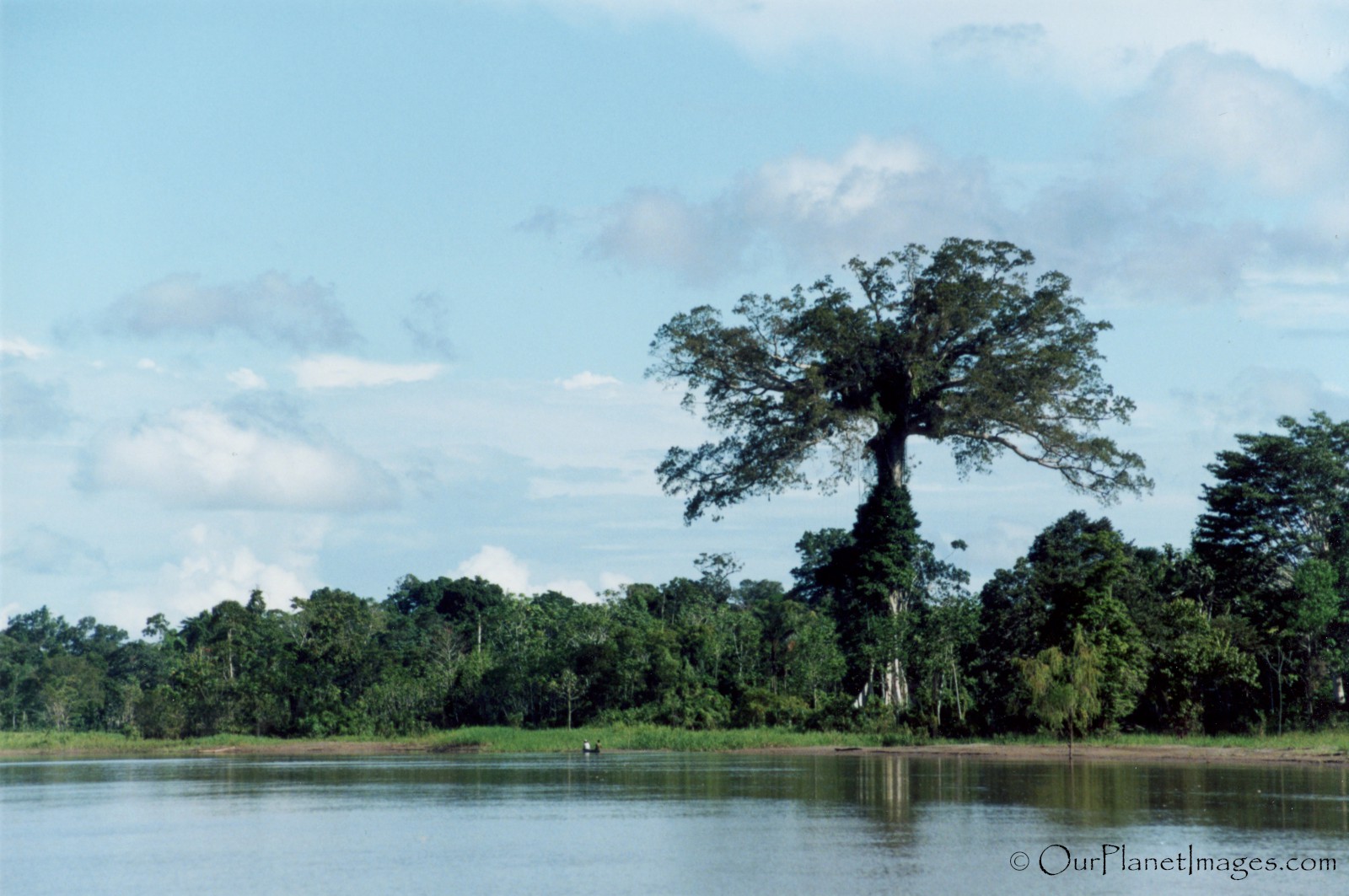
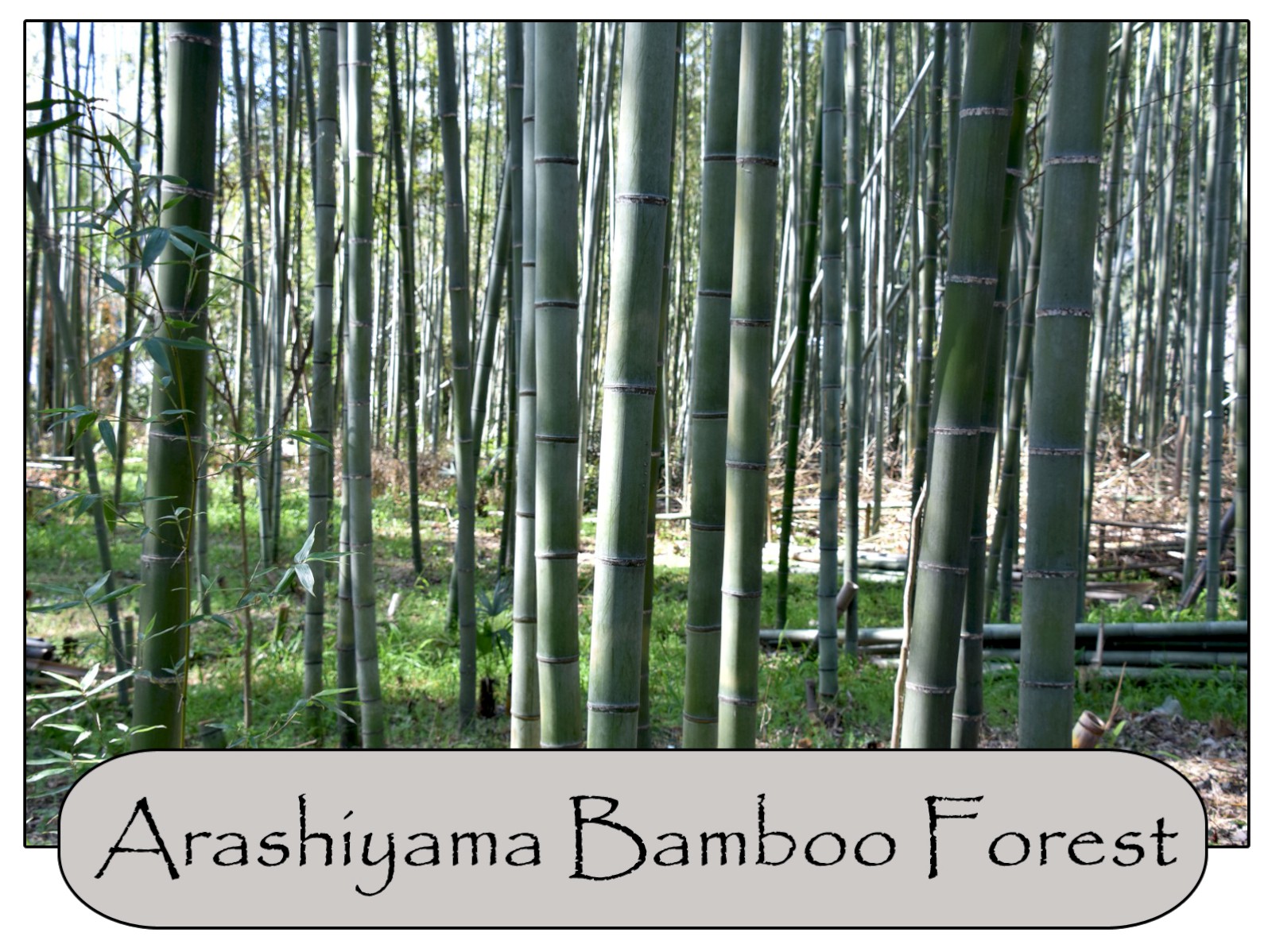
Very cool!
Thanks Kevin!